
The Second Machine Age: Work, Progress, and Prosperity in a Time of Brilliant Technologies
by
Erik Brynjolfsson
and
Andrew McAfee
Published 20 Jan 2014
Bundling benefits both superstars and niche providers by creating a more complete product offering and increasing sales to consumers with different opinions about the values of the bundled products. But markets in which bundling is common also tend to be winner-take-all markets. See Yannis Bakos and Erik Brynjolfsson, Management Science 45, no. 12 (1999); Yannis Bakos and Erik Brynjolfsson, “Bundling and Competition on the Internet,” Marketing Science 19, no. 1 (2000): 63–82, doi:10.1287/mksc.19.1.63.15182. 16. See Michael D. Smith and Erik Brynjolfsson, “Consumer Decision-making at an Internet Shopbot: Brand Still Matters,” NBER (December 1, 2001): 541–58. 17. Catherine Rampell, “College Degree Required by Increasing Number of Companies,” New York Times, February 19, 2013, http://www.nytimes.com/2013/02/20/business/college-degree-required-by-increasing-number-of-companies.html. 18.
…
—Vivek Wadhwa, director of research at Duke University’s Pratt School of Engineering and author of The Immigrant Exodus Also by Erik Brynjolfsson and Andrew McAfee RACE AGAINST THE MACHINE How the Digital Revolution Is Accelerating Innovation, Driving Productivity, and Irreversibly Transforming Employment and the Economy Also by Erik Brynjolfsson WIRED FOR INNOVATION Also by Andrew McAfee ENTERPRISE 2.0 New Collaborative Tools for your Organization’s Toughest Challenges Copyright © 2014 by Erik Brynjolfsson and Andrew McAfee All rights reserved First Edition For information about permission to reproduce selections from this book, write to Permissions, W.
…
Congressional Budget Office, The 2013 Long-Term Budget Outlook, September 2013, p. 95. http://www.cbo.gov/sites/default/files/cbofiles/attachments/44521-LTBO2013.pdf. 4. Robert Solow, “We’d Better Watch Out,” New York Times Book Review, July 12, 1987. 5. Erik Brynjolfsson, “The Productivity Paradox of Information Technology,” Communications of the ACM 36, no. 12 (1993): 66–77, doi:10.1145/163298.163309. 6. See, e.g., Erik Brynjolfsson and Lorin Hitt, “Paradox Lost: Firm Level Evidence on the Returns to Information Systems,” Management Science 42, no. 4 (1996): 541–58. See also Brynjolfsson and Hitt, “Beyond Computation: Information Technology, Organizational Transformation and Business Performance,” Journal of Economic Perspectives 14, no. 4 (2000): 23–48, which summarizes much of the literature on this question. 7.
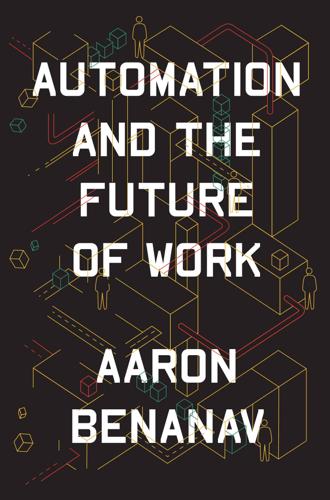
Automation and the Future of Work
by
Aaron Benanav
Published 3 Nov 2020
Third, although automation should entail humanity’s collective liberation from toil, we live in a society where most people must work in order to live, meaning this dream may well turn out to be a nightmare.4 Fourth, therefore, the only way to prevent a mass-unemployment catastrophe—like the one unfolding in the United States in 2020, although for very different reasons—is to institute a universal basic income (UBI), breaking the connection between the size of the incomes people earn and the amount of work they do. The Machines Are Coming Self-described futurists are the major disseminators of this automation discourse. In the widely read Second Machine Age, Erik Brynjolfsson and Andrew McAfee argue that we find ourselves “at an inflection point—a bend in the curve where many technologies that used to be found only in science fiction are becoming everyday reality.” New technologies promise an enormous “bounty,” but, Brynjolfsson and McAfee caution, “there is no economic law that says that all workers, or even a majority of workers, will benefit from these advances.”
…
Manufacturing productivity has been growing at a sluggish pace for decades, leading economist Robert Solow to quip, “We see the computer age everywhere, except in the productivity statistics.”11 Automation theorists discuss this “productivity paradox” as a problem for their account—explaining it in terms of weak demand for products, or the persistent availability of low-wage workers—but they understate its true significance. This is partly due to the appearance of steady labor-productivity growth in US manufacturing, at an average rate of around 3 percent per year since 1950. On that basis, Erik Brynjolfsson and Andrew McAfee suggest, automation could show up in the compounding effects of exponential growth, rather than an uptick in the growth rate.12 However, official US manufacturing growth-rate statistics are vastly overinflated, since they log the production of computers with higher processing speeds as equivalent to the production of more computers.13 For that reason, government statistics suggest that productivity levels in the computers and electronics subsector rose at a galloping average annual rate of over 10 percent per year between 1987 and 2011, even as productivity growth rates outside of that subsector fell to around 2 percent per year over the same period.14 Starting in 2011, trends across the manufacturing sector worsened: real output per person employed in the sector as a whole was lower in 2017 than in 2010.
…
CHAPTER 4 A Low Demand for Labor AT THE CORE OF the automation discourse is the concept of what economist Wassily Leontief called “long-run technological unemployment.” Extrapolating from particular instances of automation-induced job loss, theorists claim to have discovered a general phenomenon: in the coming decades, full automation will supposedly lead to “full unemployment.” Like “whale oil” and “horse labor,” Erik Brynjolfsson and Andrew McAfee suggest in The Second Machine Age, human exertion may soon find itself “no longer needed in today’s economy even at zero price.”1 Were full automation upon us, the resulting jobs apocalypse would quickly demonstrate that social life had to be reorganized so that waged work was no longer at its center.2 The past two chapters cast doubt on this prediction, yet like the automation theorists, I too have argued that the world economy is beset by labor underdemand.

Machine, Platform, Crowd: Harnessing Our Digital Future
by
Andrew McAfee
and
Erik Brynjolfsson
Published 26 Jun 2017
. ‡‡‡ The surprising economics of bundling and sharing for information goods were worked out in a series of papers by Erik with Yannis Bakos, and other coauthors. See, for example, Yannis Bakos and Erik Brynjolfsson, “Bundling Information Goods: Pricing, Profits, and Efficiency,” Management Science 45, no. 12 (1999): 1613–30; Yannis Bakos and Erik Brynjolfsson, “Bundling and Competition on the Internet,” Marketing Science 19, no. 1 (2000): 63–82; and Yannis Bakos, Erik Brynjolfsson, and Douglas Lichtman, “Shared Information Goods,” Journal of Law and Economics 42, no. 1 (1999): 117–56. §§§ The rates are periodically reassessed by a special set of judges on the congressional Copyright Arbitration Royalty Panel (CARP), where Erik had the pleasure of testifying in 2005 about the economics of the industry.
…
Norton, 292–94 Xiaomi, 203 Yahoo, 232–33 Yates, Joanne, 311 Yellow Cab Cooperative, 201 YouTube, 77, 231, 273 Zayner, Josiah, 272 Zervas, Georgios, 223 Zuckerberg, Mark, 8, 10 Also by Andrew McAfee and Erik Brynjolfsson The Second Machine Age: Work, Progress, and Prosperity in a Time of Brilliant Technologies Race against the Machine: How the Digital Revolution Is Accelerating Innovation, Driving Productivity, and Irreversibly Transforming Employment and the Economy Also by Erik Brynjolfsson Wired for Innovation Also by Andrew McAfee Enterprise 2.0: New Collaborative Tools for Your Organization’s Toughest Challenges Copyright © 2017 by Andrew McAfee and Erik Brynjolfsson All rights reserved First Edition For information about permission to reproduce selections from this book, write to Permissions, W.
…
Meehl, “Causes and Effects of My Disturbing Little Book,” Journal of Personality Assessment 50, no. 3 (1986): 370–75, http://www.tandfonline.com/doi/abs/10.1207/s15327752jpa5003_6. 42 Working with the US Census Bureau: Erik Brynjolfsson and Kristina McElheran, “Data in Action: Data-Driven Decision Making in US Manufacturing,” 2016, https://papers.ssrn.com/sol3/papers2.cfm?abstract_id=2722502. Early work using a smaller sample found similar results: Erik Brynjolfsson, Lorin M. Hitt, and Heekyung Hellen Kim, “Strength in Numbers: How Does Data-Driven Decisionmaking Affect Firm Performance?” 2011, https://papers.ssrn.com/sol3/papers2.cfm?abstract_id=1819486. 43 7.5 billion: Worldometers, “Current World Population,” accessed February 26, 2017, http://www.worldometers.info/world-population. 43 “Because System 1 operates automatically”: Kahneman, Thinking, Fast and Slow, p. 28. 44 “1.
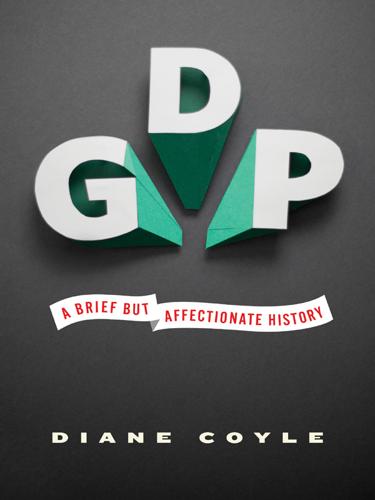
GDP: A Brief but Affectionate History
by
Diane Coyle
Published 23 Feb 2014
Paul Krugman, “Robots and Robber Barons,” New York Times, 9 December 2012, http://www.nytimes.com/2012/12/10/opinion/krugman-robots-and-robber-barons.html?_r=0. 13. Erik Brynjolfsson and Adam Saunders, “What the GDP Gets Wrong,” MIT Sloan Management Review, fall 2009, http://sloanreview.mit.edu/article/what-the-gdp-gets-wrong-why-managers-should-care/. Accessed 27 March 2013. 14. See, for example, “What Good Is the Internet?” Economist, 8 March 2013, http://www.economist.com/blogs/freeexchange/2013/03/technology. Accessed 27 March 2013. 15. Erik Brynjolfsson and JooHee Oh, “The Attention Economy: Measuring the Value of Free Digital Services on the Internet,” MIT working paper, July 2012.
…
But they are also the foundation of long-term growth.11 We find it hard to think straight about productivity anyway. Kelly is comfortable with the idea of robots taking over far more of the work people currently undertake. Some economists have recently, on the contrary, been worried about increasing automation. Paul Krugman waded into the debate, on the heels of the MIT economists Erik Brynjolfsson and Andrew McAfee in their book Race against the Machine. Krugman wrote in his New York Times column: “What’s striking about their examples is that many of the jobs being displaced are high-skill and high-wage; the downside of technology isn’t limited to menial workers. Still, can innovation and progress really hurt large numbers of workers, maybe even workers in general?
…
A related issue is how to account for the value of a specific type of intangible product or service, the purely digital items such as online music, search engines, apps, crowd-sourced encyclopedias or software, and so on. Often these have a price of zero, and with no market price they are not captured in GDP statistics. As Erik Brynjolfsson and Adam Saunders put it, in a nod to the famous statement by Robert Solow about computers, “We see the influence of the information age everywhere, except in the GDP statistics.”13 So, for example, the record industry’s sales of music have declined in dollar terms, but there is almost certainly more rather than less listening to music.

The Sharing Economy: The End of Employment and the Rise of Crowd-Based Capitalism
by
Arun Sundararajan
Published 12 May 2016
Vijay Gurbaxani and Seungjin Whang, “The Impact of Information Systems on Organizations and Markets,” Communications of the ACM 34, 1 (1991), 59–73. 10. Ibid., 71. 11. Ibid., 71–72. 12. See, for example, Erik Brynjolfsson and Lorin Hitt, “Beyond Computation: Information Technology, Organizational Transformation and Business Performance,” Journal of Economic Perspectives 14, 4 (2000): 23–48, or Timothy F. Bresnahan, Erik Brynjolfsson, and Lorin M. Hitt, “Information Technology, Workplace Organization, and the Demand for Skilled Labor: Firm-Level Evidence,” Quarterly Journal of Economics 117 (2002): 339–376, or Prasanna Tambe, Lorin Hitt and Erik Brynjolfsson, “The Extroverted Firm: How External Information Practices Affect Innovation and Productivity,” Management Science 58(2012): 678-697. 13.
…
Some that were quite influential early on were with Odile Beniflah, Lauren Capelin, Shelby Clark, Sunil Paul, Jessica Scorpio, Erica Swallow, Molly Turner, and Hal Varian. Some of the others that were especially notable and/or frequent were with Bhavish Aggarwal, Alisha Ali, Douglas Atkin, Michel Avital, Emily Badger, Mara Balestrini, Yochai Benkler, Rachel Botsman, danah boyd, Nathan Blecharczyk, Jennifer Bradley, Erik Brynjolfsson, Valentina Carbone, Emily Castor, David Chiu, Marc-David Chokrun, Sonal Choksi, Peter Coles, Chip Conley, Ariane Conrad, Arnab Das, Cristian Fleming (and his team at the Public Society), Richard Florida, Natalie Foster, Justin Fox, Liz Gannes, Lisa Gansky, Marina Gorbis, Neal Gorenflo, Alison Griswold, Vijay Gurbaxani, Tanner Hackett, Aassia Haroon Haq, Scott Heiferman, Jeremy Heimans, Sara Horowitz, Sam Hodges, Milicent Johnson, Noah Karesh, Stephane Kasriel, Sarah Kessler, David Kirkpatrick, Marjo Koivisto, Karim Lakhani, Kevin Laws, Michael Luca, Benita Matofska, Andrew McAfee, Ryan McKillen, Lesa Mitchell, Amy Nelson, Jeff Nickerson, Melissa O’Young, Janelle Orsi, Jeremy Osborn, Jeremiah Owyang (to whom I owe a special debt of gratitude for his remarkably selfless sharing of ideas and data), Wrede Petersmeyer, Ai-Jen Poo, Andrew Rasiej, Simone Ross, Anita Roth, Chelsea Rustrum, Carolyn Said, Marcela Sapone, Marie Schneegans, Trebor Scholz, Swati Sharma, Clay Shirky, Dane Stangler, Alex Stephany, James Surowiecki, Jason Tanz, Marie Ternes, Henry Timms, Viv Wang, Cheng Wei, Adam Werbach, Jamie Wong, Caroline Woolard, and numerous members of the OuiShare collective (including Flore Berlingen, Julie Braka, Albert Cañigueral, Simone Cicero, Javier Creus, Arthur De Grave, Elena Denaro, Diana Fillipova, Marguerite Grandjean, Asmaa Guedira, Ana Manzanedo, Bernie Mitchell, Edwin Mootoosamy, Ruhi Shamim, Maeva Tordo and especially Francesca Pick).
…
Gurbaxani and Whang, however, maintain that either type of growth may be promoted by digital technologies, and that the direction or shift of economic activity cannot be clearly predicted. So, what has transpired since? Digital technologies permeate the economy today, but the enduring changes have not moved the organization of economic activity in any one specific direction. As MIT economist Erik Brynjolfsson and his collaborators (Lorin Hitt of the University of Pennsylvania, Timothy Bresnahan of Stanford University, and my NYU colleague Prasanna Tambe, among others) have discovered in a series of studies, digital technologies hold the potential to dramatically improve the productivity of economic activity organized within companies, but such productivity gains only accrue to those firms (about 20% of all firms in their studies) that also invest in a series of “complementary organizational changes,” like the redesign of work, an increase in performance-based pay, an increased empowerment of workers, and a flattening of the hierarchy.12 We have also witnessed a wide range of outsourcing that has been enabled by digital technologies, as Dartmouth’s James Quinn described in detail in his MIT Sloan Management Review article.13 Today, for example, a vast majority of firms outsource all or part of their employee tech support and call-center operations, and almost all of high-tech manufacturing is done by a few giant firms based in China, Taiwan, and South Korea.
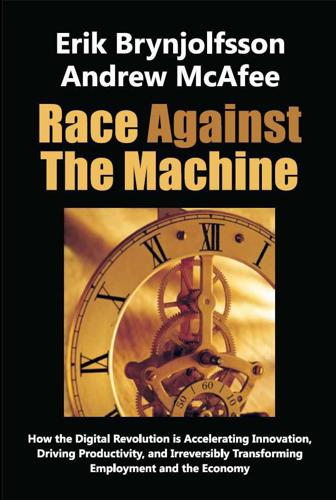
Race Against the Machine: How the Digital Revolution Is Accelerating Innovation, Driving Productivity, and Irreversibly Transforming Employment and the Economy
by
Erik Brynjolfsson
Published 23 Jan 2012
Race Against the Machine How the Digital Revolution is Accelerating Innovation, Driving Productivity, and Irreversibly Transforming Employment and the Economy. Erik Brynjolfsson and Andrew McAfee Digital Frontier Press Lexington, Massachusetts © 2011 Erik Brynjolfsson and Andrew McAfee All rights reserved. No part of the book may be reproduced in any form by any electronic or mechanical means (including photocopying, recording, or information storage and retrieval) without permission in writing from the publisher. For information about quantity discounts, email info@raceagainstthemachine.com www.RaceAgainstTheMachine.com Library of Congress Cataloging-in-Publication Data Brynjolfsson, Erik Race against the machine : how the digital revolution is accelerating innovation, driving productivity, and irreversibly transforming employment and the economy.
…
Ever-greater investments in education, dramatically increasing the average educational level of the American workforce, helped prevent inequality from soaring as technology automated more and more unskilled work. While education is certainly not synonymous with skill, it is one of the most easily measurable correlates of skill, so this pattern suggests that demand for upskilling has increased faster than its supply. Studies by this book’s co-author Erik Brynjolfsson along with Timothy Bresnahan, Lorin Hitt, and Shinku Yang found that a key aspect of SBTC was not just the skills of those working with computers, but more importantly the broader changes in work organization that were made possible by information technology. The most productive firms reinvented and reorganized decision rights, incentives systems, information flows, hiring systems, and other aspects of organizational capital to get the most from the technology.
…
The MIT Center for Digital Business (CDB) has been the ideal home from which to conduct this work, and we’re particularly grateful to our colleague David Verrill, executive director of the CDB. David makes the place run beautifully; he’ll be the last person ever replaced by a machine. We claim sole ownership of virtually none of the ideas presented here, but we’re emphatic that all the mistakes are 100% ours. Authors Erik Brynjolfsson is a professor at the MIT Sloan School of Management, Director of the MIT Center for Digital Business, Chairman of the Sloan Management Review, a research associate at the National Bureau of Economic Research, and co-author of Wired for Innovation: How IT Is Reshaping the Economy. He graduated from Harvard University and MIT.
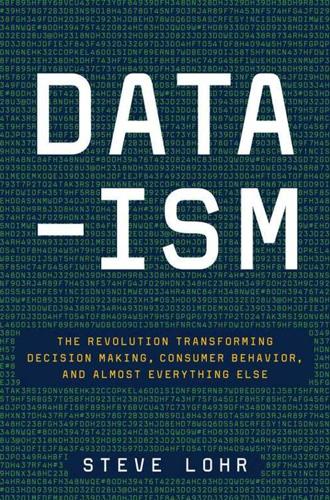
Data-Ism: The Revolution Transforming Decision Making, Consumer Behavior, and Almost Everything Else
by
Steve Lohr
Published 10 Mar 2015
For other parts of the book, there were people I spent whole days with, such as Timothy Buchman at the Emory medical center in Atlanta and Nick Dokoozlian in the grape vineyards of central California and Michael Haydock in suburban Minneapolis. Many others were interviewed for this book. They include Sam Adams, Brooke Barrett, Richard Berner, Patrick Bosworth, Thomas Botts, Erik Brynjolfsson, John Calkins, Murray Campbell, Dennis Charney, Herbert Chase, Jeffrey Chester, Sharath Cholleti, Adam D’Angelo, Arne Duncan, Sue Duncan, Tony Fadell, Edward Felten, David Ferrucci, Rachana Shah Fischer, Brian Gehlich, Jim Goodnight, Nagui Halim, Hendrik Hamann, Glenn Hammerbacher, Lenore Hammerbacher, Danny Hillis, Jeffrey Immelt, Jon Iwata, James Kalina, Kaan Katircioglu, Gary King, Jon Kleinberg, Martin Kohn, Randy Komisar, Patricia Kovatch, Edward Lazowska, and Michael Linderman.
…
The librarian choice is entirely logical, until you get the data Kahneman knew in advance. The data makes you rethink your intuition. The prospect of such data-animated nudges to sharpen decision making, repeated countless times, up and down corporations, throughout the economy, is the why Erik Brynjolfsson believes big data will bring a “management revolution.” Brynjolfsson is an economist at the Massachusetts Institute of Technology’s Sloan School of Management, director of the MIT Center for Digital Business, and an intellectual champion for the transformative power of big data. He is tall, with deep-set eyes, reddish-brown hair, and a trimmed beard and mustache.
…
Today, the manufacturing share of the labor force has declined to about 8 percent, even as the nation’s manufacturing output has increased sharply in value over the decades. Yet even techno-optimists have second thoughts as they see smarter machines likely to take on cognitive tasks long reserved for humans—when what is being replaced is not sweat but synapses. In The Second Machine Age, Erik Brynjolfsson and Andrew McAfee of MIT make the case for a technology-led surge in productivity and growth in the future, but one that will have more sweeping and disruptive effects on society than previous waves of automation. The book, published in 2014, calls for adaptive changes in policy, education, and skills training to prevent more and more workers from being left behind.

The Hype Machine: How Social Media Disrupts Our Elections, Our Economy, and Our Health--And How We Must Adapt
by
Sinan Aral
Published 14 Sep 2020
Our friendships, economy, and society now depend on billions of social media connections around the world and no one on the planet understands them better than Sinan Aral. In this lively, engaging masterpiece, drawing on his twenty years of pioneering research, Aral separates hype from reality, clarifies our most pressing challenges, and explains how we must respond.” —ERIK BRYNJOLFSSON, director of the Stanford Digital Economy Lab and bestselling co-author of The Second Machine Age “In a sea of books about social media, this is the one to read. Sinan Aral understands the new social age like no one else, and The Hype Machine offers the single best examination of how social media works, what it does to us, and how we can make it better for consumers, citizens, and democracies.
…
In that moment, sitting in Dewey Library, I had an epiphany: Digital social networking was going to turbocharge how information, behavior, economic opportunity, and political ideology flowed between people. It was going to transform society as we knew it and affect everything from business to politics to public health. I remember running to the nearest Pine terminal (a computer program for sending email) and sending an email to my PhD adviser, Erik Brynjolfsson, to request a meeting. I met Erik the next day and explained that I wanted to focus my PhD dissertation on digital social networks. I told him that I thought these networks were going to be the next big thing in personal computing and that they were going to transform society. Now, Erik didn’t study social networks, and he hadn’t ever formally thought about graph theory.
…
Are we more likely to be swayed by the opinions of our friends when shopping for high-status goods, like a Rolex watch or a luxury car, or experience goods, like hotels and restaurants, which require us to experience the products or to hear about the experiences of others to evaluate them? To find out, Shan Huang, Jeffrey Hu, Erik Brynjolfsson, and I conducted an even larger, more comprehensive experiment in collaboration with WeChat, the largest social platform in China. We randomly assigned the number of social cues shown to 37 million WeChat users in their “moments” ads across seventy-one products in twenty-five categories and analyzed the differences in social advertising effectiveness across products.
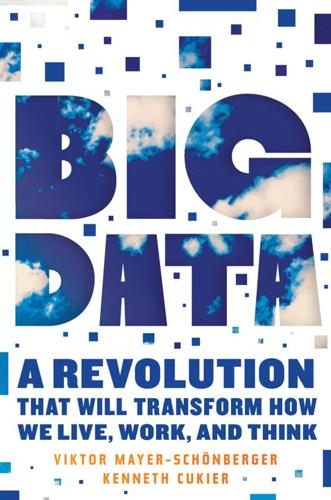
Big Data: A Revolution That Will Transform How We Live, Work, and Think
by
Viktor Mayer-Schonberger
and
Kenneth Cukier
Published 5 Mar 2013
The-Numbers.com—Cukier interviews with Bruce Nash, October 2011 and July 2012. [>] Brynjolfsson study—Erik Brynjolfsson, Lorin Hitt, and Heekyung Kim, “Strength in Numbers: How Does Data-Driven Decisionmaking Affect Firm Performance?” working paper, April 2011 (http://papers.ssrn.com/sol3/papers.cfm?abstract_id=1819486). [>] On Rolls-Royce—See “Rolls-Royce: Britain’s Lonely High-Flier,” The Economist, January 8, 2009 (http://www.economist.com/node/12887368). Figures updated from press office, November 2012. Erik Brynjolfsson, Andrew McAfee, Michael Sorell, and Feng Zhu, “Scale Without Mass: Business Process Replication and Industry Dynamics,” Harvard Business School working paper, September 2006 (http://www.hbs.edu/research/pdf/07-016.pdf also http://hbswk.hbs.edu/item/5532.html). [>] On the movement toward increasingly large data holders—See also Yannis Bakos and Erik Brynjolfsson, “Bundling Information Goods: Pricing, Profits, and Efficiency,” Management Science 45 (December 1999), pp. 1613–30. [>] Philip Evans—Interviews with the authors, 2011 and 2012. 8.
…
In another case, Nash informed the IMAX studio that a sailing documentary would probably be profitable only if its $12 million budget was reduced to $8 million. “It made the producer happy—the director less so,” says Nash. From whether to make a movie to what shortstop to sign, the shift in corporate decision-making is beginning to show up on bottom lines. Erik Brynjolfsson, a business professor at MIT’s Sloan School of Management, and his colleagues studied the performance of companies that excel at data-driven decision-making and compared it with the performance of other firms. They found that productivity levels were as much as 6 percent higher at such firms than at companies that did not emphasize using data to make decisions.
…
Erik Brynjolfsson, Andrew McAfee, Michael Sorell, and Feng Zhu, “Scale Without Mass: Business Process Replication and Industry Dynamics,” Harvard Business School working paper, September 2006 (http://www.hbs.edu/research/pdf/07-016.pdf also http://hbswk.hbs.edu/item/5532.html). [>] On the movement toward increasingly large data holders—See also Yannis Bakos and Erik Brynjolfsson, “Bundling Information Goods: Pricing, Profits, and Efficiency,” Management Science 45 (December 1999), pp. 1613–30. [>] Philip Evans—Interviews with the authors, 2011 and 2012. 8. Risks [>] On the Stasi—Much of the literature unfortunately is in German, but one well researched exception is Kristie Macrakis, Seduced by Secrets: Inside the Stasi’s Spy-Tech World (Cambridge University Press, 2008); a very personal story is shared in Timothy Garton Ash, The File (Atlantic Books, 2008).

The Singularity Is Nearer: When We Merge with AI
by
Ray Kurzweil
Published 25 Jun 2024
A Look at the Numbers,” TED video, April 2018, https://www.ted.com/talks/steven_pinker_is_the_world_getting_better_or_worse_a_look_at_the_numbers. BACK TO NOTE REFERENCE 79 For Erik Brynjolfsson’s views in more detail, see Erik Brynjolfsson, “The Key to Growth? Race with the Machines,” TED, February 2013, https://www.ted.com/talks/erik_brynjolfsson_the_key_to_growth_race_with_the_machines; Erik Brynjolfsson et al., Mind vs Machine: Implications for Productivity, Wages and Employment from AI,” The Artificial Intelligence Channel, YouTube video, November 20, 2017, https://www.youtube.com/watch?v=roemLDPy_Ww; Erik Brynjolfsson and Andrew McAfee, The Second Machine Age: Work, Progress, and Prosperity in a Time of Brilliant Technologies (New York: W.W.
…
This is despite the continual (and accurate) perception that major categories of employment are about to disappear.[79] Is This Time Different? Despite the long pattern of net job growth, some prominent economists have predicted that this time will be different. One of the leading proponents of the view that the upcoming onslaught of AI-based automation will be a net job killer has been Stanford professor Erik Brynjolfsson. He argues that, unlike previous technology-driven transitions, the latest form of automation will result in a loss of more jobs than it creates.[80] Economists who take this view see the current situation as the culmination of several successive waves of change. The first wave is often referred to as “deskilling.”[81] For example, a driver of a horse-drawn carriage who needed extensive skills at handling and maintaining unpredictable animals was replaced by an automobile driver who required fewer such abilities.
…
When MIT bought the IBM 7094 computer I used as an undergraduate for around $3.1 million in 1963, that counted for, well, $3.1 million ($30 million in 2023 dollars) in economic activity.[91] A smartphone today is hundreds of thousands of times more powerful in terms of computation and communication and has myriad capabilities that did not exist at any price in 1965, yet it counts for only a few hundred dollars of economic activity, because that is what you paid for it. This general explanation for the missing productivity has also been notably advanced by Erik Brynjolfsson and venture capitalist Marc Andreessen.[92] As a condensed explanation, gross domestic product measures economic activity via the prices of all finished goods and services in a country. So if you pay $20,000 for a new car, that adds $20,000 to that year’s GDP—even if you would have been willing to pay $25,000 or $30,000 for the same car.
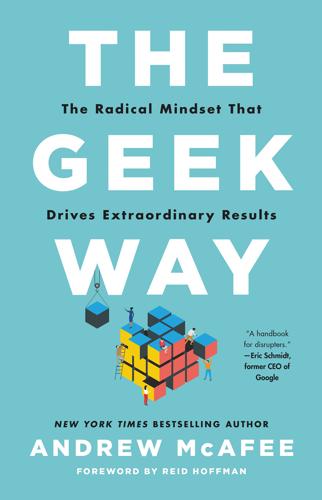
The Geek Way: The Radical Mindset That Drives Extraordinary Results
by
Andrew McAfee
Published 14 Nov 2023
About the Author Andrew McAfee is a principal research scientist at the MIT Sloan School of Management and the cofounder of the MIT Initiative on the Digital Economy. He studies how technological progress changes the world. He lives in Cambridge, Massachusetts. Also by Andrew McAfee More from Less Machine | Platform | Crowd (with Erik Brynjolfsson) The Second Machine Age (with Erik Brynjolfsson) Race Against the Machine (with Erik Brynjolfsson) Enterprise 2.0
…
I wrote cases about online retailers, software and hardware startups, and entirely new kinds of companies like search engines and social networks. All of this work gave me a front-row seat to how digital technologies were reshaping the business world. In 2009, after a decade on the faculty at HBS, I returned to the MIT Sloan School of Management. I started collaborating with economist Erik Brynjolfsson, a great scholar of technology and information.2 We shared a sense that something big was unfolding right in front of us—something as big as the Industrial Revolution. As we wrote in our 2014 book, The Second Machine Age, “The Industrial Revolution… allowed us to overcome the limitations of muscle power, human and animal, and generate massive amounts of useful energy at will… Now comes the second machine age.
…
And they needed very little encouragement to embrace the geek way and start productively arguing with me. I bounced ideas and manuscript drafts off many people, and each of the resulting conversations helped me see some aspect of the book better. I want to thank Andrew Anagnost, Sinan Aral, Matt Beane, Erik Brynjolfsson, Thomas Buberl, Ed and Leslie Fine, Carter Gaffney, Adam Grant, Nancy Haller, Maika Hemphill, Carole Hooven, Karen Karniol-Tambour, Vanya Koonce, Ruth Luscombe, David McAfee, James Milin, Michael Muthukrishna, Krizia Quarta, Daniel Rock, Jonathan Ruane, Amy Shepherd, Mustafa Suleyman, David Verrill, and Katherine Zarrella.

AI Superpowers: China, Silicon Valley, and the New World Order
by
Kai-Fu Lee
Published 14 Sep 2018
suffer stagnant wages: Robert Allen, “Engel’s Pause: A Pessimist’s Guide to the British Industrial Revolution,” University of Oxford Department of Economics Working Papers, April 2007, https://www.economics.ox.ac.uk/department-of-economics-discussion-paper-series/engel-s-pause-a-pessimist-s-guide-to-the-british-industrial-revolution. technologies that “really matter”: Erik Brynjolfsson and Andrew McAfee, The Second Machine Age: Work, Progress, and Prosperity in a Time of Brilliant Technologies (New York: Norton, 2014), 75–77. “the great decoupling”: Erik Brynjolfsson and Andrew McAfee, “Jobs, Productivity and the Great Decoupling,” New York Times, December 11, 2012, http://www.nytimes.com/2012/12/12/opinion/global/jobs-productivity-and-the-great-decoupling.html. doubled its share: Eduardo Porter and Karl Russell, “It’s an Unequal World.
…
The ramifications of these breakthroughs will cut across dozens of industries, with the potential to fundamentally alter economic processes and even social organization. These are what economists call general purpose technologies, or GPTs. In their landmark book The Second Machine Age, MIT professors Erik Brynjolfsson and Andrew McAfee described GPTs as the technologies that “really matter,” the ones that “interrupt and accelerate the normal march of economic progress.” Looking only at GPTs dramatically shrinks the number of data points available for evaluating technological change and job losses. Economic historians have many quibbles over exactly which innovations of the modern era should qualify (railroads?
…
In recent years, he has been warning against the no-questions-asked optimism around technological change and employment. “The answer is surely not to try to stop technical change,” Summers told the New York Times in 2014, “but the answer is not to just suppose that everything’s going to be O.K. because the magic of the market will assure that’s true.” Erik Brynjolfsson has issued similar warnings about the growing disconnect between the creation of wealth and jobs, calling it “the biggest challenge of our society for the next decade.” AI: PUTTING THE G IN GPT What does all this have to do with AI? I am confident that AI will soon enter the elite club of universally recognized GPTs, spurring a revolution in economic production and even social organization.

Big Data at Work: Dispelling the Myths, Uncovering the Opportunities
by
Thomas H. Davenport
Published 4 Feb 2014
It’s not yet clear at what pace managers will adopt these new approaches. But h istory would indicate that it’s unlikely. After all, small data analytics have been around for decades, yet many managers still make gutbased decisions—and power and politics certainly are unlikely to disappear from organizations anytime soon. And while my friends Erik Brynjolfsson and Andy McAfee talk and write often about the decline in importance of the “Hippo”—the highest-paid person’s Chapter_01.indd 27 03/12/13 3:24 AM 28 big data @ work opinion—such animals are hardly extinct in the organizations I visit (though it would certainly be desirable if this transpired quickly).19 If you count on the disappearance of power and politics from decision making, you are likely to be disappointed—at least in the short run.
…
Appendix.indd 205 03/12/13 2:14 PM 206 Appendix The following questions are largely modified from a set used by the International Institute for Analytics to assess analytical capabilities. I have also drawn in small measure from questions created to assess big data readiness by MIT researchers Erik Brynjolfsson and Andy McAfee.1 The questions can be applied to an entire organization or to a business unit within it. Whoever replies to the questions should be familiar with the entire organization or unit’s approaches to big data. Data ——— We have access to very large, unstructured, or fast-moving data for analysis. ——— We integrate data from multiple internal sources into a data warehouse or mart for easy access. ——— We integrate external data with internal to facilitate high-value analysis of our business environment. ——— We maintain consistent definitions and standards across the data we use for analysis. ——— Users, decision makers, and product developers trust the quality of our data.
…
Alon Halevy, Peter Norvig, and Fernando Pereira, “The Unreasonable Effectiveness of Data,” IEEE Intelligent Systems, March 2009, 8–12. 18. Pew Research Center, Internet Users Don’t Like Targeted Ads, March 13, 2012, http://www.pewresearch.org/daily-number/internet-users-dont-like-targeted-ads/. 19. Andrew McAfee and Erik Brynjolfsson, “Big Data: The Management Revolution,” Harvard Business Review, October 2012, 60–68. Chapter 2 1. “88 Acres: How Microsoft Quietly Built the City of the Future,” http://www .microsoft.com/en-us/news/stories/88acres/88-acres-how-microsoft-quietly-builtthe-city-of-the-future-chapter-1.aspx. 2.

The Fourth Industrial Revolution
by
Klaus Schwab
Published 11 Jan 2016
Digital technologies that have computer hardware, software and networks at their core are not new, but in a break with the third industrial revolution, they are becoming more sophisticated and integrated and are, as a result, transforming societies and the global economy. This is the reason why Massachusetts Institute of Technology (MIT) Professors Erik Brynjolfsson and Andrew McAfee have famously referred to this period as “the second machine age”2, the title of their 2014 book, stating that the world is at an inflection point where the effect of these digital technologies will manifest with “full force” through automation and and the making of “unprecedented things”.
…
Here, in particular, I thank members of the Emerging Technologies taskforce: David Gleicher, Rigas Hadzilacos, Natalie Hatour, Fulvia Montresor and Olivier Woeffray – and the many others who spent time thinking deeply about these issues: Chidiogo Akunyili, Claudio Cocorocchia, Nico Daswani, Mehran Gul, Alejandra Guzman, Mike Hanley, Lee Howell, Jeremy Jurgens, Bernice Lee, Alan Marcus, Adrian Monck, Thomas Philbeck and Philip Shetler-Jones. My deep gratitude also goes to all members of the Forum community who helped shape my thinking about the fourth industrial revolution. I am particularly thankful to Andrew McAfee and Erik Brynjolfsson for inspiring my ideas on the impact of technological innovation and the great challenges and opportunities that lie ahead, and to Dennis Snower and Stewart Wallis for underscoring the need for values-based narratives if we are to succeed in harnessing the fourth industrial revolution for the global good.
…
SharpBrains, USA, Nov 10 http://sharpbrains.com/blog/2015/11/10/10-neurotechnologies-about-to-transform-brain-enhancement-and-brain-health/ Notes 1 The terms “disruption” and “disruptive innovation” have been much discussed in business and management strategy circles, most recently in Clayton M. Christensen, Michael E. Raynor, and Rory McDonald, What is Disruptive Innovation?, Harvard Business Review, December 2015. While respecting the concerns of Professor Christensen and his colleagues about definitions, I have employed the broader meanings in this book. 2 Erik Brynjolfsson and Andrew McAfee, The Second Machine Age: Work, Progress, and Prosperity in a Time of Brilliant Technologies, W.W. Norton & Company, 2014. 3 James Manyika and Michael Chui, “Digital Era Brings Hyperscale Challenges”, The Financial Times, 13 August 2014. 4 The designer and architect Neri Oxman offers a fascinating example of what I just described.

Prediction Machines: The Simple Economics of Artificial Intelligence
by
Ajay Agrawal
,
Joshua Gans
and
Avi Goldfarb
Published 16 Apr 2018
Agrawal, Gans, and Goldfarb not only understand its essence but also deliver deep insights into its economic implications and intrinsic trade-offs. If you want to clear the fog of AI hype and see clearly the core of AI’s challenges and opportunities for society, your first step should be to read this book.” — ERIK BRYNJOLFSSON, MIT professor; author, The Second Machine Age and Machine, Platform, Crowd “ Prediction Machines is a must-read for business leaders, policy makers, economists, strategists, and anyone who wants to understand the implications of AI for designing business strategies, decisions, and how AI will have an impact on our society
…
In particular, we thank Abe Heifets of Atomwise, Liran Belanzon of BenchSci, Alex Shevchenko of Grammarly, Marc Ossip, and Ben Edelman for the time they spent with us in interviews, as well as Kevin Bryan for his comments on the overall manuscript. Also, we thank our colleagues for discussions and feedback, including Nick Adams, Umair Akeel, Susan Athey, Naresh Bangia, Nick Beim, Dennis Bennie, James Bergstra, Dror Berman, Vincent Bérubé, Jim Bessen, Scott Bonham, Erik Brynjolfsson, Andy Burgess, Elizabeth Caley, Peter Carrescia, Iain Cockburn, Christian Catalini, James Cham, Nicolas Chapados, Tyson Clark, Paul Cubbon, Zavain Dar, Sally Daub, Dan Debow, Ron Dembo, Helene Desmarais, JP Dube, Candice Faktor, Haig Farris, Chen Fong, Ash Fontana, John Francis, April Franco, Suzanne Gildert, Anindya Ghose, Ron Glozman, Ben Goertzel, Shane Greenstein, Kanu Gulati, John Harris, Deepak Hegde, Rebecca Henderson, Geoff Hinton, Tim Hodgson, Michael Hyatt, Richard Hyatt, Ben Jones, Chad Jones, Steve Jurvetson, Satish Kanwar, Danny Kahneman, John Kelleher, Moe Kermani, Vinod Khosla, Karin Klein, Darrell Kopke, Johann Koss, Katya Kudashkina, Michael Kuhlmann, Tony Lacavera, Allen Lau, Eva Lau, Yann LeCun, Mara Lederman, Lisha Li, Ted Livingston, Jevon MacDonald, Rupam Mahmood, Chris Matys, Kristina McElheran, John McHale, Sanjog Misra, Matt Mitchell, Sanjay Mittal, Ash Munshi, Michael Murchison, Ken Nickerson, Olivia Norton, Alex Oettl, David Ossip, Barney Pell, Andrea Prat, Tomi Poutanen, Marzio Pozzuoli, Lally Rementilla, Geordie Rose, Maryanna Saenko, Russ Salakhutdinov, Reza Satchu, Michael Serbinis, Ashmeet Sidana, Micah Siegel, Dilip Soman, John Stackhouse, Scott Stern, Ted Sum, Rich Sutton, Steve Tadelis, Shahram Tafazoli, Graham Taylor, Florenta Teodoridis, Richard Titus, Dan Trefler, Catherine Tucker, William Tunstall-Pedoe, Stephan Uhrenbacher, Cliff van der Linden, Miguel Villas-Boas, Neil Wainwright, Boris Wertz, Dan Wilson, Peter Wittek, Alexander Wong, Shelley Zhuang, and Shivon Zilis.
…
Otherwise, it is too time consuming, with too many possible situations to specify what to do in each situation in advance. So, for the hard questions, Ada calls in the humans for their judgment. Experience can sometimes make judgment codifiable. Much experience is intangible and so cannot be written down or expressed easily. As Andrew McAfee and Erik Brynjolfsson wrote: “[S]ubstitution (of computers for people) is bounded because there are many tasks that people understand tacitly and accomplish effortlessly but for which neither computer programmers nor anyone else can enunciate the explicit ‘rules’ or procedures.”1 That, however, is not true of all tasks.

Rebel Ideas: The Power of Diverse Thinking
by
Matthew Syed
Published 9 Sep 2019
‘This is when a leader needs to hear the perspectives of the team,’ he said. 45 https://www.researchgate.net/publication/51169484_Differences_Between_Tight_and_Loose_Cultures_A_33-Nation_Study 46 Stephen Sales, ‘Economic Threat as a Determinant of Conversion Rates in Authoritarian and Nonauthoritarian churches’, Journal of Personality and Social Psychology, September 1972, 23(3), pp. 420–8. 47 https://www.independent.co.uk/news/obituaries/obituary-rob-hall-1348607.html 48 It is likely that Harris and Hansen were dead when Hall spoke his last words. See also Jon Krakauer, Into Thin Air. 4: Innovation 1 Ian Morris, Why the West Rules – For Now: The Patterns of History and What They Reveal About the Future (Profile, 2011). 2 Erik Brynjolfsson and Andrew McAfee, The Second Machine Age: Work, Progress, and Prosperity in a Time of Brilliant Technologies (W. W. Norton, 2014). 3 Brynjolfsson and McAfee, The Second Machine Age. 4 Andrew McAfee and Erik Brynjolfsson, Machine, Platform, Crowd: Harnessing Our Digital Future (W. W. Norton, 2017). 5 Shaw Livermore, ‘The Success of Industrial Mergers’, Quarterly Journal of Economics, Vol. 50, Issue 1, November 1935, pp. 68–96. 6 https://www.researchgate.net/publication/24092915_The_Decline_of_Dominant_Firms_1905–1929 7 https://abcnews.go.com/Travel/suitcase-wheels-turns-40-radical-idea-now-travel/story?
…
The line gradually slopes upwards over the course of the millennia. But one innovation had an impact beyond any other, shifting the curve from near horizontal to near vertical: the Industrial Revolution. Morris writes: ‘The western-led take-off since 1800 made a mockery of all the drama of the world’s earlier history.’ Erik Brynjolfsson and Andrew McAfee, two professors at the MIT Sloan School of Management, concur: ‘The industrial revolution ushered in humanity’s first machine age – the first time our progress was driven primarily by technological innovation – and it was the most profound time of transformation our world has ever seen.’2 But there was one anomaly in this picture.
…
Cappella, Friend and Foe by Adam Galinsky and Maurice Schweitzer, Invisible Women by Caroline Criado Perez, The Blunders of Our Governments by Anthony King and Ivor Crewe, Der Spiegel, Inside 9/11, Infotopia by Cass R. Sunstein, The Righteous Mind by Jonathan Haidt, What Works by Iris Bohnet, Give and Take by Adam Grant, Principles by Ray Dalio, The Origins of Political Order by Francis Fukuyama, The Rational Optimist by Matt Ridley, Wiser by Cass Sunstein and Reid Hastie, The Second Machine Age by Erik Brynjolfsson and Andrew McAfee, Imagine by Jonah Lehrer, Creative Conspiracy by Leigh Thompson, Darwin’s Unfinished Symphony by Kevin N. Laland, Superforecasting by Philip Tetlock and Dan Gardner, Social Physics by Alex Pentland, Scale by Geoffrey West, Hit Refresh by Satya Nadella, The Geography of Thought by Richard E.

Future Politics: Living Together in a World Transformed by Tech
by
Jamie Susskind
Published 3 Sep 2018
Piketty, Capital, 26. 7. Piketty, Capital, 22; Ryan Avent, The Wealth of Humans:Work, Power, and Status in the Twenty-First Century (New York: St. Martin’s Press, 2016), 119–20. 8. Avent, Wealth of Humans, 119–20. 9. Erik Brynjolfsson and Andrew McAfee, The Second Machine Age:Work, Progress, and Prosperity in a Time of Brilliant Technologies (New York: W. W. Norton & Company, 2014), 118. 10. Erik Brynjolfsson, Andrew McAfee, and Michael Spence. ‘New World Order: Labor, Capital, and Ideas in the Power Law Economy’, Foreign Affairs, July/August 2014 <https://www.foreignaffairs. com/articles/united-states/2014-06-04/new-world-order> (accessed 8 December 2017). 11.
…
Good Old-Fashioned Capital Good old-fashioned capital—land, shares, industrial machinery, and so forth—will be an important source of income in the digital lifeworld. The value of a particular item of capital will always depend on how productive and how scarce it is. The more productive and scarce it is, the greater the wealth it is likely to generate.8 In The Second Machine Age (2014) Andrew McAfee and Erik Brynjolfsson suggest that in the future, production will depend less on physical assets and more on intangible ones like intellectual property, organizational capital (business processes, production techniques, and the like), and ‘user-generated content’ (YouTube videos, Facebook photos, and online ratings).
…
Susskind and Susskind, Future of the Professions, 157; Kevin Kelly, What Technology Wants (New York: Penguin, 2010), 166–7; Eric Schmidt and Jared Cohen, The New Digital Age: Reshaping the Future of People, Nations and Business (London: John Murray, 2014), 5; Shanahan, Technological Singularity, xviii; Erik Brynjolfsson and Andrew McAfee, The Second Machine Age: Work, Progress, and Prosperity in a Time of Brilliant Technologies (NewYork: W.W. Norton & Company, 2014), 49;Wendell Wallach, A Dangerous Master: How to Keep Technology from Slipping Beyond Our Control (New York: Basic Books, 2015), 67. OUP CORRECTED PROOF – FINAL, 30/05/18, SPi РЕЛИЗ ПОДГОТОВИЛА ГРУППА "What's News" VK.COM/WSNWS Notes 375 51.

Rise of the Robots: Technology and the Threat of a Jobless Future
by
Martin Ford
Published 4 May 2015
In my 2009 book The Lights in the Tunnel, I wrote that “while technologists are actively thinking about, and writing books about, intelligent machines, the idea that technology will ever truly replace a large fraction of the human workforce and lead to permanent, structural unemployment is, for the majority of economists, almost unthinkable.” To their credit, some economists have since begun to take the potential for widespread automation more seriously. In their 2011 ebook Race Against the Machine, Erik Brynjolfsson and Andrew McAfee of the Massachusetts Institute of Technology helped bring these ideas into the economic mainstream. Prominent economists including Paul Krugman and Jeffrey Sachs have likewise written about the possible impact of machine intelligence.60 Nonetheless, the idea that technology might someday truly transform the job market and ultimately demand fundamental changes to both our economic system and the social contract remains either completely unacknowledged or at the very fringes of public discourse.
…
Yet, the message of this chapter has been that the ongoing race between technology and education may well be approaching the endgame: the machines are coming for the higher-skill jobs as well. Among economists who are tuned in to this trend, a new flavor of conventional wisdom is arising: the jobs of the future will involve collaborating with the machines. Erik Brynjolfsson and Andrew McAfee of the Massachusetts Institute of Technology have been especially strong proponents of this idea, advising workers that they should learn to “race with the machines”—rather than against them. While that may well be sage advice, it is nothing especially new. Learning to work with the prevailing technology has always been a good career strategy.
…
In other words, they get less practice and, over time, the nearly instinctual reactions that professional pilots develop over countless hours of training can begin to degrade. Carr worries that a similar effect is likely to cascade across offices, factories, and other workplaces as automation continues its advance. This idea that engineering “design philosophy” is the problem has also been embraced to some degree by economists. MIT’s Erik Brynjolfsson, for example, has called for a “New Grand Challenge for Entrepreneurs, Engineers and Economists” to “invent complements, not substitute[s] for labor” and “replace [the] labor saving and automation mindset with [a] maker and creator mindset.”8 Suppose that a start-up company were to rise to Brynjolfsson’s challenge and build a system specifically designed to keep people in the loop.
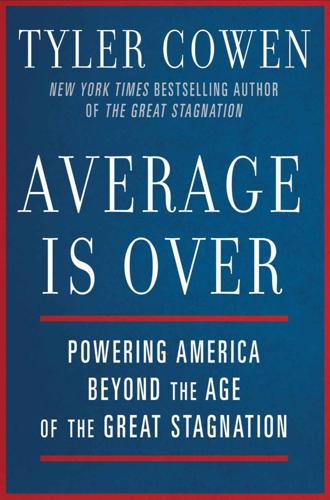
Average Is Over: Powering America Beyond the Age of the Great Stagnation
by
Tyler Cowen
Published 11 Sep 2013
—Chess grandmaster Jan Hein Donner, when asked what strategy he would use against a computer The title of this book was inspired by a series of Thomas Friedman’s columns in The New York Times. Friedman expanded on this idea in a chapter in his book with Michael Mandelbaum, That Used to Be Us, entitled “Average Is Over.” I owe a debt of gratitude to their work and thinking on this very important subject. I also recommend to the reader Erik Brynjolfsson and Andrew McAfee’s Race Against the Machine, a book that came out while I was doing the research and writing on this one. I have benefited considerably from reading their work and from conversations with them. Contents Also by Tyler Cowen Title Page Copyright Dedication Epigraph PART I Welcome to the Hyper-Meritocracy 1 Work and Wages in iWorld 2 The Big Earners and the Big Losers 3 Why Are So Many People Out of Work?
…
What is happening is an increase in the ability of machines to substitute for intelligent human labor, whether we wish to call those machines “AI,” “software,” “smart phones,” “superior hardware and storage,” “better integrated systems,” or any combination of the above. This is the wave that will lift you or that will dump you. The fascination with technology and the future of work has inspired some important writings, including Martin Ford’s classic The Lights in the Tunnel, the more recent and excellent eBook Race Against the Machine by Erik Brynjolfsson and Andrew McAfee, and Ray Kurzweil’s futuristic work on how humans will meld with technology. Debates about mechanization periodically resurface, most prominently in the 1930s and in the 1960s but now once again in our new millennium. Average Is Over builds upon these influential works and attempts to go beyond them in terms of detail and breadth.
…
Exactness of execution becomes more important relative to an accumulated mass of brute force. 2. Consistent coordination over time is a significant advantage. 3. Morale is extremely important to motivate production and cooperation. Recent research bears out these principles. Economists Timothy F. Bresnahan, Erik Brynjolfsson, and Lorin M. Hitt performed an extensive poll of managers, combined with follow-up interviews. They found that in the opinions of managers, computer use increases the need for skilled workers, computers tend to increase workers’ autonomy, and computers increase the need and ability for management to monitor their workers.

Restarting the Future: How to Fix the Intangible Economy
by
Jonathan Haskel
and
Stian Westlake
Published 4 Apr 2022
An alternative version of the Lost Golden Age story agrees that we live in an age of sluggish growth, but it claims we can be reasonably confident that growth will return—perhaps even faster than before. We may not live in the postwar golden age, but we can hope for a new economic dawn in the future, ushered in by new technology. Erik Brynjolfsson and Andrew McAfee’s The Second Machine Age holds that we are living in an age in which growth is low because new technologies are bedding in.25 Our economic fields look bare, but wait a bit and a bumper harvest will come in, delivered by rapidly increasing computing power and its application to every domain of human endeavour.
…
There is also a second-order effect, one that relates to the disappointments of modern technology. As we’ve seen, one of the peculiarities of twenty-first-century stagnation is the disconnect between low economic growth and the lavish hopes and predictions of the tech sector: the flying cars that were promised but never showed up. Economists Erik Brynjolfsson, Daniel Rock, and Chad Syverson link this state of technological disappointment to intangibles.2 Specifically, they note that for new technologies to deliver economic benefit, they need plenty of other intangible investment alongside them to make them useful: new processes, new business relationships, new worker skills.
…
These three effects would combine to produce exactly the effect that we see: lower TFP in an economy in which intangible investment is abundant but growing slowly. The intangible explanation for slow productivity growth is consistent with other findings about slowing productivity growth. It helps explain the concerns about slowing technological progress voiced by Robert Gordon, Tyler Cowen, and Erik Brynjolfsson, providing an underlying explanation for why this slowing should be happening now. It is also consistent with two explanations of declining TFP made by Dietrich Vollrath in his book Fully Grown. Vollrath points out that a significant fraction of the fall in US TFP between 2000 and 2016 is explained by lower business dynamism (the fact that productive small businesses grow and replace incumbents less quickly) and by the long-term shift from manufacturing (where TFP growth has historically been high) to services (where TFP growth has historically been lower).4 Both of these causes have an intangible angle: lower business dynamism relates to the growing leader/laggard gap that intangibles are exacerbating.
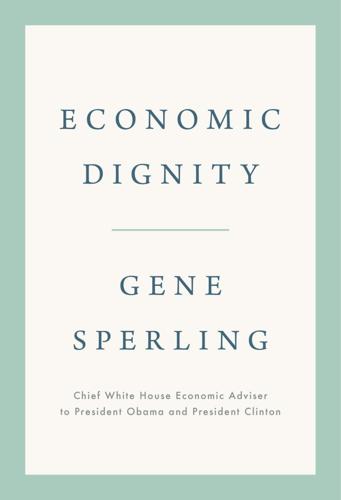
Economic Dignity
by
Gene Sperling
Published 14 Sep 2020
Korinek and Stiglitz, “Artificial Intelligence and Its Implications for Income Distribution and Unemployment.” 63. Erik Brynjolfsson and Andrew McAfee, The Second Machine Age: Work, Progress, and Prosperity in a Time of Brilliant Technologies (New York: W. W. Norton, 2014), 257. 64. Daron Acemoglu and Pascual Restrepo, “Artificial Intelligence, Automation and Work,” NBER Working Paper 24196, National Bureau of Economic Research, Cambridge, MA, 2018, https://www.nber.org/papers/w24196.pdf. 65. Erik Brynjolfsson and Andrew McAfee, “Brynjolfsson and McAfee: The Jobs That AI Can’t Replace,” BBC, September 13, 2015, https://www.bbc.com/news/technology-34175290. 66. Erik Brynjolfsson, “Technology Is Changing the Way We Live, Learn and Work.
…
If we broaden and strengthen an economic dignity net and pass something like a UBI to Rise, we will be closer to what Korinek and Stiglitz described as a “first-best economy in which individuals are fully insured against any adverse impacts of innovation.”62 But beyond such policy measures to deal with the negative effects of technological change, we should ask what we can do to structure change. As Erik Brynjolfsson and Andrew McAfee conclude in The Second Machine Age, “Technology is not destiny. We shape our destiny.”63 Economists Daron Acemoglu and Pascual Restrepo argue that automation and AI will take some tasks from workers and lower demand for some jobs—what they call “displacement” effects. However, they also believe that the creation of new tasks—“shaped by the decisions of firms, workers, and other actors in society”—in which labor has an edge over automation can provide a countervailing influence to the displacement effects.64 Notably, the process of creating those new tasks is Acemoglu and Restrepo’s framework thus underscores the fact that the decisions we make as a nation can have a powerful influence over what technological innovation means for our country.
…
There would be little reason to create new health coach jobs in a fee-for-service model. It is only when health care is paid by virtue of value and results that there are more avenues for humans to add value beyond automation. Iora shows that smarter health policy could lead to more health jobs that leverage technology to create better care for patients. Erik Brynjolfsson and Andrew McAfee also highlight 99Degrees Custom, an apparel maker in Lawrence, Massachusetts, as an example of how technology can generate jobs. “99Degrees Custom embraces a highly engineered, partially automated production line to make highly customized textile products.”70 That approach has allowed 99Degrees Custom to create new jobs that are “more varied, more highly skilled, and better paid” than “the old [textile] factory jobs.”71 The Massachusetts Executive Office of Housing and Economic Development gave the company a $2.8 million tax credit provided that the company hire 350 additional workers by 2023.72 Why shouldn’t all states provide tax credits for such companies that marry dignified labor and new technology?

Futureproof: 9 Rules for Humans in the Age of Automation
by
Kevin Roose
Published 9 Mar 2021
Marvin Minsky, the MIT researcher typically credited as the father of artificial intelligence, was reported to have said in 1970 that “in from three to eight years we will have a machine with the general intelligence of an average human being.” These fears never materialized. But today, AI anxiety is burning bright again, fueled by popular books like Martin Ford’s Rise of the Robots and Erik Brynjolfsson and Andrew McAfee’s The Second Machine Age, both of which made the case that AI was going to fundamentally change society and transform the global economy. Academic studies of the future of work, like an Oxford University study that estimated that as many as 47 percent of U.S. jobs were at “high risk” of automation within the next two decades, added to the sense of impending doom.
…
“Humans and AI will collaborate, not compete.” Optimists also argue that much of today’s AI is designed to work with humans, rather than substituting for them, and that we should think of our relationship with AI as a collaborative opportunity, rather than a competitive threat. In The Second Machine Age, Erik Brynjolfsson and Andrew McAfee suggest replacing the phrase “race against the machines” with “race with the machines.” Paul R. Daugherty and H. James Wilson, two executives at the consulting firm Accenture, write in their book Human + Machine that human-AI collaborations will be a cornerstone of the twenty-first-century economy.
…
If you’re looking to start your own robot-themed bookshelf, I’d recommend starting here. Artificial Unintelligence by Meredith Broussard (2018). Broussard, an experienced data journalist and NYU professor, is a savvy guide to the foibles and limitations of AI, and her book is a forceful argument against what she calls “technochauvinism.” The Second Machine Age by Erik Brynjolfsson and Andrew McAfee (2014). This book by two MIT professors was years ahead of its time. I find myself going back to it frequently. Humans Are Underrated by Geoff Colvin (2015). Colvin, a longtime writer and editor at Fortune, makes a compelling case for the economic value of human skills.
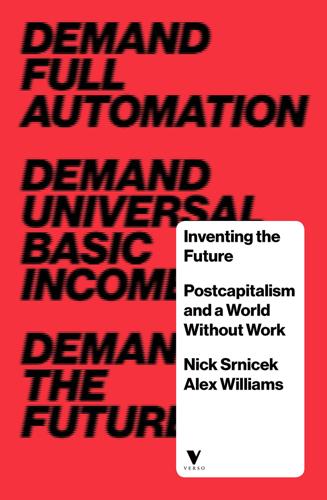
Inventing the Future: Postcapitalism and a World Without Work
by
Nick Srnicek
and
Alex Williams
Published 1 Oct 2015
The large number of relevant texts include: Ad Hoc Committee, ‘The Triple Revolution’, International Socialist Review 24: 3 (1964); Donald Michael, Cybernation: The Silent Conquest (Santa Barbara, CA: Center for the Study of Democratic Institutions, 1962); Paul Mattick, ‘The Economics of Cybernation’, New Politics 1: 4 (1962); David Noble, Progress Without People: In Defense of Luddism (Toronto: Between the Lines, 1995); Jeremy Rifkin, The End of Work: The Decline of the Global Labor Force and the Dawn of the Post-Market Era (New York: Putnam, 1997); Martin Ford, The Lights in the Tunnel: Automation, Accelerating Technology and the Economy of the Future (US: CreateSpace Independent Publishing Platform, 2009); Erik Brynjolfsson and Andrew McAfee, The Second Machine Age: Work, Progress, and Prosperity in a Time of Brilliant Technologies (New York: W. W. Norton, 2014). 16.These estimates are for the US and European labour markets, though similar numbers undoubtedly hold globally and, as we argue later, may even be worse in developing economies.
…
, New Left Review II/84 (November–December 2013), p. 137. 101.Sukti Dasgupta and Ajit Singh, Manufacturing, Services and Premature Deindustrialization in Developing Countries: A Kaldorian Analysis, Working Paper Series, World Institute for Development Economics Research, 2006, at ideas.repec.org, p. 6; Breman, ‘Introduction’, p. 2; Fields, Working Hard, Working Poor, p. 58; Davis, Planet of Slums, p. 15. 102.Davis, Planet of Slums, p. 175; Breman, ‘Introduction’, pp. 3–8; George Ciccariello-Maher, We Created Chávez: A People’s History of the Venezuelan Revolution (Durham, NC: Duke University Press, 2013), Chapter 9. 103.Sassen, Expulsions, Chapter 2. 104.Sanyal, Rethinking Capitalist Development, p. 69. 105.Davis, Planet of Slums, pp. 181–2. 106.Rather than a 30–40 per cent manufacturing share of total employment, the numbers are closer to 15–20 per cent, and manufacturing now begins to decline as a share of GDP at per capita levels of around $3,000, rather than $10,000. Dani Rodrik, ‘The Perils of Premature Deindustrialization’, Project Syndicate, 11 October 2013, at project-syndicate.org, p. 5. 107.Over 30 million manufacturing jobs have been lost since 1996. Erik Brynjolfsson, Andrew McAfee and Michael Spence, ‘New World Order’, Foreign Affairs, August 2014. 108.Manfred Elfstrom and Sarosh Kuruvilla, ‘The Changing Nature of Labor Unrest in China’, ILR Review 67: 2 (2014) 109.Real wages rose by 300 per cent between 2000 and 2010. ILO, Global Wage Report 2012/13: Wages and Equitable Growth (Geneva: International Labour Organization, 2013), pdf available at ilo.org, p. 20. 110.ILO, Global Employment Trends 2014, p. 29. 111.International Federation of Robotics, World Robotics: Industrial Robots 2014 (Frankfurt: International Federation of Robotics, 2014), pdf available at worldrobotics.org, p. 19; Lee Chyen Yee and Clare Jim, ‘Foxconn to Rely More on Robots; Could Use 1 Million in 3 Years’, Reuters, 1 August 2011; ‘Guangzhou Spurs Robot Use amid Rising Labor Costs’, China Daily, 16 April 2014, at chinadaily.com.cn; Angelo Young, ‘Nike Unloads Contract Factory Workers, Showing How Automation Is Costing Jobs of Vulnerable Emerging Market Laborers’, International Business Times, 20 May 2014. 112.Majority of Large Manufacturers Are Now Planning or Considering ‘Reshoring’ from China to the US, Boston Consulting Group, 24 September 2013, at bcg.com; Stephanie Clifford, ‘US Textile Plants Return, with Floors Largely Empty of People’, New York Times, 19 September 2013. 113.Dani Rodrik, Premature Deindustrialization, BREAD Working Paper No. 439, Bureau for Research and Economic Analysis of Development, 2015, at ipl.econ.duke.edu, p. 2. 114.Fiona Tregenna, Manufacturing Productivity, Deindustrialization, and Reindustrialization, World Institute for Development Economics Research, 2011, at econstor.eu, p. 11. 115.Out of a labour force of 481 million, approximately 1 million work in this sector.
…
Eventually, with legal and insurance changes, consumers will be forced into adopting this technology. 28.Isaac Arnsdorf, ‘Rolls-Royce Drone Ships Challenge $375 Billion Industry: Freight’, Bloomberg, 25 February 2014, at bloomberg.com; BBC News, ‘Amazon Testing Drones for Deliveries’, BBC News, 2 December 2013; Danielle Kucera, ‘Amazon Acquires Kiva Systems in Second-Biggest Takeover’, Bloomberg, 19 March 2012, at bloomberg.com; Vicky Validakis, ‘Rio’s Driverless Trucks Move 100 Million Tonnes’, Mining Australia, 24 April 2013, at miningaustralia.com.au; Elise Hu, ‘The Fast-Food Restaurants that Require Few Human Workers’, NPR.org, 29 August 2013, at npr.org; Christopher Steiner, Automate This: How Algorithms Came to Rule Our World (New York: Portfolio/Penguin, 2012); Mark Levinson, The Box: How the Shipping Container Made the World Smaller and the World Economy Bigger (Princeton, NJ: Princeton University Press, 2008); Daniel Beunza, Donald MacKenzie, Yuval Millo and Juan Pablo Pardo-Guerra, Impersonal Efficiency and the Dangers of a Fully Automated Securities Exchange (London: Foresight, 2011). 29.For a slightly outdated but still useful summary of various automation processes, see Ramin Ramtin, Capitalism and Automation: Revolution in Technology and Capitalist Breakdown (London: Pluto, 1991), Chapter 4. 30.Erik Brynjolfsson and Andrew McAfee, The Second Machine Age: Work, Progress, and Prosperity in a Time of Brilliant Technologies (New York: W. W. Norton, 2014), Chapters 2–4. 31.Ibid., Chapter 1; Frey and Osborne, Future of Employment, p. 44. 32.Paul Lippe and Daniel Martin Katz, ‘10 Predictions About How IBM’s Watson Will Impact the Legal Profession’, ABA Journal, 2 October 2014, at abajournal.com. 33.Brynjolfsson and McAfee, Second Machine Age, Chapter 2. 34.Dave Cliff, Dan Brown and Philip Treleaven, Technology Trends in the Financial Markets: A 2020 Vision (London: Foresight, 2011), p. 36.

Machines of Loving Grace: The Quest for Common Ground Between Humans and Robots
by
John Markoff
Published 24 Aug 2015
For a while he stood alone, much in the tradition of Rifkin’s 1995 The End of Work, but as the recession dragged on and mainstream economists continued to have trouble explaining the absence of job growth, he was soon joined by an insurgency of technologists and economists warning that technological disruption was happening full force. In 2011, two MIT Sloan School economists, Erik Brynjolfsson and Andrew McAfee, self-published an extended essay titled “Race Against the Machine: How the Digital Revolution Is Accelerating Innovation, Driving Productivity, and Irreversibly Transforming Employment and the Economy.” Their basic theme was as follows: “Digital technologies change rapidly, but organizations and skills aren’t keeping pace.
…
“They remind us Moore’s Law predicts endless exponential growth of the performance capability of computer chips, without recognizing that the translation from Moore’s Law to the performance-price behavior of ICT equipment peaked in 1998 and has declined ever since,” he noted in a 2014 rejoinder to his initial paper.45 Gordon squared off with his critics, most notably with MIT economist Erik Brynjolfsson, at the TED Conference in the spring of 2013. In a debate moderated by TED host Chris Anderson, the two jousted over the future impact of robotics and whether the supposed exponentials would continue or were rather the peak of an “S curve” with a decline on the way.46 The techno-optimists believe that a lag between invention and adoption of technology simply delays the impact of productivity gains and even though exponentials inevitably taper off, they spawn successor inventions—for example the vacuum tube was followed by the transistor, which in turn was followed by the integrated circuit.
…
Norton & Co, 1963), 358–373. 22.Jeremy Rifkin, The End of Work: The Decline of the Global Labor Force and the Dawn of the Post-Market Era (New York: Putnam, 1995), xvii. 23.John Markoff, “Armies of Expensive Lawyers, Replaced by Cheaper Software,” New York Times, March 4, 2011, http://www.nytimes.com/2011/03/05/science/05legal.html?pagewanted=all. 24.Erik Brynjolfsson and Andrew McAfee, Race Against the Machine (Lexington, MA: Digital Frontier Press, 2011). 25.Paul Beaudry, David A. Green, and Ben Sand, “The Great Reversal in the Demand for Skill and Cognitive Tasks,” NBER Working Paper No. 18901, National Bureau of Economic Research, March 2013, http://www.economics.ubc.ca/files/2013/05/pdf_paper_paul-beaudry-great-reversal.pdf. 26.Ibid. 27.James Manyika, Susan Lund, Byron Auguste, and Sreenivas Ramaswamy, “Help Wanted: The Future of Work in Advanced Economies,” McKinsey Global Institute, March 2012, http://www.mckinsey.com/insights/employment_and_growth/future_of_work_in_advanced_economies. 28.Robin Harding, “US Has Lost 2M Clerical Jobs since 2007,” Financial Times, April 1, 2013, http://www.ft.com/intl/cm/s/0/37666e6c-9ae5-11e2-b982-00144feabdc0.html#axzz3V2czZqsP. 29.Melody Johnson, “Right-Wing Media Attack Obama for Accurate Remarks on Business’ [sic] Investment in Automated Machines,” MediaMatters for America, June 15, 2011, http://mediamatters.org/research/2011/06/15/right-wing-media-attack-obama-for-accurate-rema/180602. 30.
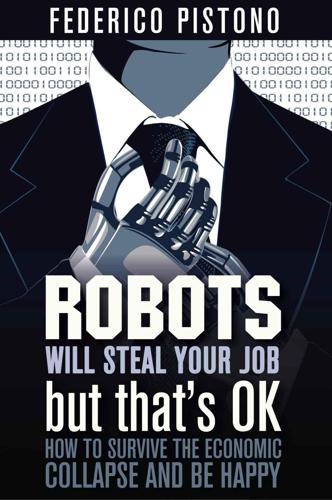
Robots Will Steal Your Job, But That's OK: How to Survive the Economic Collapse and Be Happy
by
Pistono, Federico
Published 14 Oct 2012
As if that was not enough, it turns out that only 58.1% of the population was working, the lowest level in nearly three decades.3 Laura D’Andrea Tyson, Professor at the Haas School of Business at the University of California, Berkeley, calculated that even if we could somehow create 208,000 new jobs per month, every month, for the foreseeable future, it would still take until 2023 to fill that gap.4 As of January 2012, thanks to massive efforts from both the private sector and the government, the unemployment rate fell to 8.3%.5 A very mild consolation, considering that people employed part-time for economic reasons, marginally attached to the labor force, discouraged workers, and long-term unemployment, changed very little over the year. To make things even worse, the labour force participation rate is 63.7%, its all time lowest since 1983, when women had not entered the work force in large numbers, and it is dropping consistently every year.6 MIT Economists Erik Brynjolfsson and Andrew McAfee make a lucid analysis of this problem in their book Race Against The Machine: How the Digital Revolution is Accelerating Innovation, Driving Productivity, and Irreversibly Transforming Employment and the Economy7, which deals with the current unemployment crisis and tries to offer some solutions, particularly by reforming education, the system of economic incentives, and by promoting entrepreneurship.
…
I had many discussions regarding the issue of technological unemployment, particularly during my Graduate Study Program at Singularity University, NASA Ames Research Center, where I had the opportunity to speak with some of the greatest minds on the field, including the authors of the book “Race Against the Machine” Erik Brynjolfsson and Andrew McAfee, founding executive editor of Wired magazine Kevin Kelly, inventor and futurist Ray Kurzweil, and science fiction writer Vernor Vinge. I stand by my thesis, that the economy will not abide in creating new jobs at the same pace with which technology destroys them. Many disagree with me, and we could have a discussion about that, but I think this is missing the point.
…
Bureau Of Labor Statistics http://www.bls.gov/news.release/pdf/empsit.pdf 6 Civilian Labor Force Participation Rate. Bureau of Labor Statistics. http://data.bls.gov/timeseries/LNS11300000 7 Race Against The Machine: How the Digital Revolution is Accelerating Innovation, Driving Productivity, and Irreversibly Transforming Employment and the Economy, Erik Brynjolfsson and Andrew McAfee, 2011. Digital Frontier Press. http://raceagainstthemachine.com 8 The End of Work Website, Jeremy Rifkin. http://www.foet.org/books/end-work.html 9 The End of Work, Wikipedia. http://en.wikipedia.org/wiki/The_End_of_Work 10 A rough 10 years for the middle class, Annalyn Censky, 2011.
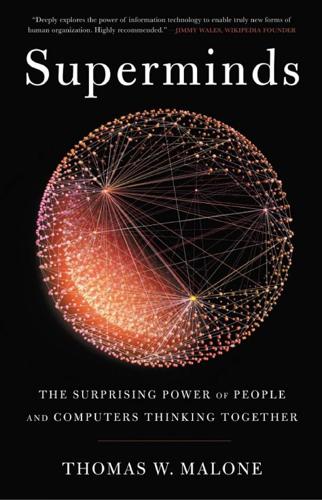
Superminds: The Surprising Power of People and Computers Thinking Together
by
Thomas W. Malone
Published 14 May 2018
Others argue that machines will never have general intelligence because the practical problems of achieving this are just so hard we will never solve them, or if we do, it will be far beyond the lifetimes of anyone alive today. Here there is clearly room for differing viewpoints. Some people, like my former student and now colleague Erik Brynjolfsson and his coauthor Andrew McAfee, suggest that continuing advances in computer hardware together with the surprisingly rapid progress in artificial intelligence make it likely that machines may possess general intelligence soon.10 Others, like artificial intelligence expert Rodney Brooks, say that it may take hundreds of years.11 In fact, progress in the field of artificial intelligence has been notoriously difficult to predict ever since its early days, in the 1950s.
…
In the early 1800s, as power looms eliminated jobs previously held by human weavers, industrial activists called Luddites burned factories and destroyed machinery in protest.1 In the 1960s, as computers eliminated large numbers of clerical jobs in the back offices of banks and insurance companies, President Lyndon Johnson created a National Commission on Technology, Automation, and Economic Progress to study the problem.2 And in the 2010s, Erik Brynjolfsson and Andrew McAfee (see here) have warned about the risks of artificial intelligence putting many humans out of work, not just in blue-collar and clerical jobs but in white-collar jobs, too.3 But people have consistently underestimated the ability of the superminds we call markets to adapt to changes like these.
…
Searle, “Minds, Brains, and Programs,” Behavioral and Brain Sciences 3, no. 3 (1980): 417–24. 8. Edsger W. Dijkstra, “The Threats to Computing Science,” presented at the ACM South Central Regional Conference, Austin, TX, November 1984. 9. Russell and Norvig, Artificial Intelligence, 1,021. 10. Erik Brynjolfsson and Andrew McAfee, The Second Machine Age: Work, Progress, and Prosperity in a Time of Brilliant Technologies (New York: W. W. Norton, 2014); Martin Ford, Rise of the Robots: Technology and the Threat of a Jobless Future (New York: Basic Books, 2015). 11. Brooks, “Artificial Intelligence Is a Tool”; Rodney Brooks, “The Seven Deadly Sins of AI Predictions,” MIT Technology Review, October 6, 2017, https://www.technologyreview.com/s/609048/the-seven-deadly-sins-of-ai-predictions/. 12.

The Measure of Progress: Counting What Really Matters
by
Diane Coyle
Published 15 Apr 2025
The optimists’ camp counters with a core argument concerning the adjustments needed to use new technologies and therefore the time it P r o du c t i v i t y w i t h ou t P r odu c t s 39 25% Effective number of researchers (right scale) Growth rate 20% 20 15% 15 10% 10 5% US TFP growth (left scale) 0% 1930s 1940s 5 1950s 1960s 1970s 1980s 1990s Factor increase since 1930 25 0 2000s figure 2.2. Aggregate data on growth and research effort, US. Source: Bloom et al. (2020). takes to see innovations translated into economic value. A key voice is Erik Brynjolfsson, whose work in the dot-com boom of the 1990s demonstrated that companies adopting digital technologies do not experience productivity improvements u nless they spend about ten times more on reorganising their production processes than on buying information and communications technology (ICT) equipment (Brynjolfsson and Hitt 2000).
…
They calculate that (as of 2005) the “true” consumer value was an order of magnitude bigger than the monetary expenditure: more than $3,000 versus $100 over twelve months for the median consumer, valuing leisure time using wage rates. Several researchers have begun to look at alternative ways to measure the consumer welfare impact. Some focus on the increase in choice and variety, which I will also postpone until Chapter 7. A series of papers by Erik Brynjolfsson and his coauthors (2019a, 2019b, 2020) looking at aggregate effects, and many others looking at individual digital services, have taken the alternative route of stated preference surveys and discrete choice experiments to elicit estimates for consumer welfare. Stated preference approaches (asking a sample of p eople to state their willingness-to-accept [WTA] loss of a service or willingness to pay to access it) have a dim reputation among some economists, who strongly favour revealed preference approaches (e.g., Hausman 2012); but this is not much use in contexts where market prices or exchange values fail to capture economically important information.
…
Greenstein and McDevitt (2011) and Dutz et al. (2012) used the variations in the price US consumers would pay for high-speed broadband to estimate consumer surplus. The former study estimated the consumer surplus total from 1999 to 2006 was $4.8 to $6.7 billion; the latter estimated consumer surplus at $32 billion in 2008. The series of pathbreaking studies by Erik Brynjolfsson and coauthors (2019a, 2019b, 2020) looking at the aggregate impact of f ree digital products used surveys and incentive-compatible online choice experiments to estimate consumer surplus for a range of digital products for the United States. They advocate for adding the aggregated consumer surplus to GDP to create GDP-B (Beyond GDP).
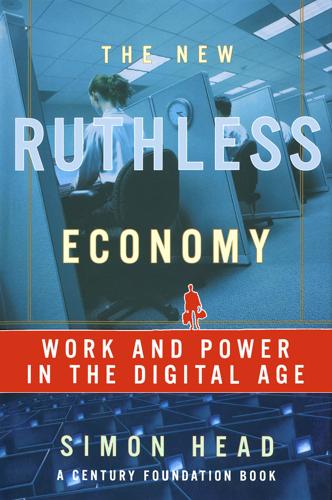
The New Ruthless Economy: Work & Power in the Digital Age
by
Simon Head
Published 14 Aug 2003
The Conference Board, HR Executive Review (New York) 3(1):2 (1995). 22. Timothy H. Bresnahan, Erik Brynjolfsson, and Lorin M. Hitt, "Information Technology, Workplace Organization and the Demand for Skilled Labor: Firm Level Evidence," National Bureau of Economic Research Working Paper, no. 7136, May 1999, p. i. 23. Paul A. David, "Understanding Digital Technology's Evolution and the Path of Measured Productivity Growth: Present and Future in the Mirror of the Past," in Understanding the Digital Economy: Data, Tools, and Research, ed. Erik Brynjolfsson and Brian Kahin (Cambridge, Mass., 2000), p. 54. 24. Quoted by Alan Greenspan in "Remarks at the 81st Annual Meeting of the American Council on Education," Washington, D.C., February 16,1999, p. 2.
…
In 1989 the MIT Commission on Industrial Productivity wrote of "new patterns of workplace organization" in U.S. manufacturing that required the "creation of a highly skilled workforce" and that was incompatible with "the ways of thinking and operating that grew out of the mass production model."20 In 1995 Louis Csoka, then research director for human resources/organizational effectiveness at the Conference Board, a leading corporate lobbyist, described how throughout the economy employees are "working in concert with others, [forming] work groups that become high performing teams through teambuilding, teamwork and interdependence."21 In 1999 human resource experts surveyed by economists Timothy Bresnahan, Erik Brynjolfsson, and Lorin Hitt also claimed that "IT use is complementary to a new workplace organization that includes broader job responsibilities for front line workers, decentralized decision making, and more self-managing teams."22 In 2000 economist Paul David of Stanford, now professor of economics at Oxford, wrote of the "process of transition to a new information-intensive techno-economic regime" with "new kinds of workforce skills" and "new organizational forms" that would "accomplish the abandonment or extensive transformation . . . of the technological regime identified with Fordism."23 Neither the plant and office-level evidence, nor the evidence of the trade literature, supports this vision of a newly skilled workforce empowered by information technology going about its business within autonomous, self-directed teams.
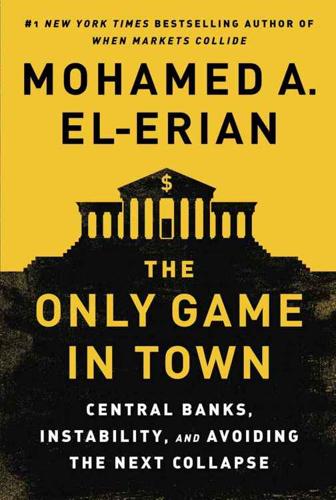
The Only Game in Town: Central Banks, Instability, and Avoiding the Next Collapse
by
Mohamed A. El-Erian
Published 26 Jan 2016
,” New York Times, January 23, 2015, http://www.nytimes.com/2015/01/25/opinion/sunday/what-happened-to-the-price-of-oil.html. 2. Mohamed A. El-Erian, “Good, Bad and Ugly of Lower Oil Prices,” Bloomberg View, December 1, 2014, http://www.bloombergview.com/articles/2014-12-01/good-bad-and-ugly-of-lower-oil-prices. 3. Erik Brynjolfsson and Andrew McAfee, The Second Machine Age: Work, Progress, and Prosperity in a Time of Brilliant Technologies (New York: Norton, 2014). 4. See, for example, Erik Brynjolfsson and Andrew McAfee, Race Against the Machine: How the Digital Revolution Is Accelerating Innovation, Driving Productivity, and Irreversibly Transforming Employment and the Economy (Lexington, MA: Digital Frontier Press, 2011).
…
HARNESSING DISRUPTIVE TECHNOLOGICAL INNOVATION The ongoing technological revolution is a second factor that contributes to a relatively unstable distribution of future potential outcomes. It is a revolution that combines two critical elements: empowering individuals to an extent that was deemed unlikely, if not unthinkable, not so long ago; and deploying big data, artificial intelligence, and what Erik Brynjolfsson and Andrew McAfee have dubbed “the second machine age.”3 Many observers and researchers have referred to these revolutionary and transformational forces as among the most powerful in history. In a March 2015 conference on the Future of Work, organized by WorldPost, a joint venture between Nicolas Berggruen’s Institute and Arianna Huffington’s Huffington Post, Andrew McAfee added that it is “the only free lunch that economists can agree on.”

Reinventing Capitalism in the Age of Big Data
by
Viktor Mayer-Schönberger
and
Thomas Ramge
Published 27 Feb 2018
With a well-developed services sector that itself may face the challenge of increasing automation, what is there to employ the middle-class workers displaced in data-rich markets? Is this the advent of a “second machine age”—the neat phrase to describe the coming displacement through automation of white-collar jobs coined by MIT professors Erik Brynjolfsson and Andrew McAfee? It is likely, as we suggested in Chapter 6, that there will be less work for humans in the future; but no matter what happens to overall labor force participation, it is almost certain that the types of jobs available will be quite different from the jobs people hold today.
…
It is the vision that humanity will soon overcome resource scarcity, and the belief that machines, and their seemingly infinite ability to accomplish complex tasks at low or practically no cost, will recycle the resources we have forever, essentially taking us into a true utopia. In it, humans, freed from daily chores, will enjoy life and have the means to live it to the fullest. The end of scarcity has been predicted before, perhaps most vocally in the 1970s by conservative economist Julian Simon. Now an expanded version of the idea is resurfacing. Erik Brynjolfsson, a business school professor at MIT’s Sloan School of Business and coauthor of an influential book about the consequences of artificial intelligence on human labor, seems sympathetic. “A world of increasing abundance, even luxury, is not only possible, but likely,” he suggests. Proponents of this view use the term “fully automated luxury communism” (conjuring images of Leonid Brezhnev wearing Gucci loafers) for the idea that we all can work less and still enjoy whatever we want.
…
labor force has declined from its peak: The participation rate in 2017 was around 63 percent, down from over 67 percent in 2000, and below the level it had been in more than three decades; see U.S. Bureau of Labor Statistics, Labor Force Participation Rates, data sets and graphs available at https://data.bls.gov. forecast depressing employment figures: Erik Brynjolfsson and Andrew McAfee, The Second Machine Age: Work, Progress, and Prosperity in a Time of Brilliant Technologies (New York: W. W. Norton, 2016); Carl Benedikt Frey and Michael A. Osborne, The Future of Employment: How Susceptible Are Jobs to Computerisation? (Oxford, UK: Oxford Martin School, September 17, 2013), http://www.oxfordmartin.ox.ac.uk/downloads/academic/The_Future_of _Employment.pdf.
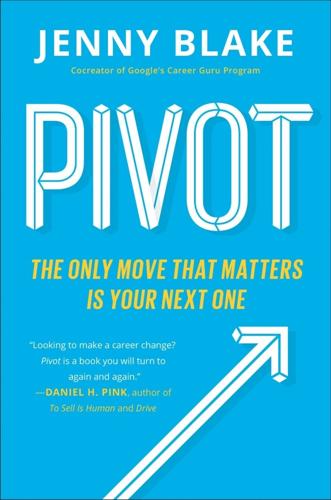
Pivot: The Only Move That Matters Is Your Next One
by
Jenny Blake
Published 14 Jul 2016
BE DISCERNING ABOUT YOUR LEARNING Even with the pace of change, all hope of strategically positioning yourself for success in our economy is not lost. Instead, focus your energy on how you spot skills that are needed, particularly those rooted in your existing strengths. In their book The Second Machine Age: Work, Progress, and Prosperity in a Time of Brilliant Technologies, authors Erik Brynjolfsson and Andrew McAfee make the point that the fundamental metrics of our economy have changed, saying, “More and more what we care about in the second machine age are ideas, not things . . . interactions, not transactions.” According to Brynjolfsson and McAfee, there are some guidelines to keep in mind regarding what skills and opportunities to pursue to complement technology, rather than compete against it.
…
These books provide in-depth coverage of areas where I just scratched the surface. I encourage you to dig deeper into anything that grabbed you. For the full reading list, visit PivotMethod.com/toolkit. Introduction A Whole New Mind by Daniel H. Pink Antifragile by Nassim Nicholas Taleb The Second Machine Age by Erik Brynjolfsson and Andrew McAfee The Antidote by Oliver Burkeman The Start-Up of You by Reid Hoffman and Ben Casnocha Plant The Power of Full Engagement by Jim Loehr and Tony Schwartz Finding Your Own North Star by Martha Beck The Big Leap by Gay Hendricks Body of Work by Pamela Slim Choose Yourself by James Altucher Scan So Good They Can’t Ignore You by Cal Newport The First 20 Hours by Josh Kaufman Tribes by Seth Godin Stand Out by Dorie Clark Essentialism by Greg McKeown Pilot The Lean Startup by Eric Ries Eat That Frog!
…
Downing, “Contemporary Models of Intelligence,” in Handbook of Intelligence, ed. Robert J. Sternberg (Cambridge: Cambridge University Press, 2000). In his 1951 book: Alan W. Watts, The Wisdom of Insecurity: A Message for an Age of Anxiety (New York: Vintage, 1951), 32. complement technology, rather than compete: Erik Brynjolfsson and Andrew McAfee, The Second Machine Age: Work, Progress, and Prosperity in a Time of Brilliant Technologies (New York: W. W. Norton, 2014), 153–54, 189–200. Leverage refers to: Ibid. it is futile to ask: Geoff Colvin, Humans Are Underrated: What High Achievers Know That Brilliant Machines Never Will (New York: Portfolio/Penguin, 2015), 42, 44; Oliver Burkeman, “Are Machines Making Humans Obsolete?”
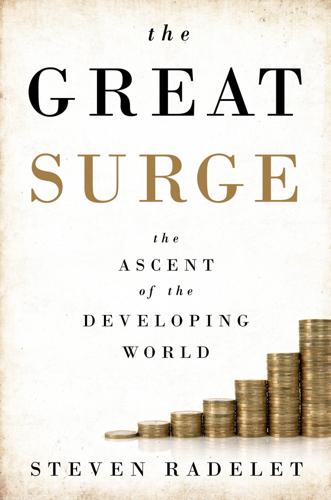
The Great Surge: The Ascent of the Developing World
by
Steven Radelet
Published 10 Nov 2015
Part of the importance of the recent global integration of developing countries is that it has taken place exactly when it did: during a period of some of the greatest advances in technology in the last two hundred years. Just as the industrial revolution can be traced to James Watt’s invention of the steam engine, which drove innovations and changes across the economic landscape, much of the current technological revolution can be traced back to the semiconductor and the computer, a history that Erik Brynjolfsson and Andrew McAfee recount in The Second Machine Age: Work, Progress, and Prosperity in a Time of Brilliant Technologies.14 There are multiple examples, but I will focus on technological advances in four areas that have been important to developing countries: transportation, agriculture, information, and health.
…
Just as China wants other countries to honor its legitimate interests, it must honor the legitimate interests of its neighbors and other countries in its border disputes, trade arrangements, military maneuvers, commercial negotiations, and other issues. Managing the peaceful rise of China will be one of the most important global challenges of the next two decades, with profound effects on global development progress. TECHNOLOGY AND INNOVATION We live in a period of some of the most dramatic technological changes in history—what Erik Brynjolfsson and Andrew McAfee called “the second machine age.”10 Many view the microprocessor as the single most important invention since the steam engine kicked off the industrial revolution. Advances in information technology, energy, transportation, health, and agriculture have propelled the world economy forward.
…
The Growth Report: Strategies for Sustained Growth and Inclusive Development (Washington, DC: International Bank for Reconstruction and Development/World Bank on behalf of the Commission on Growth and Development, 2008), p. 2, https://openknowledge.worldbank.org/bitstream/handle/10986/6507/449860PUB0Box3101OFFICIAL0USE0ONLY1.pdf?sequence. 14. Erik Brynjolfsson and Andrew McAfee, The Second Machine Age: Work, Progress, and Prosperity in a Time of Brilliant Technologies (New York: W. W. Norton, 2014). 15. “History of Containerization,” World Shipping Council, www.worldshipping.org/about-the-industry/history-of-containerization. 16. Daniel Bernhofen, Zouheir El-Sahli, and Richard Kneller, “Estimating the Effects of the Container Revolution on World Trade,” working paper 4136, Center for Economic Studies and the Ifo Institute, February 2013, http://ssrn.com/abstract=2228625.
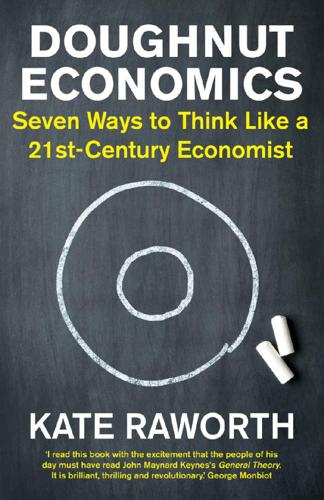
Doughnut Economics: Seven Ways to Think Like a 21st-Century Economist
by
Kate Raworth
Published 22 Mar 2017
Anyone with a role involving tasks, skilled or not, that a programmer could write software to perform, from warehouse stackers, car welders and travel agents to taxi drivers, paralegal clerks and heart surgeons. This wave of digital automation is still in its infancy, but it has already led to what the digital economy expert Erik Brynjolfsson has called the ‘great decoupling’ of production from jobs, seen most clearly in the United States. From the end of the Second World War until 2000, US productivity and employment were closely intertwined, but they have strongly diverged ever since: while productivity has kept on rising, employment levels have fallen flat.71 Technology has of course replaced workers before, and it can be to society’s broad benefit when it frees people up to engage in other productive enterprise.
…
At the same time, invest far more in skilling people up where they beat robots hands-down: in creativity, empathy, insight and human contact – skills that are essential for many kinds of work, from primary school teachers and artistic directors to psychotherapists, social workers and political commentators. As Erik Brynjolfsson and his co-author Andrew McAfee put it, ‘Humans have economic wants that can be satisfied only by other humans, and that makes us less likely to go the way of the horse.’75 That’s reassuring, but only partly, because if most workers continue to earn income just from selling their labour alone, they will simply not earn enough.
…
‘If growth wanes,’ she warned a TED audience in 2015, ‘the risk to human progress and the risk to social and political instability rises and societies become dimmer, coarser, and smaller.’28 Since economic growth is deemed a political necessity by the keep-on-flying crowd – no matter how wealthy a country already is – it is no surprise to hear them argue that further growth in high-income countries is possible because it is coming and it can be made environmentally sustainable. First, growth is on the way, argue technology optimists such as Erik Brynjolfsson and Andrew McAfee: thanks to the exponential growth in digital processing power, we are entering the ‘second machine age’, in which the fast-rising productivity of robots will drive a new wave of GDP growth.29 What’s more, argue green growth advocates such as the UN, World Bank, IMF, OECD and EU, future growth can become green by decoupling GDP from ecological impacts.

The Coming Wave: Technology, Power, and the Twenty-First Century's Greatest Dilemma
by
Mustafa Suleyman
Published 4 Sep 2023
GO TO NOTE REFERENCE IN TEXT Zero marginal cost production See, for example, Jeremy Rifkin, The Zero Marginal Cost Society: The Internet of Things, the Collaborative Commons, and the Eclipse of Capitalism (New York: Palgrave, 2014). GO TO NOTE REFERENCE IN TEXT What’s more, owners of the best systems Erik Brynjolfsson calls a situation where AI takes over more and more of the economy, locking large numbers of people in an equilibrium where they have no work, no wealth, and no meaningful power, the “Turing Trap.” Erik Brynjolfsson, “The Turing Trap: The Promise & Peril of Human-Like Artificial Intelligence,” Stanford Digital Economy Lab, Jan. 11, 2022, arxiv.org/pdf/2201.04200.pdf. GO TO NOTE REFERENCE IN TEXT Little wonder there is talk See, for example, Joel Kotkin, The Coming of Neo-feudalism: A Warning to the Global Middle Class (New York: Encounter Books, 2020).
…
Or the worst. No one recognizes and explains the epic challenges ahead better than Mustafa Suleyman. Thought-provoking, urgent, and written in powerful, highly accessible prose, this is a must-read book for anyone interested in understanding the staggering power of these technologies.” —Erik Brynjolfsson, professor, Stanford Human-Centered Artificial Intelligence “One of the greatest challenges facing the world is to devise forms of governance that harness the benefits of AI and biotech while avoiding their catastrophic risks. This book provides a deeply thoughtful account of the ‘containment challenge’ of these two technologies.
…
Particular thanks go to the many people who read the entire draft and commented in detail; their generosity and extraordinary level of insight were completely invaluable in getting to the final manuscript. A huge thanks to Gregory Allen, Graham Allison (and the faculty and staff of Harvard’s Belfer Center more widely), Sahar Amer, Anne Applebaum, Julian Baker, Samantha Barber, Gabriella Blum, Nick Bostrom, Ian Bremmer, Erik Brynjolfsson, Ben Buchanan, Sarah Carter, Rewon Child, George Church, Richard Danzig, Jennifer Doudna, Alexandra Eitel, Maria Eitel, Henry Elkus, Kevin Esvelt, Jeremy Fleming, Jack Goldsmith, Al Gore, Tristan Harris, Zaid Hassan, Jordan Hoffman, Joi Ito, Ayana Elizabeth Johnson, Danny Kahneman, Angela Kane, Melanie Katzman, Henry Kissinger, Kevin Klyman, Heinrich Küttler, Eric Lander, Sean Legassick, Aitor Lewkowycz, Leon Marshall, Jason Matheny, Andrew McAfee, Greg McKelvey, Dimitri Mehlhorn, David Miliband, Martha Minow, Geoff Mulgan, Aza Raskin, Tobias Rees, Stuart Russell, Jeffrey Sachs, Eric Schmidt, Bruce Schneier, Marilyn Thompson, Mayo Thompson, Thomas Viney, Maria Vogelauer, Mark Walport, Morwenna White, Scott Young, and Jonathan Zittrain.
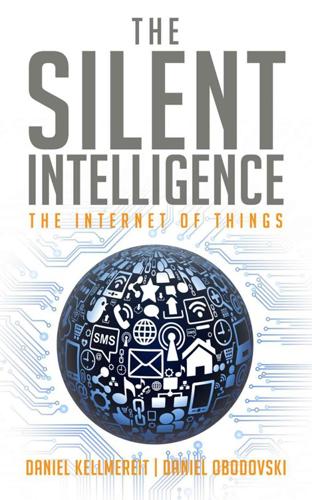
The Silent Intelligence: The Internet of Things
by
Daniel Kellmereit
and
Daniel Obodovski
Published 19 Sep 2013
By the time the servants got to the sixty-fourth square, the man had more than eighteen quintillion rice grains (18 x 1018), or more than all the wealth in the land. But his wealth and ability to outsmart the emperor came with a price — he ended up being decapitated. In their recent book, Race Against the Machine,1 Erik Brynjolfsson and Andrew McAfee, referenced the fable of the chess and rice grains to make the point that “exponential increases initially look a lot like linear, but they are not. As time goes by — as we move into the second half of the chessboard — exponential growth confounds our intuition and expectations.”
…
The space is ripe for further innovation and experimentation because it offers specific opportunities to be realized in the short term. In the following chapters we will look at specific examples and companies. We will also continue our discussions with industry experts about what is happening, what might happen, and what needs to happen to bring about the vision of the Internet of Things. 1 Erik Brynjolfsson and Andrew McAfee, Race Against the Machine: How the Digital Revolution Is Accelerating Innovation, Driving Productivity, and Irreversibly Transforming Employment and the Economy (Lexington, MA: Digital Frontier Press, 2011), p.297. 2 Nokia, Machine-to-Machine: Let Your Machines Talk (2004). http://www.m2mpremier.com/uploadFiles/m2m-white-paper-v4.pdf. 3 The observation that the number of transistors on integrated circuits doubles approximately every two years.

The Internet Is Not the Answer
by
Andrew Keen
Published 5 Jan 2015
The Chapman University geographer Joel Kotkin has broken down what he calls this “new feudalism” into different classes, including “oligarch” billionaires like Thiel and Uber’s Travis Kalanick, the “clerisy” of media commentators like Kevin Kelly, the “new serfs” of the working poor and the unemployed, and the “yeomanry” of the old “private sector middle class,” the professionals and skilled workers in towns like Rochester who are victims of the new winner-take-all networked economy.81 The respected MIT economists Erik Brynjolfsson and Andrew McAfee, who are cautiously optimistic about what they call “the brilliant technologies” of “the Second Machine Age,” acknowledge that our networked society is creating a world of “stars and superstars” in a “winner-take-all” economy. It’s the network effect, Brynjolfsson and McAfee admit, reflecting the arguments of Frank and Cook—a consequence, they say, of the “vast improvements in telecommunications” and the “digitalization of more and more information, goods and services.”
…
But while all this technology might be novel, it hasn’t transformed the role of either power or wealth in the world. Indeed, when it comes to the importance of money and influence, Silicon Valley is about as traditional as those three thousand bottles of vintage wine in the Battery’s illustrious cellar. History is, in many ways, repeating itself. Today’s digital upheaval represents what MIT’s Erik Brynjolfsson and Andrew McAfee call the “second industrial revolution.” “Badass” entrepreneurs like Travis Kalanick and Peter Thiel have much in common with the capitalist robber barons of the first industrial revolution. Internet monopolists like Google and Amazon increasingly resemble the bloated multinationals of the industrial epoch.
…
Keith recommended me to Paul Carr and Jon Orlin at TechCrunchTV, and my show Keen On . . . was the first program on the network, running for four years and including over two hundred interviews with leading Internet thinkers and critics. In particular, I’d like to thank Kurt Andersen, John Borthwick, Stewart Brand, Po Bronson, Erik Brynjolfsson, Nicholas Carr, Clayton Christensen, Ron Conway, Tyler Cowen, Kenneth Cukier, Larry Downes, Tim Draper, Esther Dyson, George Dyson, Walter Isaacson, Tim Ferriss, Michael Fertik, Ze Frank, David Frigstad, James Gleick, Seth Godin, Peter Hirshberg, Reid Hoffman, Ryan Holiday, Brad Horowitz, Jeff Jarvis, Kevin Kelly, David Kirkpatrick, Ray Kurzweil, Jaron Lanier, Robert Levine, Steven Levy, Viktor Mayer-Schönberger, Andrew McAfee, Gavin Newsom, George Packer, Eli Pariser, Andrew Rasiej, Douglas Rushkoff, Chris Schroeder, Tiffany Shlain, Robert Scoble, Dov Seidman, Gary Shapiro, Clay Shirky, Micah Sifry, Martin Sorrell, Tom Standage, Bruce Sterling, Brad Stone, Clive Thompson, Sherry Turkle, Fred Turner, Yossi Vardi, Hans Vestberg, Vivek Wadhwa, and Steve Wozniak for appearing on Keen On . . . and sharing their valuable ideas with me.

The Globotics Upheaval: Globalisation, Robotics and the Future of Work
by
Richard Baldwin
Published 10 Jan 2019
The three technological impulses that launched these are very different and thus had very different effects. Oversimplifying to make the point, the Great Transformation was launched by the Steam Revolution and all the mechanization that followed. This technology took the horse out of horsepower; it created better tools for people who worked with their hands as Erik Brynjolfsson and Andrew McAfee point out in their seminal 2014 book, The Second Machine Age.4 It was mostly about goods, and it shifted the masses from making farm goods to making manufactured goods. Office work grew more productive, but mostly due to the fruits of industrialization (office machinery, electricity, etc).
…
A. 370, no. 1960 (2012): 534–543, http://rsta.royalsocietypublishing.org/content/roypta/370/1960/534.full.pdf. 3. Kevin Roose, “His 2020 Campaign Message: The Robots Are Coming,” New York Times, February 10, 2018, https://www.nytimes.com/2018/02/10/technology/his-2020-campaign-message-the-robots-are-coming.html. 4. Erik Brynjolfsson and Andrew McAfee, The Second Machine Age: Work, Progress, and Prosperity in a Time of Brilliant Technologies (New York: Norton & Company, 2014). 5. Jack Welch and John Byrne, Jack: Straight from the Gut (Warner Business Books, 2001). PART I Historical Transformations, Upheavals, Backlashes, and Resolutions 2 We’ve Been Here Before: The Great Transformation Catherine Spence and her infant starved to death in the London Docklands.
…
Varian’s law is thus: digital components are free while digital products are highly valuable. Innovation explodes as people try to get rich by working through the nearly infinite combinations of components in search of valuable digital products. In their breakthrough book, The Second Machine Age, Erik Brynjolfsson and Andy McAfee point out the implications. A big difference between digital technology and traditional technology is that new products and components can be reproduced costlessly, instantly, and perfectly. Imagine how much faster the Industrial Revolution would have spread if Newcomen’s steam engine could have been reproduced costlessly, instantly, and perfectly.
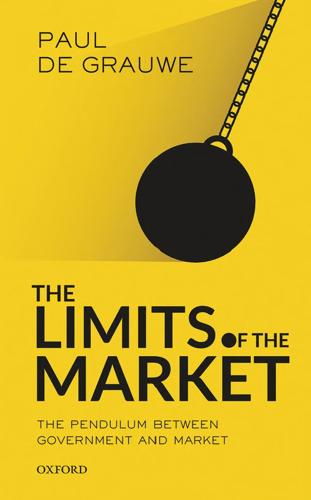
The Limits of the Market: The Pendulum Between Government and Market
by
Paul de Grauwe
and
Anna Asbury
Published 12 Mar 2017
In other words, there is no internal regulator for the environment to put pressure on external costs. That regulator must come from outside the market system and can only be organized by the government. Technological progress, however, may be able to offer some relief. Digital technologies create unprecedented possibilities for increased productivity. This is strongly emphasized in Erik Brynjolfsson and Andrew McAfee’s recent book.13 These authors see almost infinite new possibilities, which can also be used to tackle pollution. That is a very optimistic vision of the future: new technologies will save us from our downfall. If that is true, we are still left with the question I posed in Chapter , namely whether those technological revolutions will offer alternatives in time.
…
Arrow, ‘Gifts and exchanges’, Philosophy and Public Affairs, / (), pp. –. . Ronald Coase, ‘ The Nature of the Firm’, Economica, / (November ), pp. –. . See Frans de Waal, Our Inner Ape: The Best and Worst of Human Nature (London: Granta Books, ). See also Matt Ridley, The Origins of Virtue (London: Penguin Books, ). . Erik Brynjolfsson and Andrew McAfee, Race Against the Machine: How the Digital Revolution is Accelerating Innovation, Driving Productivity, and Irreversibly Transforming Employment and the Economy (Lexington, MA: Digital Frontier Press, ). . Robert Skidelsky and Edward Skidelsky, How Much is Enough? The Love of Money, and the Case for the Good Life (London: Allen Lane, ). .

The Future of the Professions: How Technology Will Transform the Work of Human Experts
by
Richard Susskind
and
Daniel Susskind
Published 24 Aug 2015
The Luddites viewed James Hargreaves’s spinning jenny in the nineteenth century with the same anxious suspicion that today’s pessimists view Tim Berners-Lee’s World Wide Web in the twenty-first century. See Eric Hobsbawm and George Rudé, Captain Swing (2001). 29 David Autor, ‘Polanyi’s Paradox and the Shape of Employment Growth’, NBER Working Paper 20485, National Bureau of Economic Research (2014). 30 Erik Brynjolfsson and Andrew McAfee, The Second Machine Age: Work, Progress, and Prosperity in a Time of Brilliant Technologies (2014). Also see Erik Brynjolfsson and Andrew McAfee, Race Against the Machine (2011). 31 Kasparov, ‘The Chess Master and the Computer’. 32 <http://www.ibm.com/smarterplanet/us/en/ibmwatson/> (accessed 23 March 2015). Also see John Kelly and Steve Hamm, Smart Machines (2013). 33 Autor, ‘Polanyi’s Paradox and the Shape of Employment Growth’, 38. 34 Autor, ‘Polanyi’s Paradox and the Shape of Employment Growth’, 38. 35 David Autor, Frank Levy, and Richard J.
…
Clayton Christensen and Henry Eyring, The Innovative University (2011). 12 Joseph Schumpeter describes the process of ‘creative destruction’ in Capitalism, Socialism and Democracy (1994), foreshadowing this contemporary literature. See part II, ch. VII. 13 See e.g. <http://www.data.gov> for the USA, <http://data.gov.uk> for the UK, and <http://www.data.go.jp> for Japan. 14 Erik Brynjolfsson and Andrew McAfee, The Second Machine Age (2014), ch. 12. 15 Most notably, the Sarbanes–Oxley Act of 2002 (enacted 30 July 2002), known also as the ‘Public Company Accounting Reform and Investor Protection Act’. This is part of the federal law of the USA. 16 See e.g. Glasgow Herald, 18 Nov.1985, p. 15. 17 <http://www.ey.com> (accessed 23 March 2015). 18 Atul Gawande, The Checklist Manifesto (2010), 34. 19 Gawande, The Checklist Manifesto, 36. 20 See Yochai Benkler, The Wealth of Networks—How Social Production Transforms Markets and Freedom (2006). 21 <http://www.tripadvisor.co.uk>. 22 See Eric Topol, The Patient Will See You Now (2015), on driverless cars and doctorless patients. 23 Penelope Eckert, ‘Communities of Practice’, in The Encyclopedia of Language and Linguistics, ed.
…
And they are given some academic support for this claim by the MIT economist David Autor, who suggests that ‘many of the tasks currently bundled into these jobs cannot readily be unbundled … without a substantial drop in quality’.29 However, this is simply not the experience of those who are working at the vanguard of the professions (see Chapter 2), nor of the current work of ‘process analysts’ (see section 6.8). Others argue that the most efficient future lies with machines and human beings working together. Human beings will always have value to add as collaborators with machines. This is one of the central arguments of Erik Brynjolfsson and Andrew McAfee in The Second Machine Age,30 and is also in the spirit of Garry Kasparov, the former chess world champion, who claims that a strong human player with a modest laptop can beat an extraordinarily powerful supercomputer.31 This position also aligns with IBM’s work on Watson. They speak of a ‘new partnership between people and computers’.32 We accept the force of this position in 2015.

Capitalism Without Capital: The Rise of the Intangible Economy
by
Jonathan Haskel
and
Stian Westlake
Published 7 Nov 2017
Source: authors’ calculations based on INTAN-Invest database (www.intan-invest.net). This raises an interesting question: Is it possible that the rise of intangible investment is nothing more than a consequence of improvements in IT? Is the intangible economy a sort of corollary of Moore’s Law or an epiphenomenon of what Erik Brynjolfsson and Andrew McAfee call the Second Machine Age? It is difficult to prove causality in technological change, but there are grounds to think it is a bit more complicated than that. It is certainly true that some intangibles operate through computers—indeed, for one category of intangibles, software, computers are a necessary precondition.
…
But the gains were realized through organizational and business practice changes in a low-tech sector. Or, to put it another way, there were big synergies between Walmart’s investment in computers and its investment in processes and supply chain development to make the most of the computers. It’s a relationship that has been documented in detail by Erik Brynjolfsson, an economist at MIT and a guru of the digital economy. Brynjolfsson’s research showed that organizational investment and tech investment were highly complementary; that is to say, the businesses that got the most out of their whizzy software were the ones that invested in organizational change too (Brynjolfsson, Hitt, and Yang 2002).
…
And in the last years computers have gotten even smarter: issuing boarding passes, checking you out at supermarkets, and answering routine questions over the phone. As these computers have gotten cheaper and cheaper, it’s become more and more worthwhile for firms to replace low-skilled workers with computers. Demand for those workers has fallen and so, therefore, have their wages. More recently, Erik Brynjolfsson and Andrew McAfee (2014) have warned that, because of the speed with which information technology improves, computers may start replacing humans much faster than we are used to. This “race against the machine” or “rise of the robots” could be expected to make poorer workers redundant, to the benefit of rich capitalists.
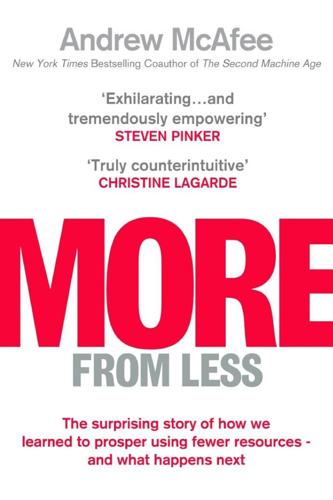
More From Less: The Surprising Story of How We Learned to Prosper Using Fewer Resources – and What Happens Next
by
Andrew McAfee
Published 30 Sep 2019
Yet several months later the cover of Forbes was still asking if anyone could catch Nokia. Innovation is not steady and predictable like the orbit of the Moon or the accumulation of interest on a certificate of deposit. It’s instead inherently jumpy, uneven, and random. It’s also combinatorial, as Erik Brynjolfsson and I discussed in our book The Second Machine Age. Most new technologies and other innovations, we argued, are combinations or recombinations of preexisting elements. The iPhone was “just” a cellular telephone plus a bunch of sensors plus a touch screen plus an operating system and population of programs, or apps.
…
I call this situation one of superstars and zombies within an industry; the more common phrase for it within economics is winner take all or winner take most. Van Reenen writes, “Many of the patterns are consistent with a… view where many industries have become ‘winner take most/all’ due to globalization and new technologies rather than a generalized weakening of competition due to relaxed antitrust rules or rising regulation.” Erik Brynjolfsson and I agree with this view.I We argued in 2008 that concentration was increasing because of tech progress, and that it would continue to do so. We made a simple point supported by a great deal of historical evidence: it’s extremely difficult for companies, even well-managed ones, to understand and extract the full value of powerful new technologies such as the steam engine, electrification, the smartphone, or artificial intelligence.
…
Back home at MIT my colleagues at the Initiative on the Digital Economy created an ideal environment for this work and lots of other research. David Verrill and Christie Ko kept the place running smoothly, Adjovi Koene took a lot of tasks off my plate, and Seth Benzel and Daniel Rock were great sounding boards for the work as it progressed. By this point it should go without saying that Erik Brynjolfsson, my frequent coauthor and collaborator, sharpened my thinking with every conversation. The research team that spun up around More from Less included three generations of MIT Sloan MBA students. Atad Peled led off, then passed the shared folders to Aya Suchi. She advanced the cause greatly, then handed off to the team of Maor Zeevi and Gal Schwartz, who worked with me to get things over the finish line before they graduated.
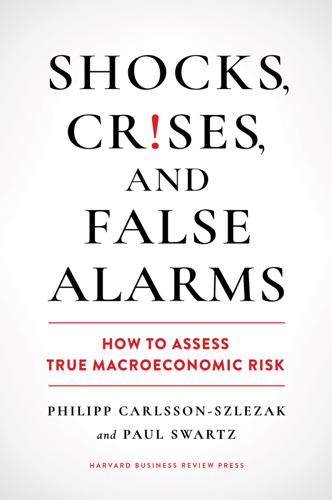
Shocks, Crises, and False Alarms: How to Assess True Macroeconomic Risk
by
Philipp Carlsson-Szlezak
and
Paul Swartz
Published 8 Jul 2024
Philipp Carlsson-Szlezak and Paul Swartz, “Pushing on Growth—the Future and Limits of the ‘Compulsive Stimulus Model,’ ” Sanford C. Bernstein, May 22, 2019. Reprinted in An Economic History of Now, vol. 2, September 2019. 3. For example, Erik Brynjolfsson suggested “intelligent machines [are] arguably a more important invention than just about any other invention we’ve ever made” and argues for much higher labor productivity to come. See Erik Brynjolfsson and Robert J. Gordon, “Is the Great Stagnation Finally Coming to an End?” Pairagraph, October 31, 2021, https://www.pairagraph.com/dialogue/9301beaf3a5b4a14868c682a36402474. 4. This is not to say that demand doesn’t matter.
…
See, for instance, Daniel Susskind, A World without Work: Technology, Automation and How We Should Respond (London: Penguin, 2020); David H. Autor, David A. Mindell, and Elisabeth Reynolds, The Work of the Future: Building Better Jobs in an Age of Intelligent Machines (Cambridge, MA: MIT Press, 2022); Erik Brynjolfsson and Andrew McAfee, The Second Machine Age: Work, Progress, and Prosperity in a Time of Brilliant Technologies (New York: W. W. Norton, 2016); David G. Blanchflower, Not Working: Where Have All the Good Jobs Gone? (Princeton, NJ: Princeton University Press, 2021); Martin Ford, Rise of the Robots: Technology and the Threat of a Jobless Future (New York: Basic Books, 2015); and Malcolm Frank, Paul Roehrig, and Ben Pring, What to Do When Machines Do Everything: How to Get Ahead in a World of AI, Algorithms, Bots, and Big Data (New York: John Wiley & Sons, 2017). 3.

Thank You for Being Late: An Optimist's Guide to Thriving in the Age of Accelerations
by
Thomas L. Friedman
Published 22 Nov 2016
That’s right—when I was running around in 2004 declaring that the world was flat, Facebook didn’t even exist yet, Twitter was still a sound, the cloud was still in the sky, 4G was a parking space, “applications” were what you sent to college, LinkedIn was barely known and most people thought it was a prison, Big Data was a good name for a rap star, and Skype, for most people, was a typographical error. All of those technologies blossomed after I wrote The World Is Flat—most of them around 2007. So a few years later, I began updating in earnest my view of how the Machine worked. A crucial impetus was a book I read in 2014 by two MIT business school professors—Erik Brynjolfsson and Andrew McAfee—entitled The Second Machine Age: Work, Progress, and Prosperity in a Time of Brilliant Technologies. The first machine age, they argued, was the Industrial Revolution, which accompanied the invention of the steam engine in the 1700s. This period was “all about power systems to augment human muscle,” explained McAfee in an interview, “and each successive invention in that age delivered more and more power.
…
He believes all the big gains were made in the “special century” between 1870 and 1970—with the likes of automobiles, radio, television, indoor plumbing, electrification, vaccines, clean water, air travel, central heating, women’s empowerment, and air-conditioning and antibiotics. Gordon is skeptical that today’s new technologies will ever produce another leap forward in productivity comparable to that special century. But MIT’s Erik Brynjolfsson has countered Gordon’s pessimism with an argument I find even more compelling. As we transition from an industrial-age economy to a computer-Internet-mobile-broadband-driven economy—that is, a supernova-driven economy—we are experiencing the growing pains of adjusting. Both managers and workers are having to absorb these new technologies—not just how they work but how factories and business processes and government regulations all need to be redesigned around them.
…
The primal one is this: Are things just getting too damned fast? The intellectual one is: Since the technological forces driving this change in the pace of change are not likely to slow down, how do we adapt? If your answer to the first question is “yes,” then let me assure you that you are not alone. Here is my favorite story in Erik Brynjolfsson and Andrew McAfee’s book The Second Machine Age: The Dutch chess grandmaster Jan Hein Donner was asked how he’d prepare for a chess match against a computer, like IBM’s Deep Blue. Donner replied: “I would bring a hammer.” Donner isn’t alone in fantasizing that he’d like to smash some recent advances in software and artificial intelligence (AI).
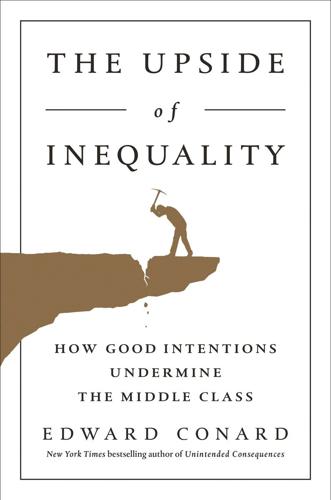
The Upside of Inequality
by
Edward Conard
Published 1 Sep 2016
John Cochrane, “The Fed Needn’t Rush to ‘Normalize,’” Wall Street Journal, September 16, 2015, http://www.wsj.com/articles/the-fed-neednt-rush-to-normalize-1442441737. Chapter 6: The Myth That Progress Hollows Out the Middle Class 1. Erik Brynjolfsson and Andrew McAfee, The Second Machine Age: Work, Progress, and Prosperity in a Time of Brilliant Technologies (New York: W. W. Norton, 2014), 202. 2. Christopher Matthews, “How Silicon Valley Is Hollowing Out the Economy (and Stealing from You to Boot),” Time, May 7, 2013, http://business.time.com/2013/05/07/how-silicon-valley-is-hollowing-out-the-economy-and-stealing-from-you-while-theyre-at-it. 3. Erik Brynjolfsson, “The Future of Work in the Age of the Machine: A Hamilton Project Policy Forum,” National Press Club, Washington, DC, February 19, 2015, http://www.hamiltonproject.org/assets/legacy/files/download_and_links/2015_02_24_THP_Future_of_Work_in_Machine_Age_tran script_unedited.pdf. 4.
…
Thomas Piketty, Capital in the Twenty-First Century (Cambridge, MA: Harvard University Press, 2013). 3. Lawrence Summers, “U.S. Economic Prospects: Secular Stagnation, Hysteresis, and the Zero Lower Bound,” Business Economics 49, no. 2 (February 24, 2014), http://larrysummers.com/wp-content/uploads/2014/06/NABE-speech-Lawrence-H.-Summers1.pdf. 4. Erik Brynjolfsson and Andrew McAfee, The Second Machine Age: Work, Progress, and Prosperity in a Time of Brilliant Technologies (New York: W. W. Norton, 2014), 202. 5. Alan Krueger, “Rise and Consequences of Inequality in the United States,” remarks at the Center for American Progress, January 12, 2012, https://www.whitehouse.gov/sites/default/files/krueger_cap_speech_final_remarks.pdf. 6.

Only Humans Need Apply: Winners and Losers in the Age of Smart Machines
by
Thomas H. Davenport
and
Julia Kirby
Published 23 May 2016
Where exactly we draw the line is not all that important because, when we think about what work is threatened, it’s all of the above. Why Worry About Less Work? Machines are becoming so capable that, today, it is hard to see the higher cognitive ground that many people could move to. That is making some very smart people worry. Massachusetts Institute of Technology (MIT) professors Erik Brynjolfsson and Andy McAfee, for example, in their acclaimed book, The Second Machine Age, note that the anticipated recovery in labor markets has been just around the corner for a long time. The persistence of high unemployment levels in Western economies might mean that the dislocation caused by the last wave of skill-biased technical change is permanent.
…
As Levy writes in a 2010 working paper for the Organisation for Economic Co-operation and Development (OECD), it involves not only listening to the patient’s words, but also his body language, tone of voice, eye contact, and incomplete sentences. He notes, “The doctor must be particularly alert for the famous ‘last minute’ of an appointment when the patient, on his way out the door, looks over his shoulder and says ‘By the way, my wife says I should tell you about this pain I have in my stomach.’”6 Levy’s MIT colleagues Erik Brynjolfsson and Andy McAfee agree with pattern recognition and complex communication as uniquely human traits, and they add a third: ideation. “Scientists come up with new hypotheses,” they write. “Chefs add a new dish to the menu. Engineers on a factory floor figure out why a machine is no longer working properly.
…
It’s definitely a realm in which some humility on the part of humans is called for. In one-on-one matches, we know the best chess players are computers these days. Yet the trouncing isn’t so complete as you might have been led to believe. The economist Tyler Cowen (not surprisingly, a chess champion in his youth) and The Second Machine Age authors Erik Brynjolfsson and Andrew McAfee use the example of “freestyle chess,” in which human chess players are free to use as much help from computers as they wish.11 The two of us personally don’t play chess much (we like to get paid for thinking that hard), but we gather that under these rules, people often manage to beat the best programs.
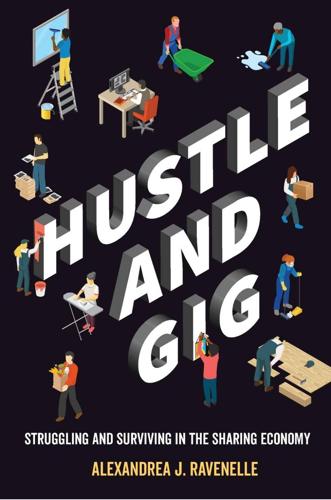
Hustle and Gig: Struggling and Surviving in the Sharing Economy
by
Alexandrea J. Ravenelle
Published 12 Mar 2019
Or the proliferation of outsourcing—of hiring others to do everything from walking dogs to cleaning homes to grocery shopping and chauffeuring—may further increase the “commodification of intimate life” and lead to additional pressure to make enough to pay for market services.28 Hiring workers off of platforms risks creating platform monopolies. As noted by Andrew McAfee and Erik Brynjolfsson, when more and more people use a platform or tool, a “network effect” arises, which is economist speak for the idea that certain goods become more valuable as more and more people use them. The most frequently given example is that of a fax machine. If only one person has a fax machine, it’s not very useful.
…
Additionally, earning a high wage for a gig or two doesn’t take into account the costs of benefits—sick leave, paid time off, unemployment or health insurance—that commonly equal 20 to 30 percent of compensation. As a result, the gig economy also raises issues related to inequality and stratification. Even though services market their platforms as bringing entrepreneurship to the masses, the real winners are individuals with capital to spare. In Race against the Machine, Erik Brynjolfsson and Andrew McAfee note that rapid technological change is destroying jobs faster than they are created, resulting in a “great decoupling” as productivity increases but employment decreases.59 Fellow economist David Autor disagrees with Brynjolfsson and McAfee about the robust increase in productivity but acknowledges that not all technological changes have been good.
…
May, Patrick. 2015. “Apple Says It’s Created 1 Million Jobs, App Store Is Going Gangbusters.” San Jose Mercury News, January 8. McAfee, Andrew. N.d. “The Great Decoupling of the US Economy.” Andrew McAfee (website). http://andrewmcafee.org/2012/12/the-great-decoupling-of-the-us-economy/. McAfee, Andrew, and Erik Brynjolfsson. 2017. Machine, Platform, Crowd: Harnessing Our Digital Future. New York: W.W. Norton. McKinney, K. (1994). “Sexual Harassment and College Faculty Members.” Deviant Behavior 15(2):171–91. McKinney, Sarah. 2013. “A Growing Segment of Sharing Economy Users? Entrepreneurs.” Forbes, November 9.
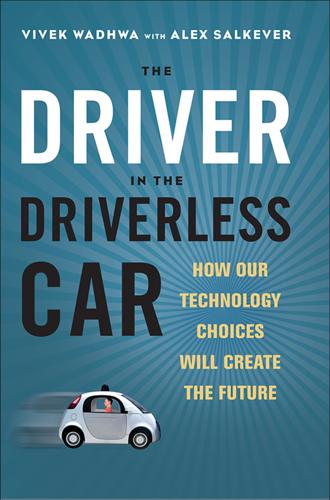
The Driver in the Driverless Car: How Our Technology Choices Will Create the Future
by
Vivek Wadhwa
and
Alex Salkever
Published 2 Apr 2017
The extreme risk is apocalyptic: the robots become smarter than we are and take over the world, rendering humans powerless on their own planet. An equally troubling but less existential, and more realistic, risk is that the robots increasingly deprive us of our jobs. Some researchers, such as Erik Brynjolfsson and Andrew McAfee of the Massachusetts Institute of Technology, see the automatons inevitably gobbling up more and more meaningful slices of our work.9 Oxford University researchers Carl Benedikt Frey and Michael A. Osborne caused a tremendous stir in September 2013, when they asserted in a seminal paper that A.I. would put 47 percent of current U.S. employment “at risk.”10 The paper, “The Future of Employment,” is a rigorous and detailed historical review of research on the effect of technology innovation upon labor markets and employment.
…
AJung Moon, “Machine Agency,” Roboethics info Database 22 April 2012, http://www.amoon.ca/Roboethics/wiki/the-open-roboethics-initiative/machine-agency. 8. Jason Kravarik and Sara Sidner, “The Dallas shootout, in the eyes of police,” CNN 15 July 2016, https://en.wikipedia.org/wiki/2016_shooting_of_Dallas_police_officers (accessed 21 October 2016). 9. Erik Brynjolfsson and Andrew McAfee, The Second Machine Age: Work, Progress, and Prosperity in a Time of Brilliant Technologies (rev.), W.W. Norton, 2016, http://books.wwnorton.com/books/The-Second-Machine-Age (accessed 21 October 2016). 10. Michael A. Osborne and Carl Benedikt Frey, The Future of Employment: How Susceptible Are Jobs to Computerisation?

Augmented: Life in the Smart Lane
by
Brett King
Published 5 May 2016
An exabyte (EB) is 1024 petabytes, a zettabyte (ZB) is 1024 exabytes and a yottabyte (YB)—named after the Star Wars character Yoda—is 1024 zettabytes. 20 Statistics from the Library of Congress 21 According to Google Books software engineer Leonid Taycher, the actual figure was 129,864,880 books as of 2010. 22 Allowing for an average of 1 megabyte (MB) equivalent of storage required for each book, and accounting for approximately 9 zettabytes of content generated in 2014, we get the above figures. 23 “Michelle Phan: From YouTube Star to $84 Million Startup Founder,” Re/code, 27 October 2014. 24 You can check it out at http://www.businessinsider.com.au/chart-of-the-day-smartphones-us-saturation-2013-1. 25 Kate Dreyer, “Mobile Internet Usage Skyrockets in Past 4 Years to Overtake Desktop as Most Used Digital Platform,” comScore, 13 April 2015. 26 “Your Phone Loses Value Pretty Fast,” Priceonomics, February 2012. 27 Jeff Desjardins, “The Market has no bite without FANG stocks,” Visual Capitalist, 20 November 2015, http://www.visualcapitalist.com/the-market-has-no-bite-without-the-fang-stocks-chart/. 28 4.7 per cent in the United States and 8.6 per cent in the United Kingdom by 2014 29 Author’s own analysis from Business Insider, LinkedIn raw data/sources 30 Erik Brynjolfsson and Andrew McAfee. Race Against the Machine: How the Digital Revolution Is Accelerating Innovation, Driving Productivity, and Irreversibly Transforming Employment and the Economy (Richmond, VA: Digital Frontier Press, 2011). See also Erik Brynjolfsson and Andrew McAfee. The Second Machine Age: Work, Progress, and Prosperity in a Time of Brilliant Technologies (London: W. W. Norton, 2014). Chapter 2 The Augmented Age “Any sufficiently advanced technology is indistinguishable from magic.”
…
This is in stark contrast to previous booms like the manufacturing boom of the United States in the early 20th century, which was credited for being responsible for the broad creation of the middle class. The Internet, and with it broad technology automation, has created a more serious problem for employment. Erik Brynjolfsson, a professor at the MIT Sloan School of Management, and his collaborator Andrew McAfee have been arguing for the last five years that advances in computer technology—from improved industrial robotics to automated translation services—are largely behind the sluggish employment growth of the last 10 to 15 years.30 Figure 1.11: Productivity changes related to employment and median family income (Credit: HBR) Brynjolfsson and McAfee analysed the last 70 years of employment data and found that while productivity has continued to improve, employment has not kept up pace in recent years.

The Industries of the Future
by
Alec Ross
Published 2 Feb 2016
Currently youth unemployment in the United States is 12 percent, more than twice the nation’s overall average, and it is far higher in most of the rest of the world. If entry-level restaurant jobs are reduced or eliminated, how much harder will it be to get a first job? How about a second? There are earlier precedents for these types of job declines. MIT professor Erik Brynjolfsson calls it “the great paradox of our era. Productivity is at record levels, innovation has never been faster, and yet at the same time, we have a falling median income and we have fewer jobs. People are falling behind because technology is advancing so fast and our skills and our organizations aren’t keeping up.”
…
As he explained in a 2012 New York Times article: John Markoff, “Skilled Work, without the Worker,” New York Times, August 19, 2012, http://www.nytimes.com/2012/08/19/business/new-wave-of-adept-robots-is-changing-global-industry.html?pagewanted=all&_r=0. But wages in China: Keith Bradsher, “Even as Wages Rise, China Exports Grow,” New York Times, January 10, 2014, http://www.nytimes.com/2014/01/10/business/international/chinese-exports-withstand-rising-labor-costs.html?hpw&rref=business. During the recent recession: Erik Brynjolfsson and Andrew McAfee, Race against the Machine: How the Digital Revolution Is Accelerating Innovation, Driving Productivity, and Irreversibly Transforming Employment and the Economy (Lexington, MA: Digital Frontier, 2011). Two Oxford University professors: Carl Benedikt Frey and Michael A. Osborne, “The Future of Employment: How Susceptible Are Jobs to Computerisation?”
…
The Obama operation was about: Zac Moffatt, “Successes of the Romney and Republican Digital Efforts in 2012,” Targeted Victory, December 11, 2012, http://www.targetedvictory.com/2012/12/11/success-of-the-romney-republican-digital-efforts-2012/; “Inside the Cave.” And my dad looks at me: Dan Wagner, interview with Ari Ratner, May 28, 2014. And you can do that now: Ibid. Typically large data analysis: Michael Slaby, interview with Ari Ratner, December 2, 2013. Big data’s really just: Ibid. It examines small facts and aggregates: Erik Brynjolfsson and Andrew McAfee, “The Big Data Boom Is the Innovation Story of Our Time,” Atlantic, November 21, 2011, http://www.theatlantic.com/business/archive/2011/11/the-big-data-boom-is-the-innovation-story-of-our-time/248215/; Zeynep Tufekci, “Engineering the Public: Big Data, Surveillance and Computational Politics,” First Monday 19, no. 7 (2014), http://firstmonday.org/ojs/index.php/fm/article/view/4901/4097.

The Technology Trap: Capital, Labor, and Power in the Age of Automation
by
Carl Benedikt Frey
Published 17 Jun 2019
To learn, AlphaGo first watched previously played professional Go games, and then it played millions of games against itself, steadily improving its performance. Its training data set, consisting of thirty million board positions reached by 160,000 professional players, was far greater than the experience any professional player could accumulate in a lifetime. The event marks what Erik Brynjolfsson and Andrew McAfee have called the “second half of the chessboard.”5 As Scientific American marveled, “An era is over and a new one is beginning. The methods underlying AlphaGo, and its recent victory, have huge implications for the future of machine intelligence.”6 Deep Blue may have beaten Kasparov at chess.
…
In the early days of automation, the training and retraining of employees often took longer than expected, and many companies did not fully appreciate the obstacles involved in getting machines, computers, and sophisticated software to work together effectively. In a number of studies, the economists Erik Brynjolfsson, Timothy Bresnahan, and Lorin Hitt consistently found that investments in computer technology contributed to firm productivity mainly when complementary organizational changes were made.68 In the 1980s, the computer revolution centered on productivity improvements in individual tasks, such as word processing and manufacturing operations control.
…
They may or may not have sufficient internal expertise to hire good data scientists, which is why we can expect to see heterogeneity in productivity as this new skill percolates through the labor markets.84 For these reasons, Amara’s Law will likely to apply to AI, too. Myriad necessary ancillary inventions and adjustment are required for automation to happen. Erik Brynjolfsson, who was among those investigating the role of computer technologies in the productivity boom of the late 1990s, thinks that the trajectory of AI adoption is likely to mirror the past in this regard. In a joint paper with Daniel Rock and Chad Syverson, two economists, he argues that as happened with computers back in the 1990s, the adoption of AI will require not only improvements in the technology itself, but significant complementary investment and plenty of experimentation to exploit its full potential.85 During this phase, history tells us, the economy goes through an adjustment process with slow productivity growth

Platform Revolution: How Networked Markets Are Transforming the Economy--And How to Make Them Work for You
by
Sangeet Paul Choudary
,
Marshall W. van Alstyne
and
Geoffrey G. Parker
Published 27 Mar 2016
In the process of teaching and learning about platforms, I came to meet Tom Eisenmann, who has been a great friend and collaborator. His ideas have contributed significantly to this work. I was also fortunate to meet our coauthor Sangeet Choudary, who has worked at and consulted with numerous platform firms. His experience has been wonderfully complementary to my own. I thank Erik Brynjolfsson, Andy McAfee, Dave Verrill, and the great team at the MIT Initiative on the Digital Economy (IDE). The IDE has been instrumental in hosting the MIT Platform Summit and providing Marshall and me with the opportunity to work with multiple companies as part of our effort to bridge practice and academia.
…
I look forward to many more years of entertainment and fascination as we continue the journey. MARSHALL W. VAN ALSTYNE Thank you, Erik and Alexander, for your love, support, and patience while Dad worked on this book. Thank you, Joyce, for carrying through on a project that’s finally over. Family will always matter most. I thank my advisors at MIT: Erik Brynjolfsson, Chris Kemerer, Stuart Madnick, Thomas Malone, Wanda Orlikowski, and Lones Smith. The standards you set were remarkable. I also thank the MIT community for letting me be a part of it, for its openness, and for its joy in experimentation. There is a reason that Open CourseWare, edX, PET scans, RSA encryption, spreadsheets, and condensed soup sprang from people in this environment.
…
There is a reason that Open CourseWare, edX, PET scans, RSA encryption, spreadsheets, and condensed soup sprang from people in this environment. It is one of the most grueling and at the same time one of the best intentioned and most rewarding places anywhere. I join Geoff in thanking the members of the great team at the MIT Initiative on the Digital Economy, including Dave Verrill, Erik Brynjolfsson, Andy McAfee, Glenn Urban, Tommy Buzzell, and Justin Lockenwitz. Thank you Michael Schrage for good wine and deep thoughts. You all are where great ideas gain great influence. Our work on platforms draws heavily on that of Tom Eisenmann and Andrei Hagiu at Harvard Business School, whose teaching materials are excellent.

Delete: The Virtue of Forgetting in the Digital Age
by
Viktor Mayer-Schönberger
Published 1 Jan 2009
Why should it make sense to offer customers combined access to, say, a database of legal precedents together with a database containing the full text of leading newspapers and newswires? At least at first glance, lawyers searching for precedents and journalists researching stories seem to have little in common. But such a strategy is, as professors Yanos Bakos and Erik Brynjolfsson have shown, eminently sensible, and preferable to selling separately access to individual information sets.38 Their reasoning is straightforward: Information vendors do not know exactly what information their customers want, and the smaller and more focused an information set is, the harder it is to know whether it meets customer preferences.
…
Essaies: religious meditations : places of perswasion and disswasion : seene and allowed. London: John Laggard. 1606. Baker, John C. et al. Mapping the Risks: Assessing the Homeland Security Implications of Publicly Available Geospatial Information. Santa Monica, CA: RAND. 2004. Bakos, Yannis and Erik Brynjolfsson. “Bundling Information Goods: Pricing, Profits and Efficiency.” Management Science 45 (Dec. 1999): 1613–30. Balkin, Jack M. “The Constitution in the National Surveillance State.” Minnesota Law Review 93 (2008): 1–25. Bannon, Liam J. “Forgetting as a Feature, Not a Bug: The Duality of Memory and Implications for Ubiquitous Computing.”

The Economic Singularity: Artificial Intelligence and the Death of Capitalism
by
Calum Chace
Published 17 Jul 2016
Unwilling to give up on traditional American ideals like the free market, a capitalist economy and indeed the Protestant work ethic, he advocates a universal basic income of only $10,000 a year - a level low enough to leave the incentive to find work in place. Even so, he is pessimistic about the prospect of persuading his fellow Americans to adopt the idea: “a guaranteed income will probably remain unfeasible for the foreseeable future.” Andrew McAfee and Erik Brynjolfsson As a pair of MIT professors[xxxiv], McAfee and Brynjolfsson bring academic credibility to their book on AI automation, “The Second Machine Age”. They have helped to validate the discussion of the possibility of technological unemployment. Their book (and their argument) is in three parts.
…
But while technology company executives sound breezy about the prospects for continued unemployment as machine intelligences get smarter, some of the academic authors who broadly agree with them sound more tentative. In chapter 3.1 we saw that in their book “The Second Machine Age”, MIT professors Erik Brynjolfsson and Andrew McAfee believe that for many years to come, humans will be better than machines at generating new ideas, and complex forms of communication. They think that capitalism should be defended and retained, but they sound less confident about what will happen in the medium term. They argue for an overhaul of the US education system, but they don’t sound convinced that will be enough, and they speculate that a negative income tax may eventually become necessary.

Cogs and Monsters: What Economics Is, and What It Should Be
by
Diane Coyle
Published 11 Oct 2021
The technology has got to the point of indispensability. People are spending considerable amounts of time online. In the UK this doubled between 2007 and 2017, to reach 24 hours a week, one-seventh of what would be possible without sleep. There is other evidence about the high value we place on it. Erik Brynjolfsson asked how much people would need in compensation for giving up digital services such as search or social media for a certain period of time. The average person was willing to give up all search engines for a year in return for about $17,000, which is around half the US median income. For email, the figure was $6,000.
…
The lectures also reflect work with wonderful co-authors: Mo Abdirahman, Stephanie Diepeveen, Richard Heys, Penny Mealy, Cahal Moran, Leonard Nakamura, David Nguyen, Marianne Sensier, Will Stewart, Manuel Tong, Adrian Weller, Timothy Yeung. I am grateful to many other colleagues in Cambridge and beyond for their comments and conversations helping stimulate my thinking at various stages through the years, including Matthew Agarwala, Anna Alexandrova, Eric Beinhocker, Tim Besley, Sam Bowles, John Bowers, Erik Brynjolfsson, Wendy Carlin, Vasco Carvalho, Jagjit Chadha, Carol Corrado, Jacques Crémer, Meredith Crowley, Partha Dasgupta, Mark Fabian, Marco Felici, Amelia Fletcher, Jason Furman, Tim Gardam, Rachel Griffith, Dennis Grube, Andrew Haldane, Jonathan Haskel, Cameron Hepburn, Cecilia Heyes, Bill Janeway, Dale Jorgenson, Saite Lu, Derek McAuley, Philip Marsden, David Miles, John Naughton, Jennifer Rubin, David Runciman, Paul Seabright, Margaret Stevens, Joseph Stiglitz, Jeni Tennison, Alex Teytelboym, Jean Tirole, Flavio Toxvaerd, Romesh Vaitilingam, Bart Van Ark, Tony Venables, Anna Vignoles, Dimitri Zenghelis.
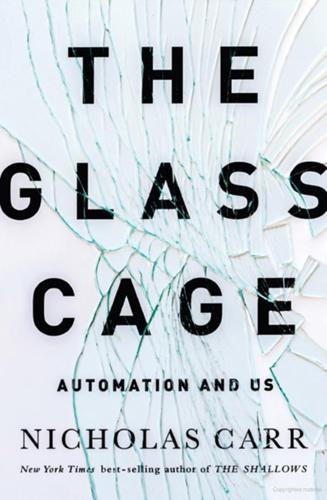
The Glass Cage: Automation and Us
by
Nicholas Carr
Published 28 Sep 2014
While it’s not unusual for companies to wait until a recovery is well established before recruiting new workers, this time the hiring lag seemed interminable. Job growth remained unusually tepid, the unemployment rate stubbornly high. Seeking an explanation, and a culprit, people looked to the usual suspect: labor-saving technology. Late in 2011, two respected MIT researchers, Erik Brynjolfsson and Andrew McAfee, published a short electronic book, Race against the Machine, in which they gently chided economists and policy makers for dismissing the possibility that workplace technology was substantially reducing companies’ need for new employees. The “empirical fact” that machines had bolstered employment for centuries “conceals a dirty secret,” they wrote.
…
Government Printing Office, 1962), 721. 22.Stanley Aronowitz and William DiFazio, The Jobless Future: Sci-Tech and the Dogma of Work (Minneapolis: University of Minnesota Press, 1994), 14. The emphasis is Aronowitz and DiFazio’s. 23.Jeremy Rifkin, The End of Work: The Decline of the Global Labor Force and the Dawn of the Post-Market Era (New York: Putnam, 1995), xv–xviii. 24.Erik Brynjolfsson and Andrew McAfee, Race against the Machine: How the Digital Revolution Is Accelerating Innovation, Driving Productivity, and Irreversibly Transforming Employment and the Economy (Lexington, Mass.: Digital Frontier Press, 2011). Brynjolfsson and McAfee extended their argument in The Second Machine Age: Work, Progress, and Prosperity in a Time of Brilliant Technologies (New York: W.

The Autonomous Revolution: Reclaiming the Future We’ve Sold to Machines
by
William Davidow
and
Michael Malone
Published 18 Feb 2020
Ellis, “The End of Active Investing?,” Financial Times, January 19, 2017, https://www.ft.com/content/6b2d5490-d9bb-11e6-944b-e7eb37a6aa8e (accessed June 27, 2019). 29. William H. Davidow, Overconnected: The Promise and Threat of the Internet (New York: Delphinium Books,2011), 79. 30. Andrew McAfee and Erik Brynjolfsson, Machine Platform Crowd (New York: W. W. Norton, 2017), 171–174. 31. Ashlee Vance, “How Two Brothers Turned Seven Lines of Code into a $9.2 Billion Startup,” Bloomberg, August 1, 2017, https://www.bloomberg.com/news/features/2017-08-01/how-two-brothers-turned-seven-lines-of-code-into-a-9-2-billion-startup (accessed June 27, 2019). 32.
…
“Economic News Release,” Bureau of Labor Statistics, August 2, 2019, https://www.bls.gov/news.release/empsit.t17.htm. 43. “Fifty Years of Federal Deficits as Pct GDP,” U.S. Government Debt, https://www.usgovernmentdebt.us/spending_chart_2010_2020USp_19s2li011lcn_G0f_Fifty_Years_Of_Federal_Deficits_As_Pct_GDP-view (accessed August 15, 2019). 44. Erik Brynjolfsson and Andrew McAfee, The Second Machine Age (New York: W. W. Norton, 2014), 221. 45. Bill Snyder, “You’ll Never Get Google Fiber—But You Don’t Need It Anyway,” InfoWorld, December 6, 2012, https://www.infoworld.com/article/2616265/you-ll-never-get-google-fiber----but-you-don-t-need-it-anyway.html. 46.

How to Fix the Future: Staying Human in the Digital Age
by
Andrew Keen
Published 1 Mar 2018
When we don’t know how to solve a big problem, we shove it into the classroom and make underpaid and overworked teachers responsible for fixing it. The bigger and more amorphous the problem, the more we hand it off to schools to fix. So, for example, in their excellent bestselling The Second Machine Age—about the economic impact of Moore’s Law on society—the MIT economists Erik Brynjolfsson and Andrew McAfee make education their number one policy recommendation for solving the American future. “Teach the children well,” Brynjolfsson and McAfee conclude, speaking of the need to pay teachers better and make them more accountable for their pedagogical work, particularly the teaching of “hard-to-measure skills like creativity and unstructured problem-solving.”
…
More, Utopia, 51. 10. Rutger Bregman, Utopia for Realists: How We Can Build the Ideal World (Little Brown, 2017). 11. Martin Ford, Rise of the Robots: Technology and the Threat of a Jobless Future (Basic Books, 2016). 12. Albert Wenger, World After Capital (worldaftercapital.org 2016). 13. Erik Brynjolfsson and Andrew McAfee, The Second Machine Age: Work, Progress and Prosperity in a Time of Brilliant Technologies (Norton, 2014), 213. 14. Lee Rainie, “The Future of Jobs and Jobs Training,” Pew Research Center, May 3, 2017. 15. Danielle Pacquette, “Bosses Believe Your Work Skills Will Soon Be Useless,” Washington Post, May 3, 2017. 16.
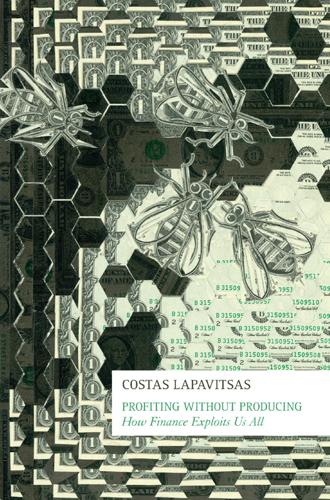
Profiting Without Producing: How Finance Exploits Us All
by
Costas Lapavitsas
Published 14 Aug 2013
For a global perspective on the interaction between part-time employment and women’s entry into the labour force, see Guy Standing, ‘Global Feminization Through Flexible Labor’, World Development 17:7, 1989; and Guy Standing, ‘Global Feminization Through Flexible Labor: A Theme Revisited’, World Development 27:3, 1999. 7 There is sizeable mainstream literature arguing that new technology has altered the nature of work by adding intangible organizational assets to the production process; see Erik Brynjolfsson and Lorin Hitt, ‘Beyond Computation’, Journal of Economic Perspectives 14:4, 2000; Brynjolfsson and Hitt, ‘Computing Productivity’, MIT-Sloan Working Paper 4210–01, 2003; Brynjolfsson, Hitt, and Shinkyu Yang, ‘Intangible Assets’, Brookings Papers on Economic Activity: Macroeconomics, vol. 1, 2002; Timothy Bresnahan, Brynjolfsson, and Hitt, ‘Information Technology, Workplace Organization, and the Demand for Skilled Labor: Firm-Level Evidence’, Quarterly Journal of Economics 117:1, 2002; Marshall Van Alstyne and Brynjolfsson, ‘Global Village or Cyber-Balkans’, Management Science, 2004.
…
Brenner, Robert, and Mark Glick, ‘The Regulation Approach: Theory and History’, New Left Review 188, 1991, pp. 45–119. Bresnahan, Timothy, and Manuel Trajtenberg, ‘General Purpose Technologies: “Engines of Growth?” ’, NBER Working Paper No. 4148, National Bureau of Economic Research, 1992. Bresnahan, Timothy, Erik Brynjolfsson, and Loren Hitt, ‘Information Technology, Workplace Organization, and the Demand for Skilled Labor: Firm-Level Evidence’, Quarterly Journal of Economics 117:1, 2002, pp. 339–76. Brewer, Anthony, Marxist Theories of Imperialism, 2nd ed., London: Routledge, 1990. Brownbridge, Martin, and Charles Harvey, Banking in Africa, Oxford: Currey, 1998.
…
Usher, Abbott, ‘The Early History of Deposit Banking in Mediterranean Europe’, Cambridge, MA: Harvard University Press, 1943. Usher, Abbott, ‘The Origins of Banking: The Primitive Bank of Deposit, 1200–1600’ in Enterprise and Secular Change, ed. Frederic Lane and Jelle Riemersma, Homewood, IL: Richard Irwin. Originally published in Economic History Review, 1934, IV, pp. 399–428, 1953. Van Alstyne, Marshall, and Erik Brynjolfsson, ‘Global Village or Cyber-Balkans: Modeling and Measuring the Integration of Electronic Communities’, Management Science, 2004. Van Els, Peter, Alberto Locarno, Julian Morgan, and Jean-Pierre Villetelle, ‘Monetary Policy Transmission in the Euro Area: What Do Aggregate and National Structural Models Tell Us?’
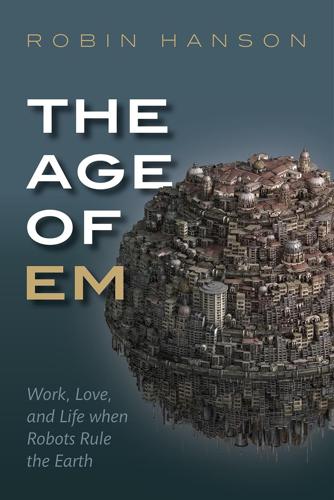
The Age of Em: Work, Love and Life When Robots Rule the Earth
by
Robin Hanson
Published 31 Mar 2016
Acknowledgments For their comments, I thank Paul Christiano, Peter Twieg, Katja Grace, Carl Shulman, Tyler Cowen, Fabio Rojas, Bonnie Hanson, Luke Muehlhauser, Nikola Danaylov, Bryan Caplan, Michael Abramowicz, Gaverick Matheny, Paul Crowley, Peter McCluskey, Sam Wilson, Chris Hibbert, Thomas Hanson, Daniel Houser, Kaj Sotala, Rong Rong, David Friedman, Michael LaTorra, Ben Goertzel, Steve Omohundro, David Levy, Jim Miller, Mike Halsall, Peggy Jackson, Jan-Erik Strasser, Robert Lecnik, Andrew Hanson, Shannon Friedman, Karl Mattingly, Ken Kittlitz, Teresa Hartnett, Giulio Prisco, David Pearce, Stephen Van Sickle, David Brin, Chris Yung, Adam Gurri, Matthew Graves, Dave Lindbergh, Scott Aaronson, Gary Drescher, Robert Koslover, Don Hanson, Michael Raimondi, William MacAskill, Eli Dourado, David McFadzean, Bruce Brewington, Marc Ringuette, Daniel Miessler, Keith Henson, Garett Jones, Alex Tabarrok, Lee Corbin, Norman Hardy, Charles Zheng, Stuart Armstrong, Vernor Vinge, Ted Goertzel, Mark Lillibridge, Michael Chwe, Olle Häggström, Jaan Tallinn, Joshua Fox, Chris Hallquist, Joshua Fox, Kevin Simler, Eric Falkenstein, Lotta Moberg, Ute Shaw, Matt Franklin, Nick Beckstead, Robyn Weaving, François Rideau, Eloise Rosen, Peter Voss, Scott Sumner, Phil Goetz, Robert Rush, Donald Prell, Olivia Gonzalez, Bradley Andrews, Keith Adams, Agustin Lebron, Karl Wiberg, Thomas Malone, Will Gordon, Philip Maymin, Henrik Jonsson, Mark Bahner, Adam Lapidus, Tom McKendree, Evelyn Mitchell, Jacek Stopa, Scott Leibrand, Paul Ralley, Anders Sandberg, Eli Lehrer, Michael Klein, Lumifer, Joy Buchanan, Miles Brundage, Harry Beck, Michael Price, Tim Freeman, Vladimir M., David Wolf, Randall Pickett, Zack Davis, Tom Bell, Harry Hawk, Adam Kolber, Dean Menk, Randall Mayes, Karen Maloney, Brian Tomasik, Ramez Naam, John Clark, Robert de Neufville, Richard Bruns, Keith Mansfield, Gordon Worley, Giedrius, Peter Garretson, Christopher Burger, Nithya Sambasivam, Zachary Weinersmith, Luke Somers, Barbara Belle, Jake Selinger, Geoffrey Miller, Arthur Breitman, Martin Wooster, Daniel Boese, Oge Nnadi, Joseph Mela, Diego Caleiro, Daniel Lemire, Emily Perry, Jess Riedel, Jon Perry, Eli Tyre, Daniel Erasmus, Emmanuel Saadia, Erik Brynjolfsson, Anamaria Berea, Niko Zinovii, Matthew Farrell, Diana Fleischman, and Douglas Barrett. I have received no financial assistance for this book and its related research, other than the freedom that academic tenure has provided me. I deeply thank my GMU colleagues for granting me that unusual privilege.
…
Journal of Law and Economics 42(2): 611–642. Angier, Natalie. 2005. “Almost Before We Spoke, We Swore.” New York Times, September 20. Anwar, Shamena, Patrick Bayer, and Randi Hjalmarsson. 2014. “The Role of Age in Jury Selection and Trial Outcomes.” Journal of Law and Economics 57(4): 1001–1030. Aral, Sinan, Erik Brynjolfsson, and Marshall Van Alstyne. 2007. “Information, Technology and Information Worker Productivity: Task Level Evidence.” NBER Working Paper No. 13172, June. Aral, Sinan, and Dylan Walker. 2012. “Identifying Influential and Susceptible Members of Social Networks.” Science 337(6092): 337–341. Armstrong, Stuart, and Kaj Sotala. 2012.
…
“Evidence for a Collective Intelligence Factor in the Performance of Human Groups.” Science 330(6004): 686–688. Wout, Félice van’t, Aureliu Lavric, and Stephen Monsell. 2015. “Is It Harder to Switch Among a Larger Set of Tasks?” Journal of Experimental Psychology: Learning, Memory, and Cognition 41(2): 363–376. Wu, Lynn, Ben Waber, Sinan Aral, Alex Pentland, Erik Brynjolfsson, and Alex Pentland. 2008. “Mining Face-to-Face Interaction Networks Using Sociometric Badges: Predicting Productivity in an IT Configuration Task.” International Conference on Information Systems 2008 Proceedings. 127. Yang, Mu-Jeung, Lorenz Kueng, and Bryan Hong. 2015. “Business Strategy and the Management of Firms.”
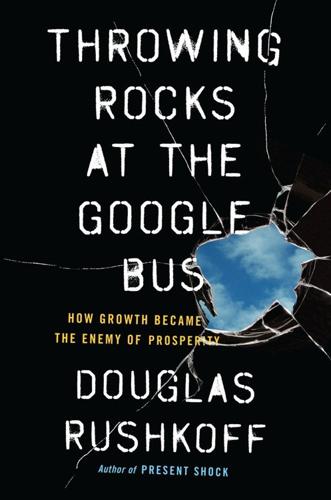
Throwing Rocks at the Google Bus: How Growth Became the Enemy of Prosperity
by
Douglas Rushkoff
Published 1 Mar 2016
Yet we continue to optimize our businesses and our economy for growth, even as we transition toward an entirely different technological and social landscape—one with very different potentials. This is why the leading voices today are those that still treat the emerging digital economy as Industrialism 2.0 or, as Massachusetts Institute of Technology professors Erik Brynjolfsson and Andrew McAfee put it in the title of their respected business book, The Second Machine Age. It’s no wonder such ideas captivate the business community: for all their revolutionary bravado they are actually promising business as usual. Workers will continue to be displaced by automation, corporations will remain the major players in the economic landscape, and it’s up to people to keep up with the pace of technological change if they want to survive.
…
Women of the late Middle Ages in Europe were taller than at any other period until the 1970s. Bernard Lietaer and Stephen Belgin, New Money for a New World (Boulder, Colo.: Qiterra Press: 2011). 3. Douglas Rushkoff, Life Inc.: How Corporations Conquered the World, and How We Can Take It Back (New York: Random House, 2009), 8. 4. Erik Brynjolfsson and Andrew McAfee, The Second Machine Age: Work, Progress, and Prosperity in a Time of Brilliant Technologies (New York, London: W. W. Norton, 2014). 5. Michael Hauben and Ronda Hauben, “Netizen: On the History and Impact of Usenet and the Internet,” First Monday: Peer-Reviewed Journal on the Internet 3, no. 7 (July 6, 1998). 6.
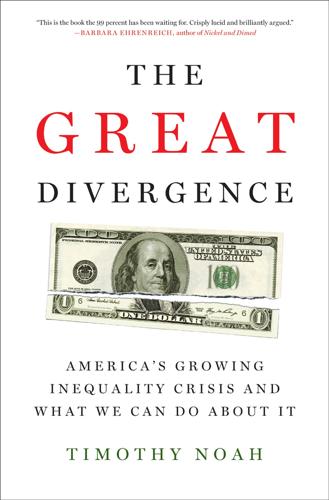
The Great Divergence: America's Growing Inequality Crisis and What We Can Do About It
by
Timothy Noah
Published 23 Apr 2012
A truck driver making a left turn on a busy city street, Levy and Murhane note, has to process visual and aural information about what’s happening on the street; tactile information about the truck’s probable speed once he hits the accelerator; and split-second calculations about probable trajectories for people and other vehicles. All this is well beyond the ability of a computer.8 Or so it seemed when Levy and Murnane wrote their book. In 2011 their MIT colleagues Erik Brynjolfsson and Andrew McAfee of the Sloan School of Management wrote that this conclusion had become obsolete by the end of 2010. In October of that year Google automated a fleet of Toyota Priuses and put them on the road (with human drivers behind the wheel as safety backups). The robocars navigated from Google’s Mountain View, California, headquarters to its Santa Monica office, taking a detour along the way to wind down San Francisco’s Lombard Street (“the crookedest street in the world”).
…
.: Princeton University Press, 2004), 13–25; and Farhad Manjoo, “Will Robots Steal Your Job?,” Slate, Sept. 26–30, 2011, at http://www.slate.com/articles/technology/robot_invasion/2011/09/will_robots_steal_your_job.html. Levy and Murnane’s book grew out of a 2003 paper that they wrote with MIT’s David Autor. 9. Erik Brynjolfsson and Andrew McAfee, Race Against the Machine: How the Digital Revolution Is Accelerating Innovation, Driving Productivity, and Irreversibly Transforming Employment and the Economy (Lexington, MA: Digital Frontier Press, e-book, 2011), chap. 2; and Sebastian Thrun, “What We’re Driving At,” The Official Google Blog, Oct. 9, 2010, at http://googleblog.blogspot.com/2010/10/what-were-driving-at.html. 10.
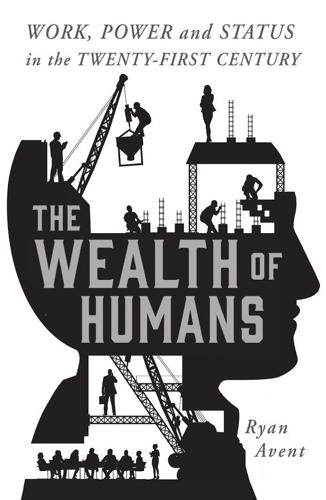
The Wealth of Humans: Work, Power, and Status in the Twenty-First Century
by
Ryan Avent
Published 20 Sep 2016
They have already begun. The subject of the future of work in a digital economy has been well covered – in serious magazines, including but by no means limited to my employer, The Economist, and in a growing number of important books. Worries and speculation have grown more intense and more common since 2011, when Erik Brynjolfsson and Andrew McAfee published Race Against the Machine,19 which laid out in compelling detail how quickly the capabilities of clever software and robots were improving. Authors like Martin Ford, whose 2015 book Rise of the Robots20 described a vision of a post-work world, argue that robots and machine intelligence will create a world wholly different from anything that has come before, and that a techno-socialism of sorts will need to be adopted to keep society functioning.
…
Yet that, they say, should in no way convince us that future progress will be similarly disappointing. On the contrary, a long period of modest progress is precisely what we would expect to see from a technology improving in exponential fashion from a very modest starting point. In an influential 2012 book, Race Against the Machine, two MIT scholars of technology and business, Erik Brynjolfsson and Andrew McAfee, argue that people aren’t very good at assessing the pace of exponential technological progress (for example, the repeated doubling in microchip power described by Moore’s law).11 They borrow a parable popularized by the futurist Ray Kurzweil.12 In the legend, a wise man invents the game of chess and presents it to his king.
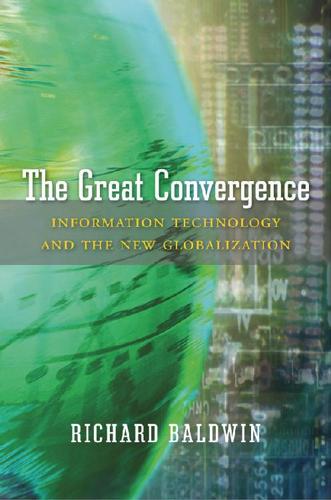
The Great Convergence: Information Technology and the New Globalization
by
Richard Baldwin
Published 14 Nov 2016
In a broad swath of service sectors, rich nation workers could find themselves in direct wage competition with poor nation workers providing their labor services remotely. But of course, this challenge to rich nation workers would be an opportunity for poor nation workers. To put these changes in perspective, it is worth drawing a parallel with the discussions of how disruptive Artificial Intelligence (AI) may be. According to Erik Brynjolfsson and Andrew McAfee, authors of The Second Machine Age, the near future will be marked by a very systematic use of AI to operate robots that replace humans in high-wage nations.6 The authors point out that this would have large effects for workers ranging from truck drivers to investment managers.
…
For details, see Richard Baldwin, and Javier Lopez-Gonzalez, “Supply-Chain Trade: A Portrait of Global Patterns and Several Testable Hypotheses,” World Economy 38, no. 11 (2015): 1682–1721. 5. See David H. Autor, Lawrence F. Katz, Melissa S. Kearney, “The Polarization of the U.S. Labor Market,” NBER Working Paper 11986, National Bureau of Economic Research, January 2006. 6. Erik Brynjolfsson and Andrew McAfee, The Second Machine Age: Work, Progress, and Prosperity in a Time of Brilliant Technologies (New York: W. W. Norton and Company, 2014). Acknowledgments This book was a very long time in the making. The original idea came from a paper I wrote in late 2006 for the Finnish prime minister’s project “Globalization Challenges for Europe and Finland.”

All Day Long: A Portrait of Britain at Work
by
Joanna Biggs
Published 8 Apr 2015
Henry Ford doubled his workers pay to $5 a day in 1914, the legend goes, so that his workers could afford what they made (Ford may also have been encouraging them to quit less often); Bob Crow used to ask how robots were going to be able to buy the cars they make. But who owns the robots? A new robot costs between £30,000 and £50,000. Who gets the robots’ share of a company’s profit? We might be happy to let robots heave car bonnets, but less so to have them looking after our children. Erik Brynjolfsson and Andrew McAfee argue in The Second Machine Age (2014) that while robots can take on routine tasks, even writing simple share price reports successfully, they have trouble with non-routine tasks, both of thinking and doing. They’re not good hair-dressers, care workers, handymen, poets, financial analysts and cooks.
…
The figures for workers at Swindon in 1965 were taken from an English Heritage Conservation Bulletin, the current figures from The Manufacturer, the ratio of robots to workers was drawn from articles in the Financial Times and The Manufacturer. Bob Crow shared his view on robots during a Lunch with the FT interview of 25 March 2011, and the price of a robot was taken from the FT. My account of what robots can and can’t do comes from Erik Brynjolfsson and Andrew McAffee’s The Second Machine Age (Norton, 2014). The video introducing the idea of ‘Fully Automated Luxury Communism’ can be seen on Novara Media’s YouTube channel. Selling I’ve drawn my account of Belfast’s markets from the Belfast City tourism website and a short BBC archive film from 1959, ‘Roving Reporter: Smithfield Market’, available online.
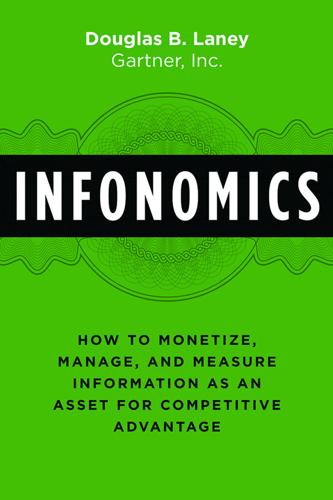
Infonomics: How to Monetize, Manage, and Measure Information as an Asset for Competitive Advantage
by
Douglas B. Laney
Published 4 Sep 2017
htmlfid=IMC14702USEN&appname=wwwsearch. 15 Douglas Laney, “Methods for Monetizing Your Data,” Gartner Webinar, 22 August 2015, www.gartner.com/webinar/3098518. 16 Information variety represents a greater challenge than volume or velocity because it cannot be solved simply by scaling or swapping infrastructure. 17 Sue Hildreth, “Data+ Awards: Florida Youth Welfare Agency Pinpoints Aid with BI,” Computerworld, 26 August 2013, www.computerworld.com/article/2483944/enterprise-applications/data--awards--florida-youth-welfare-agency-pinpoints-aid-with-bi.html. 18 “Cashing in on Improved Profitability through Pattern Detection and Big Data Analytics,” emcien.com, 2015, http://emcien.com/wp-content/uploads/2015/10/NCR-Success-Story.pdf. 19 Denise Winterman, “Tesco: How One Supermarket Came to Dominate,” BBC News Magazine, 09 September 2013, www.bbc.com/news/magazine-23988795. 20 “Data Analytics Solution Used to Optimize Refrigerators and Reduce Energy Costs in Grocery Stores,” ibm.com, www-03.ibm.com/software/businesscasestudies/mx/es/corp. 21 “FleetRisk Advisors Helps Clients Reduce Accident Rates and Driver Turnover,” IBM, accessed 09 February 2017, http://presidionwp.s3-eu-west-1.amazonaws.com/wp-content/uploads/2014/09/FleetRisk.pdf. 22 IBM, “FleetRisk Advisors.” 23 Andrew McAffee, and Erik Brynjolfsson, “Big Data: The Management Revolution,” Harvard Business Review, October 2012, http://hbr.org/2012/10/big-data-the-management-revolution/ar/2. 24 Passur.com, accessed 09 February 2017, www.passur.com/success-stories-airlines.htm. 25 “IBM Enables Infinity Property & Casualty Insurance to Combat Fraud,” youtube.com, uploaded 05 May 2011, www.youtube.com/watch?
…
However, in the current information-driven society and increasingly digitalized world, sentiments are shifting from the economics of tangible assets to the economics of information—“infonomics”—and other intangible assets. I have relegated the examination of information economics toward the end of this book, not just because it is the “-nomics” in the “infonomics” portmanteau, but because it is opening a portal to an unexplored universe of ideas. Thought leaders like Barb Wixom and Erik Brynjolfsson at MIT have researched and taught on monetizing information and the information economy, and UCSD’s Jim Short is researching data valuation. Others like Gartner’s Andrew White, Alan Duncan, Alan Dayley, and Brian Lowans, along with practitioners including John Ladley, James Price, Tony Fisher, Thomas Redman, Kelle O’Neal, Danette McGilvray, Theresa Kushner, Maria Villar, and Rob Hillard, have been pushing the envelope on how to manage information more like an asset.

Power, for All: How It Really Works and Why It's Everyone's Business
by
Julie Battilana
and
Tiziana Casciaro
Published 30 Aug 2021
Frank et al., “Toward Understanding the Impact of Artificial Intelligence on Labor,” Proceedings of the National Academy of Sciences 116, no.14 (2019): 6531–9. 77 John Hawksworth, Richard Berriman, and Saloni Goel, Will Robots Really Steal Our Jobs? An International Analysis of the Potential Long-Term Impact of Automation (PwC, February 2018). 78 For key works in the sprawling literature on the future of work, see Erik Brynjolfsson and Andrew McAfee, Race Against the Machine (Lexington, MA: Digital Frontier Press, 2011); Erik Brynjolfsson and Andrew McAfee, The Second Machine Age (New York: W. W. Norton, 2014); Kaplan, Humans Need Not Apply (2015); Alec Ross, The Industries of the Future (New York: Simon & Schuster, 2016); and Richard Susskind and Daniel Susskind, The Future of the Professions (Oxford: Oxford University Press, 2017). 79 David Autor, David Mindell, and Elisabeth Reynolds, “The Work of the Future: Shaping Technology and Institutions,” MIT Work of the Future, November 17, 2020, https://workofthefuture.mit.edu/research-post/the-work-of-the-future-shaping-technology-and-institutions/. 80 The acronym CRISPR stands for “clustered regularly interspaced short palindromic repeats,” which refers to a region of DNA that, with various CRISPR-associated proteins, functions like genetic scissors, enabling a cell or scientist to edit DNA or its messenger RNA very precisely.
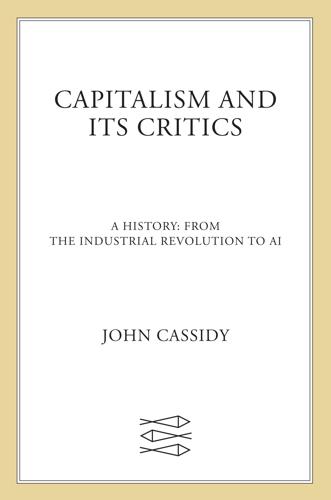
Capitalism and Its Critics: A History: From the Industrial Revolution to AI
by
John Cassidy
Published 12 May 2025
Krystal Hu, “ChatGPT Sets Record for Fastest Growing User Base—Analyst Note,” Reuters, February 2, 2023, https://www.reuters.com/technology/chatgpt-sets-record-fastest-growing-user-base-analyst-note-2023–02–01. 23. “OpenAI Raises $6.6 Billion in Funds at $157 Billion Value,” Bloomberg, October 2, 2024. 24. Martin Neil Bailey, Erik Brynjolfsson, and Anton Korinek, “Machines of Mind: The Case for an AI-Powered Productivity Boom,” Brookings Institution, May 10, 2023, figure 2, https://www.brookings.edu/articles/machines-of-mind-the-case-for-an-ai-powered-productivity-boom. 25. Bailey, Brynjolfsson, and Korinek, “Machines of Mind.” 26. Erik Brynjolfsson, “The Turing Trap: The Promise and Peril of Human-Like Artificial Intelligence,” Daedalus 151, no. 2 (Spring 2022), 273. 27. Brynjolfsson, “Turing Trap,” 272–73. 28.
…
* * * Hovering over many of these discussions was the emergence of potentially transformative digital technologies, such as self-driving vehicles, drones, 3D printing, robotics, and, most ominously, large language artificial intelligence models. In their 2014 book The Second Machine Age, Erik Brynjolfsson and Andrew McAfee, two economists at MIT, wrote: “The key building blocks are already in place for digital technologies to be as important and transformational to society and the economy as the steam engine.”17 Modern economists refer to a technology that impacts the entire economy over extended periods as a “general purpose technology.”
…
International Monetary Fund, World Economic Outlook, April 2024, 138, table A1, “Summary of World Output,” https://www.imf.org/en/Publications/WEO/Issues/2024/04/16/world-economic-outlook-april-2024#statistical. 16. Peter S. Goodman, How the World Ran Out of Everything: Inside the Global Supply Chain (New York: Mariner Books, 2024), 346. 17. Erik Brynjolfsson and Andrew McAfee, The Second Machine Age (New York: W. W. Norton, 2014), 9. 18. Brynjolfsson and McAfee, Second Machine Age, 82. 19. Nicholas Crafts, “AI as a GPT: An Historical Perspective,” March 25, 2020, https://warwick.ac.uk/fac/soc/economics/staff/nfrcrafts/ai_as_a_gpt.ppt.pdf. 20.
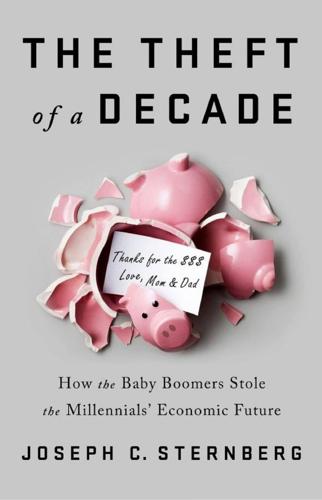
The Theft of a Decade: How the Baby Boomers Stole the Millennials' Economic Future
by
Joseph C. Sternberg
Published 13 May 2019
Like any good upper crust, the creative class would feel a sense of noblesse oblige toward its inferiors: “To build true social cohesion,” Florida warned, “the members of the Creative Class will need to offer those in other classes a tangible vision of ways to improve their own lives by becoming part of the Creative Economy or, at the very least, by reaping some of its rewards.” More recently, Erik Brynjolfsson and Andrew McAfee’s influential 2014 book The Second Machine Age argued that the American economy inevitably will be characterized by a “bounty” of fabulous economic gains for workers and entrepreneurs with the right skills, but also a widening “spread” between those winners and the growing army of losers whose jobs will disappear under a tidal wave of technological change.32 That book won approving reviews or front-cover blurbs from public figures many Millennials have grown up respecting, such as New York Times columnist Thomas Friedman, Netscape founder Marc Andreessen, and someone whose job title is “chief maverick” at Wired magazine.
…
Philip Oreopoulos, Till von Wachter, and Andrew Heisz, “The Short- and Long-Term Career Effects of Graduating in a Recession,” American Economic Journal: Applied Economics 4, no. 1 (2012). 31. Richard Florida, “Preface to the Original Edition,” in The Rise of the Creative Class, Revisited (New York: Basic Books, 2012). 32. Erik Brynjolfsson and Andrew McAfee, The Second Machine Age: Work, Progress, and Prosperity in a Time of Brilliant Technologies (New York: Norton, 2014). 33. Tyler Cowen, Average Is Over: Powering America Beyond the Age of the Great Stagnation (New York: Plume, 2013). 34. Paul Beaudry, David A. Green, and Benjamin M.

Messing With the Enemy: Surviving in a Social Media World of Hackers, Terrorists, Russians, and Fake News
by
Clint Watts
Published 28 May 2018
The internet’s open system led to niche repositories for highly specialized information appealing to smaller audiences distributed around the world. Chris Anderson of Wired magazine famously detailed this phenomenon from a business perspective in his book The Long Tail: Why the Future of Business Is Selling Less of More. Building from the research of Erik Brynjolfsson, Yu (Jeffrey) Hu, and Michael D. Smith, Anderson explained how online access creates not just lower prices but increased product variety. In the pre-internet era, where traditional local markets offered only a small range of high-selling goods, the World Wide Web offered an opportunity for things like books, music, and homemade goods to be sold at lower volumes over an extended period.
…
Anderson was right about the internet bringing us together, but his optimism about preference has not been borne out. Unlimited variety and choice have somehow divided us, made us angry for reasons we can’t explain and bitter toward our own countrymen, friends, and family who don’t share our preferences. Similarly, Andrew McAfee and Erik Brynjolfsson, in their 2017 book Machine, Platform, Crowd, describe how modern crowds, empowered by smartphone technology, now contribute to the knowledge of society and can work together to identify solutions. They explain how, before barriers were lowered with the internet, societal elites and their institutions maintained collections of knowledge that they used to power their products and further their agendas.

Ghost Work: How to Stop Silicon Valley From Building a New Global Underclass
by
Mary L. Gray
and
Siddharth Suri
Published 6 May 2019
We hope this drives home the point that getting a sense of this labor is hard because of the constant churn among workers and the challenges of seeing and following the workers behind ghost work. [back] 9. Erik Brynjolfsson and Andrew McAfee, The Second Machine Age: Work, Progress, and Prosperity in a Time of Brilliant Technologies (New York: W. W. Norton, 2014); Klaus Schwab, The Fourth Industrial Revolution (New York: Penguin, 2017); Erik Brynjolfsson and Andrew McAfee, Race Against the Machine: How the Digital Revolution Is Accelerating Innovation, Driving Productivity, and Irreversibly Transforming Employment and the Economy (Lexington, MA: Digital Frontier, 2012).
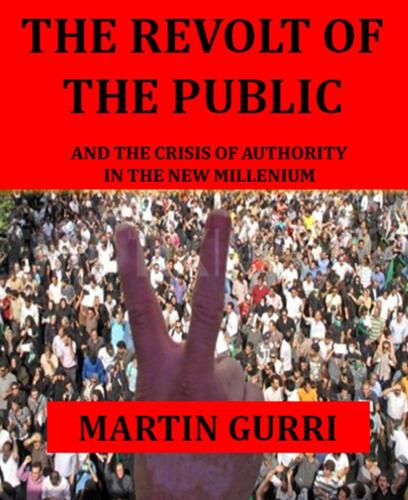
The Revolt of the Public and the Crisis of Authority in the New Millennium
by
Martin Gurri
Published 13 Nov 2018
A very different logic now seems to be at work – innovation has caused an atomization of demand, and atomized demand has driven ever faster rates of innovation in nearly all fields of economic activity. It is not an illusion that life today feels like a sequential wrestling with one new thing after another, in a vertiginous cycle of change. 6.5 Rate of adoption of new products, 1900-2005[146] In Race Against the Machine, Erik Brynjolfsson and Andrew McAfee conjectured that this frenzy of innovation has been a major reason for the stagnant economic growth since 2008. “The root of our problems is not that we’re in a Great Recession or a Great Stagnation, but rather that we are in the early throes of a Great Restructuring,” they argued.
…
[144] “74% want to audit the Federal Reserve,” Rasmussen Reports, November 8, 2013, http://www.rasmussenreports.com/public_content/business/general_business/november_2013/74_want_to_audit_the_federal_reserve, and “US investors trust financial adviser over Bernanke, survey finds,” SmartBrief, February 7, 2012, http://www.smartbrief.com/02/07/12/us-investors-trust-financial-advisers-over-bernanke-survey-finds#.UpNjicTkv75. [145] My photo. [146] Copyright: New York Times, Nicolas Felton, illustrator. [147] Erik Brynjolfsson and Andrew McAfee, Race Against the Machine: How the Digital Revolution Is Accelerating Innovation, Driving Productivity, and Irreversibly Transforming Employment and the Economy, (Digital Frontier Press, 2011), 9, 40. [148] Tony Elwin, “The Cost of Culture, a 50% turnover of the Fortune 500,” http://www.tobyelwin.com/ the-cost-of-culture-a-50-turnover-of-the-fortune-500/

Artificial Whiteness
by
Yarden Katz
A Foreign Affairs article from 2016 provides a typical example: “By studying lots of examples, identifying relevant patterns, and applying them to new examples, computers have been able to achieve human and super-human levels of performance in a range of tasks: recognizing street signs, parsing human speech, identifying credit fraud, modeling how materials will behave under different conditions, and more.” Andrew McAfee and Erik Brynjolfsson, “Human Work in the Robotic Future,” Foreign Affairs, June 13, 2016. See also the “Deep Image” system and its media coverage: Ren Wu et al., “Deep Image: Scaling up Image Recognition,” ArXiv Preprint ArXiv:1501.02876, July 8, 2015; Alex Hern, “Computers Now Better than Humans at Recognising and Sorting Images,” Guardian, May 13, 2015.
…
Dávila. “The Biology of Knowing and the Biology of Loving: Education as Viewed from the Biological Matrix of Human Existence.” Prelac 2 (2006): 30–39. Maturana, Humberto R., and Francisco J. Varela. The Tree of Knowledge, rev. ed. Boulder, Colo.: Shambhala Press, 1998. McAfee, Andrew, and Erik Brynjolfsson. “Human Work in the Robotic Future.” Foreign Affairs, June 13, 2016. McCarthy, John. Defending AI Research: A Collection of Essays and Reviews. Stanford, Calif.: CSLI Publications, 1996. McClintock, Anne. Imperial Leather: Race, Gender, and Sexuality in the Colonial Contest. New York: Routledge, 2013.

MegaThreats: Ten Dangerous Trends That Imperil Our Future, and How to Survive Them
by
Nouriel Roubini
Published 17 Oct 2022
“We are shifting from the world where executives expressly collude in smoke-filled hotel rooms to a world where pricing algorithms continually monitor and adjust to each other’s prices and market data.”37 Surrender scruples or face unpleasant consequences. Uneasy lies the head that built the algorithm. Is AI a friend or foe? Will self-learning algorithms replace more human roles, including programmers, than industries of the future can create? In their book, The Second Machine Age, authors Erik Brynjolfsson and Andrew McAfee dismiss the fear that the job market will vanish. They anticipate jobs no one has yet thought of thanks to staggering technological progress.38 Who foresaw jobs in electronics, data processing, or telecommunications when agricultural and manufacturing jobs began to disappear?
…
Ariel Ezrachi and Maurice Stucke, “Artificial Intelligence & Collusion: When Computers Inhibit Competition,” University of Illinois Law Review, Vol. 2017, No. 5, p. 1775. 38. Steven Pearlstein, review of The Second Machine Age, by Erik Brynolfsson and Andrew McAfee, Washington Post, January 17, 2014, https://www.washingtonpost.com/opinions/review-the-second-machine-age-by-erik-brynjolfsson-and-andrew-mcafee/2014/01/17/ace0611a-718c-11e3-8b3f-b1666705ca3b_story.html. 39. David Autour, “Are the Robots Taking Our Jobs?” Columbus Museum of Art, https://youtu.be/uNw3ik7g1Ss @ approx. 22:24. 40. Daniel Susskind, A World without Work (New York: Metropolitan Books, 2020), Kindle edition, p. 5, location 268. 41.
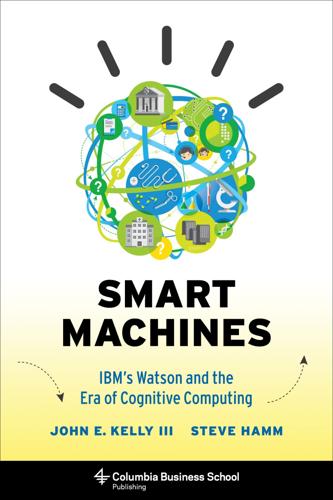
Smart Machines: IBM's Watson and the Era of Cognitive Computing (Columbia Business School Publishing)
by
John E. Kelly Iii
Published 23 Sep 2013
Already, cloud, social networking, mobile, and new ways to interact with computing from tablets to glasses are fueling the desire for cognitive systems that will, for example, both harvest insights from social networks and enhance our experiences within them. Should we fear the cognitive machines? MIT professors Erik Brynjolfsson and Andrew McAfee warn in their book, Race Against the Machine, that one of the side effects of this generation of advances in computing is they are coming at the expense of existing jobs. We believe, though, that the most important effect of these technologies will be in assisting people to do what they are unable to do today, vastly expanding the problems we can solve and creating new spheres of innovation for every industry.

#Republic: Divided Democracy in the Age of Social Media
by
Cass R. Sunstein
Published 7 Mar 2017
THE DAILY ME 1.See Nicholas Negroponte, Being Digital (New York: Vintage Books, 1995), 153. For a prescient discussion of “cyberbalkinization,” see also Robert D. Putnam, Bowling Alone: The Collapse and Revival of American Community (New York: Simon and Schuster, 2000), 177–79, which draws in turn on an illuminating earlier paper, Marshall Van Alstyne and Erik Brynjolfsson, “Electronic Communities: Global Village or Cyberbalkans?” (working paper, MIT Sloan School, Cambridge, MA, 1996), http://web.mit.edu/marshall/www/papers/CyberBalkans.pdf (accessed August 23, 2016). 2.In a provocative 2011 book, Eli Pariser popularized a theory of “filter bubbles” in which he posited that due to the effects of algorithmic filtering, Internet users are likely to be provided with information that conforms to their existing interests and, in effect, is isolated from differing viewpoints.
…
Martin and Ali Yurukoglu, “Bias in Cable News: Persuasion and Polarization” (working paper no. 20798, National Bureau of Economic Research, Cambridge, MA, December 2014), http://www.nber.org/papers/w20798.pdf (accessed September 2, 2016). 3.See Shanto Iyengar and Richard Morin, “Red Media, Blue Media,” Washington Post, May 3, 2006, http://www.washingtonpost.com/wp-dyn/content/article/2006/05/03/AR2006050300865.html (accessed September 2, 2016). 4.Marshall Van Alstyne and Erik Brynjolfsson, “Electronic Communities: Global Village or Cyberbalkans?” (working paper, MIT Sloan School, Cambridge, MA, 1996), http://web.mit.edu/marshall/www/papers/CyberBalkans.pdf (accessed September 2, 2016). 5.For a fascinating discussion, see Ronald Jacobs, Race, Media, and the Crisis of Civil Society: From Watts to Rodney King (Cambridge: Cambridge University Press, 2000). 6.David Schkade, Cass R.

Human Compatible: Artificial Intelligence and the Problem of Control
by
Stuart Russell
Published 7 Oct 2019
Economic theory does not, unfortunately, predict that each human will be better off as a result of automation. Generally, automation increases the share of income going to capital (the owners of the housepainting robots) and decreases the share going to labor (the ex-housepainters). The economists Erik Brynjolfsson and Andrew McAfee, in The Second Machine Age, argue that this has already been happening for several decades. Data for the United States are shown in figure 9. They indicate that between 1947 and 1973, wages and productivity increased together, but after 1973, wages stagnated even while productivity roughly doubled.
…
A view of AI progress over the next few years: Peter Stone et al., “Artificial intelligence and life in 2030,” One Hundred Year Study on Artificial Intelligence, report of the 2015 Study Panel, 2016. 49. The media-fueled argument between Elon Musk and Mark Zuckerberg: Peter Holley, “Billionaire burn: Musk says Zuckerberg’s understanding of AI threat ‘is limited,’” The Washington Post, July 25, 2017. 50. On the value of search engines to individual users: Erik Brynjolfsson, Felix Eggers, and Avinash Gannamaneni, “Using massive online choice experiments to measure changes in well-being,” working paper no. 24514, National Bureau of Economic Research, 2018. 51. Penicillin was discovered several times and its curative powers were described in medical publications, but no one seems to have noticed.
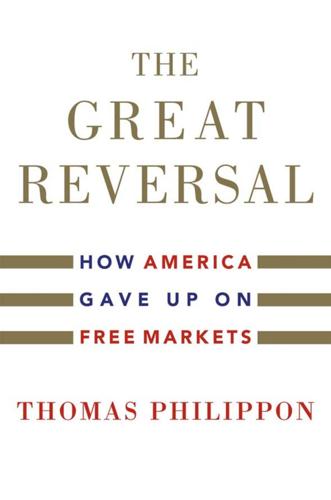
The Great Reversal: How America Gave Up on Free Markets
by
Thomas Philippon
Published 29 Oct 2019
We will dig deeper into the business models and growth contributions of Apple, Amazon, Google, Facebook, and Microsoft in Chapter 13. Nonetheless, the measurement of the digital economy is an active area of research, and we are likely to obtain better estimates in the near future. For instance, Erik Brynjolfsson and his co-authors (2019) have recently argued that properly accounting for Facebook’s free services could add between 5 and 10 basis points (0.05 to 0.1 percent) to our measure of growth for the US economy. Weak Investment and Weak Productivity The pattern of investment and productivity growth is inconsistent with the hypothesis of rising superstar firms, which holds efficiency gains to be the root cause of increasing concentration.
…
Nonetheless, when we add them up, we get Figure 13.4: stars used to bring about seventy basis points of labor productivity growth each year (using the industry stars definition), but now it’s only forty basis points. Our results challenge the common wisdom about the stars of the new economy and shed light on the debate between Erik Brynjolfsson and Andrew McAfee (2014), who view digital technologies as “the most general purpose of all,” and Robert J. Gordon (2016), who is skeptical about the impact of recent innovations. Our results are perhaps less surprising for students of history. History students are well aware of biased thinking that today is different—to paraphrase Reinhart and Rogoff (2009)—and that our current stars are exceptional.

A World Without Work: Technology, Automation, and How We Should Respond
by
Daniel Susskind
Published 14 Jan 2020
Labor Market: Implications for Employment and Earnings,” Center for American Progress (April 2010); David Autor and David Dorn, “The Growth of Low-Skill Service Jobs and the Polarization of the US Labor Market,” American Economic Review 103, no. 5 (2013): 1553–97; and Maarten Goos and Alan Manning, “Lousy and Lovely Jobs: The Rising Polarization of Work in Britain,” Review of Economics and Statistics 89, no. 1 (2007): 119–33. 19. For the 0.01 percent statistic, see Emmanuel Saez, “Striking It Richer: The Evolution of Top Incomes in the United States,” published online at https://eml.berkeley.edu/~saez/ (2016). For the “super-star bias,” see Erik Brynjolfsson, “AI and the Economy,” lecture at the Future of Life Institute, 1 July 2017. 20. See Acemoglu and Autor, “Skills, Tasks and Technologies,” p. 1070, n. 25. 21. The classic statement of the ALM hypothesis is David Autor, Frank Levy, and Richard Murnane, “The Skill Content of Recent Technological Change: An Empirical Exploration,” Quarterly Journal of Economics 118, no. 4 (2003): 129–333.
…
David Deming, “The Growing Importance of Social Skills in the Labor Market,” Quarterly Journal of Economics 132, no. 4 (2017): 1593–1640. 2. Aaron Smith and Janna Anderson, “AI, Robotics, and the Future of Jobs: Key Findings,” Pew Research Center, 6 August 2014, available at http://www.pewinternet.org/2014/08/06/future-of-jobs/ (accessed August 2018). 3. See, for instance, Erik Brynjolfsson and Tom Mitchell, “What Can Machine Learning Do? Workforce Implications,” Science 358, no 6370 (2017). 4. John Markoff, “How Many Computers to Identify a Cat? 16,000,” New York Times, 25 June 2012. 5. Jeff Yang, “Internet Cats Will Never Die,” CNN, 2 April 2015. 6. Colin Caines, Florian Hoffman, and Gueorgui Kambourov, “Complex-Task Biased Technological Change and the Labor Market,” International Finance Division Discussion Papers 1192 (2017). 7.
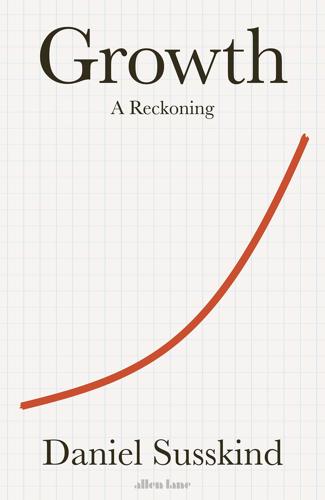
Growth: A Reckoning
by
Daniel Susskind
Published 16 Apr 2024
It is not equal to the task. 19 See Coyle, GDP, pp. 108–9; Clyde Haberman, ‘For Italy’s Entrepreneurs, the Figures Are Bella’, The New York Times, 16 July 1989. 20 Coyle, GDP, p. 108. See also ‘Sex, Drugs, and GDP’, The Economist, 31 May 2014. 21 Erik Brynjolfsson and Avinash Collis, ‘How Should We Measure the Digital Economy?’, Hutchins Centre on Fiscal & Monetary Policy at Brookings, Working Paper No. 57 (2020). 22 Erik Brynjolfsson, Avinash Collis and Felix Eggers, ‘Using Massive Online Choice Experiments to Measure Changes in Well-Being’, PNAS, 116:15 (March 2019), 7250–55. 23 President Kennedy, ‘Remarks at the University of Kansas, March 18, 1968’, John F.

Power and Progress: Our Thousand-Year Struggle Over Technology and Prosperity
by
Daron Acemoglu
and
Simon Johnson
Published 15 May 2023
Steve Jobs, “Let’s go and invent…,” is from a 2007 conference (https://allthingsd.com/20070531/d5-gates-jobs-transcript). Labor market developments, including wage inequality by education, are examined in more detail in Chapter 8; see the notes for that chapter for details on our sources and calculations. The Bandwagon of Progress. “What can we do…” is from a TED talk by Erik Brynjolfsson in April 2017 (www.techpolicy.com/Blog/April-2017/Erik-Brynjolfsson-Racing-with-the-Machine-Beats-R.aspx). Automotive industry facts are from McCraw (2009, 14, 17, 23). Auto industry employment in the 1920s is from CQ Researcher (1945). The evolution of tasks in the auto industry is discussed further in chapters 7 and 8; full sources are in the notes for those chapters.
…
Nobody is supposed to be completely left behind by technology, let alone be impoverished by it. According to the conventional wisdom, to rectify the rise in inequality and build even more solid foundations for shared prosperity, workers must find a way to acquire more of the skills they need to work alongside new technologies. As succinctly summarized by Erik Brynjolfsson, one of the foremost experts on technology, “What can we do to create shared prosperity? The answer is not to slow down technology. Instead of racing against the machine, we need to race with the machine. That is our grand challenge.” The theory behind the productivity bandwagon is straightforward: when businesses become more productive, they want to expand their output.
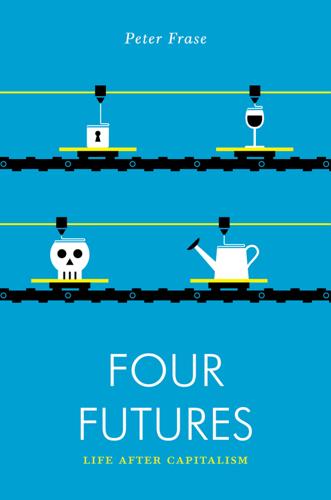
Four Futures: Life After Capitalism
by
Peter Frase
Published 10 Mar 2015
The Intergovernmental Panel on Climate Change predicts diminishing sea ice, acidification of the oceans, and increasing frequency of droughts and extreme storm events.2 At the same time, news of technological breakthroughs in the context of high unemployment and stagnant wages has produced anxious warnings about the effects of automation on the future of work. In early 2014, Massachusetts Institute of Technology professors Erik Brynjolfsson and Andrew McAfee published The Second Machine Age: Work, Progress, and Prosperity in a Time of Brilliant Technologies.3 They surveyed a future in which computer and robotics technology replaces human labor not just in traditional domains such as agriculture and manufacturing, but also in sectors ranging from medicine and law to transportation.

What's Next?: Unconventional Wisdom on the Future of the World Economy
by
David Hale
and
Lyric Hughes Hale
Published 23 May 2011
They also offer the potential for new types of democratic processes, such as direct voting online, and the scope for alternate views to be put forward outside of the mainstream. The downside to Web communities is that they can cause people to become more cut off from the rest of society. In their paper “Electronic Communities: Global Village or Cyber Balkans,” professors Marshal Van Alstyne and Erik Brynjolfsson said that “individuals empowered to screen out material that does not conform to their existing preferences may form virtual cliques, insulate themselves from opposing points of view, and reinforce their biases.… This voluntary Balkanisation and the loss of shared experiences and values may be harmful to the structure of democratic societies.”7 They warned that we should have no illusions that the Internet will create a greater sense of community.
…
Taleb, The Black Swan (New York: Random House, 2007). 4. Paul Kedrosky, “The First Disaster of the Internet Age,” Newsweek, October 27, 2008, http://www.newsweek.com/2008/10/17/the-first-disaster-of-the-internet-age.html. 5. Quoted in Nicholas D. Kristof, “The Daily Me,” New York Times, March 19, 2009. 6. Ibid. 7. Marshal Van Alstyne and Erik Brynjolfsson, “Electronic Communities: Global Village or Cyber Balkans,” Sloan School of Management Working Papers, MIT Sloan School, March 1997. 8. Nate Anderson, “Online Oligarchy: Old Guard Dominates ’Net News Coverage,” Ars Technica, March 17, 2008, http://arstechnica.com/old/content/2008/03/online-oligarchy-old-guard-dominates-net-news-coverage.ars (accessed on November 19, 2010); PBS, “Democracy on Deadline: Who Owns the Media?”
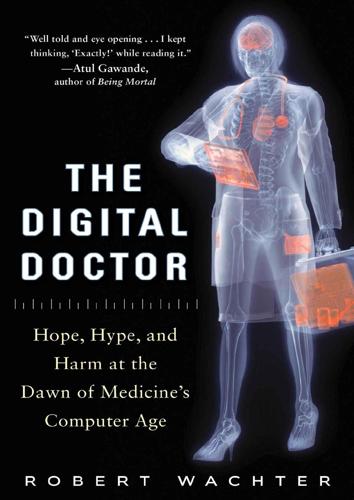
The Digital Doctor: Hope, Hype, and Harm at the Dawn of Medicine’s Computer Age
by
Robert Wachter
Published 7 Apr 2015
Soon after the well-publicized trouncing, IBM announced that one of its first “use cases” for Watson would be medicine. Sean Hogan, vice president for IBM Healthcare, told me that “healthcare jumped out as an area whose complexity and nuances would be receptive to what Watson was representing.” Andy McAfee, coauthor with Erik Brynjolfsson of the terrific book The Second Machine Age, agrees with Khosla that computers will ultimately take over much of what physicians do, including diagnosis. “I can’t see how that doesn’t happen,” McAfee, a self-described “technology optimist,” told me when we met for lunch near his MIT office. McAfee and Brynjolfsson argue that the confluence of staggering growth in computing power, zetabytes of fully networked information available on the Web, and the “combinatorial power” of innovation mean that areas that seemed like dead ends, such as artificial intelligence in medicine, are now within reach.
…
While specific technologies—a new jet engine, say, or a solar panel—can improve productivity, since the Industrial Revolution the technologies associated with the greatest productivity bumps have been so-called general-purpose technologies—technologies that transformed multiple industries and laid the groundwork for many new applications. The best-known examples are the steam engine and electricity, and so it’s fair to say that such technologies don’t come around very often, perhaps every 50 to 100 years. Information technology falls into the same category—in fact, in The Second Machine Age, Erik Brynjolfsson and Andrew McAfee call IT “the most general purpose of all.” Given the power and range of information technology, one would think that its implementation would rapidly and predictably lead to a sharp uptick in productivity. Yet, in the 1980s, economists began to notice something strange. Companies in industries ranging from manufacturing to accounting were fervently installing computers, but productivity appeared to be stagnant.

The Future Is Faster Than You Think: How Converging Technologies Are Transforming Business, Industries, and Our Lives
by
Peter H. Diamandis
and
Steven Kotler
Published 28 Jan 2020
Back in 1995, astronomers in Chile: Public Information Office, Jet Propulsion Laboratory, “Boomerang Nebula Boasts Coolest Spot in the Universe,” June 20, 1997. For the official NASA/JPL release, see: https://www.jpl.nasa.gov/news/releases/97/coldspot.html. IBM’s Deep Blue: Luke Harding and Leonard Barden, “Deep Blue Win a Giant Step for Computerkind,” Guardian, May 12, 2011. Transistor power: Erik Brynjolfsson and Andrew McAfee, The Second Machine Age (W.W. Norton and Co., 2014), p. 49. Moore’s Law has been slowing down: Lieven Eeckhout, “Is Moore’s Law Slowing Down? What Next?, IEEE Micro 37, no. 4: 4–5. “Moore’s Law was not the first”: Kurzweil, “Law of Accelerating Returns.” Apple’s recent A12 Bionic: See: https://www.apple.com/iphone-xs/a12-bionic/.
…
consider the service economy: John Ward, “The Services Sector: How Best to Measure It?,” International Trade Organization, October 2010. forty-three different types of traffic signs: To track the progress in machine learning, Wikipedia has a useful chart here: https://en.wikipedia.org/wiki/Timeline_of_machine_learning. See also: Andrew McAfee and Erik Brynjolfsson, Machine Platform Crowd (Norton, 2017), pp. 66–86. AI-piloted drone: For a demo, see: https://www.youtube.com/watch?v=gsfkGlSajHQ. AI assistant named Duplex: See: https://ai.googleblog.com/2018/05/duplex-ai-system-for-natural-conversation.html. Google’s Talk to Books: See: https://experiments.withgoogle.com/talk-to-books.

New Laws of Robotics: Defending Human Expertise in the Age of AI
by
Frank Pasquale
Published 14 May 2020
In order to eliminate commercial distortions, they say, invite volunteers to populate contested search results pages. For example, user-generated content on Google Maps can lead those seeking help to clinics that are closest to them. In their book Machine, Platform, Crowd: Harnessing Our Digital Future, Andrew McAfee and Erik Brynjolfsson frame this kind of interaction between a large internet company (the platform) and its users (the crowd) as a mostly productive synergy.48 Large platforms like Google can use machine learning for many tasks, but then find ways to draw on the “crowd” of volunteer internet users to fill in gaps where more or better data is needed.
…
Sanjukta Paul, “Antitrust as Allocator of Coordination Rights,” University of California at Los Angeles Law Review 67 (forthcoming 2020). 47. Cat Ferguson, “Searching for Help,” Verge, September 7, 2017, https://www.theverge.com/2017/9/7/16257412/rehabs-near-me-google-search-scam-florida-treatment-centers. 48. Andrew McAfee and Erik Brynjolfsson, Machine, Platform, Crowd: Harnessing our Digital Future (New York: Norton 2017). 49. David Dayen, “Google Is So Big, It Is Now Shaping Policy to Combat the Opioid Epidemic: And It’s Screwing It Up,” Intercept, October 17, 2017, https://theintercept.com/2017/10/17/google-search-drug-use-opioid-epidemic/. 50.
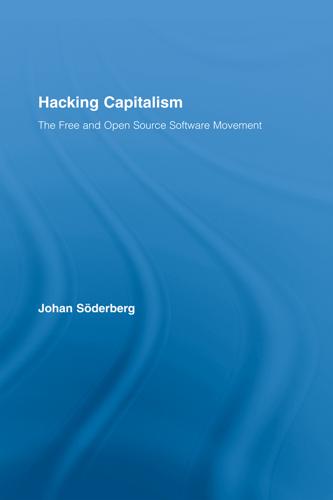
Hacking Capitalism
by
Söderberg, Johan; Söderberg, Johan;
A number of dissenting economists have come to the conclusion that the culture industry can gain from so-called piracy. If the net effect is negative or positive depends on the circumstances, but on balance, Bakos, Brynjolfsson, and Lichtman assert that media companies profits when consumers share information goods. Yannies Bakos, Erik Brynjolfsson & Douglas Lichtman, Shared Information Goods, Journal of Law and Economics (April 1999). For a collection of unorthodox views on illicit copying, argued from within neoclassical economic theory, see ed. Wendy Gordon & Richard Watt, The Economics of Copyright—Developments in Research and Analysis (Northampton, Mass.: Elgar, 2003). 15.
…
“Collective invention.” Journal of Economic Behavior and Organization (March 1983). Aoki, Ketih. “Neocolonialism, Anticommons Property, and Biopiracy in the (Not-So-Brave) New World Order of International Intellectual Property Protection.” Indiana Journal of Global Legal Studies 11 (1998). Bakos, Yannis, and Erik Brynjolfsson, and Douglas Lichtman. ”Shared Information Goods”, Journal of Law and Economics (April 1999). Barbrook, Richard. “The High-Tech Gift Economy.” First Monday, vol.3, no.12 (December 1998). Barry, David. “The Contestation of Code—A Preliminary Investigation into the Discourse of the Free/Libre and Open Source Movements.”

Surviving AI: The Promise and Peril of Artificial Intelligence
by
Calum Chace
Published 28 Jul 2015
“To those who sweat for their daily bread, leisure is a longed-for sweet – until they get it.” This time it’s different? Some people argue that soon, people automated out of a job may not find new employment, thanks to the rapid advances in machine learning, and the availability of increasingly powerful and increasingly portable computers. MIT professors Andrew McAfee and Erik Brynjolfsson have published two seminal books on the subject: Race Against the Machine, and The Second Machine Age. A report in September 2013 by the Oxford Martin School estimated that 45% of American jobs would disappear in the next 20 years, in two waves. (21) The first would attack relatively low-skilled jobs in transportation and administration.

Digital Disconnect: How Capitalism Is Turning the Internet Against Democracy
by
Robert W. McChesney
Published 5 Mar 2013
Diamondis and Steven Kotler, there is no reason to worry: the digital revolution will solve capitalism’s crisis and soon re-create the system better than ever. “Within a generation,” they write, “we will be able to provide goods and services, once reserved for the wealthy few, to any and all who need them. Or desire them. Abundance for all is actually within our grasp.”18 Erik Brynjolfsson and Andrew McAfee make a more nuanced case that depends upon policy changes. Boiled down, though, the argument goes that while digital technologies may contribute to the current crisis of capitalism, they will also lead soon enough to a glorious future for capitalism, a “third industrial revolution.”19 They are correct that we have the technological and material capacity to do far better, both quantitatively and qualitatively, than we are currently doing.20 However, the notion that such improvements can be accomplished under really existing capitalism is, to be polite, unconvincing.21 It is here that one of Karl Marx’s greatest and most lasting insights moves to the fore.
…
Compustat North America, Fundamentals Annual; Wharton Research Data Services (WRDS), University of Pennsylvania (retrieved June 4, 2012). 17. Andrew J. Sherman, Harvesting Intangible Assets (New York: Amacom, 2012), xi. 18. Peter H. Diamandis and Steven Kotler, Abundance: The Future Is Better Than You Think (New York: The Free Press, 2012), 9. 19. Erik Brynjolfsson and Andrew McAfee, Race Against the Machine (Lexington, MA: Digital Frontier Press, 2011), 76. 20. Jeremy Rifkin was on to this at the beginning of the digital era. See Jeremy Rifkin, The End of Work: The Decline of the Global Labor Force and the Dawn of the Post-Market Era (New York: G.P. Putnam’s Sons, 1995).

Geek Heresy: Rescuing Social Change From the Cult of Technology
by
Kentaro Toyama
Published 25 May 2015
In the 1970s, only the geek elite used email. Today everyone texts, tweets, and posts to Instagram. Yet none of this extra connectivity seems to be bridging the chasm between the political left and right. If anything, the gulf is widening. What is actually happening was predicted by MIT professors Marshall Van Alstyne and Erik Brynjolfsson as early as 1996 – two years before Google and eight years before Facebook. “Internet users,” they wrote, “can seek out interactions with like-minded individuals who have similar values” while minimizing interactions with those whose values differ.18 Van Alstyne and Brynjolfsson called this phenomenon “cyberbalkanization”; psychologists call it “selective exposure.”19 Online, you can find self-reinforcing groups of white supremacists on the one hand, and free-loving hippies on the other.
…
International energy statistics, www.eia.gov/cfapps/ipdbproject/iedindex3.cfm?tid=5&pid=5&aid=2&cid=CG5,&syid=2009&eyid=2013&unit=TBPD. ———. (2014b). Electricity monthly update with data for September 2014, Nov. 25, 2014, www.eia.gov/electricity/monthly/update/. Van Alstyne, Marshall, and Erik Brynjolfsson. (2005). Global village or cyber-Balkans? Modeling and measuring the integration of electronic communities. Management Science 51:(6):851–868, http://pubsonline.informs.org/doi/abs/10.1287/mnsc.1050.0363. Veeraraghavan, Rajesh. (2013). Dealing with the digital panopticon: The use and subversion of ICT in an Indian Bureaucracy.

The Innovation Illusion: How So Little Is Created by So Many Working So Hard
by
Fredrik Erixon
and
Bjorn Weigel
Published 3 Oct 2016
Recent work by Pol Antràs and others on trade, contracts, and industrial organization have also encouraged our thinking. In Europe, economists at the London School of Economics and the OECD have been valuable sources for our work, not the least on trade, wages, inequality, and productivity. There is plenty of interesting research on digital innovation and how it is reshaping some markets and economies. Erik Brynjolfsson and Andrew McAfee and their colleagues at the MIT Sloan School of Management and the MIT Center for Digital Business deserve a particular mention. Likewise, Robert Gordon’s stellar work on productivity and American prosperity – in some ways the antithesis to Brynjolfsson and McAfee’s work – has given us an extraordinary number of insights.
…
However, the decoupling thesis, or variants thereof, has received serious support. Brookings’ William Galston, for instance, has argued that “the Great Decoupling of wages and benefits from productivity, the biggest economic story of the past 40 years, shows no sign of ending.”51 In The Second Machine Age, economists Erik Brynjolfsson and Andrew McAfee argue that median hourly wages only increased by 0.1 percent annually from 1973 to 2011 at the same time as productivity increased by 1.56 percent annually.52 In The Rise of the Robots, Martin Ford uses a similar observation to argue that productivity gains are not matched by workers’ gains in terms of jobs and pay.
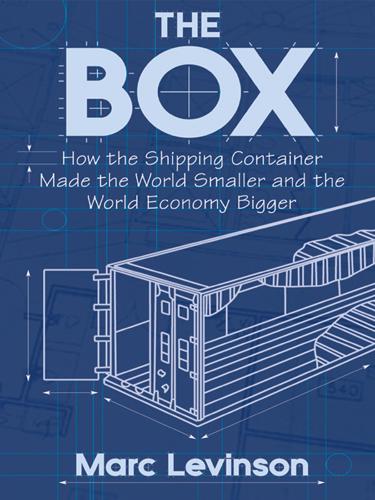
The Box: How the Shipping Container Made the World Smaller and the World Economy Bigger
by
Marc Levinson
Published 1 Jan 2006
Even after a new technology is proven, its spread must often wait until prior investments have been recouped; although Thomas Edison invented the incandescent lightbulb by 1879, only 3 percent of U.S. homes had electric lighting twenty years later. The economic benefits arise not from innovation itself, but from the entrepreneurs who eventually discover ways to put innovations to practical use—and most critically, as economists Erik Brynjolfsson and Lorin M. Hitt have pointed out, from the organizational changes through which businesses reshape themselves to take advantage of the new technology.12 This book contends that, just as decades elapsed between the taming of electricity in the 1870s and the widespread use of electrical power, so too did the embrace of containerization take time.
…
The seminal article along this line was Robert Solow, “Technical Change and the Aggregate Production Function,” Review of Economics and Statistics 39, no. 2 (1957): 65–94. On the problems of innovation, see Joel Mokyr, “Technological Inertia in Economic History,” Journal of Economic History 52 (1992): 325–338; Nathan Rosenberg, “On Technological Expectations,” Economic Journal 86, no. 343 (1976): 528; and Erik Brynjolfsson and Lorin M. Hitt, “Beyond Computation: Information Technology, Organizational Transformation, and Business Performance,” Journal of Economic Perspectives 14, no. 4 (2000): 24. Electricity was first used in manufacturing in 1883; for discussion of its relatively slow acceptance in manufacturing, see Warren D.

The Patient Will See You Now: The Future of Medicine Is in Your Hands
by
Eric Topol
Published 6 Jan 2015
—EMMA HILL, EDITOR, The Lancet1 “Health care will be less frustrating when the power shifts from sellers to buyers, and when the patients are more in charge.” —DAVID CUTLER, PROFESSOR OF APPLIED ECONOMICS, HARVARD UNIVERSITY2 “It is no exaggeration to say that billions of people will soon have a printing press, reference library, school, and computer all at their fingertips.” —ERIK BRYNJOLFSSON AND ANDREW MCAFEE, The Second Machine Age3 “Every aspect of Western mechanical culture was shaped by print technology, but the modern age is the age of the electric media . . . electronic media constitutes a break boundary between fragmented Gutenberg man and integral man.” —MARSHALL MCLUHAN, 19664 Way back in 1996, the Seinfeld TV show told the story of the “difficult” patient.5 Elaine Benes, played by Julia Louis-Dreyfus, developed a skin rash, but doctors kept refusing to see her.
…
Chapter 13 Predicting and Preempting Disease “After spending time working with leading technologists and watching one bastion of human uniqueness after another fall before the inexorable onslaught of innovation, it’s becoming harder and harder to have confidence that any given task will be indefinitely resistant to automation.” —ERIK BRYNJOLFSSON AND ANDREW MCAFEE, The Second Machine Age1 “Over the next few years you are going to see predictive tech and intelligent assistants begin to appear everywhere. Not only will they be in most apps you use—they will also be in your car, in your living room, and in your office. They will also be inside the enterprise—helping doctors better treat patients.”

People, Power, and Profits: Progressive Capitalism for an Age of Discontent
by
Joseph E. Stiglitz
Published 22 Apr 2019
I have been involved in a number of antitrust suits, trying to preserve competition in the American economy, and the insights of Keith Leffler, Michael Cragg, David Hutchings, and Andrew Abere have been invaluable. My understanding of the role these market imperfections have in labor markets has been enhanced by Mark Stelzner and Alan Krueger. The discussions of new technologies have been particularly influenced by my coauthor Anton Korinek; on artificial intelligence, by Erik Brynjolfsson, Shane Legg of DeepMind, Mark Sagar of Soul Machines, and a dinner on AI at the Royal Society after my lecture there on the subject of work and AI. Yochai Benkler, Julia Angwin, and Zeynep Tüfekçi have contributed to my understanding of the special issues posed by disinformation. As I return to the issues of globalization, I need to thank Dani Rodrik as well as Danny Quah, Rohinton Medhora, and Mari Pangestu; and on the role of globalization in tax avoidance, Mark Pieth and the Independent Commission for Reform of International Corporate Taxation, chaired by José Antonio Ocampo, on which I serve.
…
See Katja Grace, John Salvatier, Allan Dafoe, Baobao Zhang, and Owain Evans, Journal of Artificial Intelligence Research (2018), arXiv:1705.08807. 5.See Carl B. Frey and Michael A. Osborne, “The Future of Employment: How Susceptible Are Jobs to Computerisation?,” Technological Forecasting and Social Change 114 (2017): 254–80. Also see the book by Erik Brynjolfsson and Andrew McAfee, Race against the Machine (Lexington: Digital Frontier Press, 2011). 6.For one version of this story, see “Difference Engine: Luddite Legacy,” The Economist, Nov. 4, 2011. 7.See Stiglitz, The Great Divide, 393–403, based on earlier research by Domenico Delli Gatti, Mauro Gallegati, Bruce Greenwald, Alberto Russo, and me, “Mobility Constraints, Productivity Trends, and Extended Crises,” Journal of Economic Behavior & Organization 83, no. 3 (2012): 375–93; and “Sectoral Imbalances and Long Run Crises,” in The Global Macro Economy and Finance, eds.

The Flat White Economy
by
Douglas McWilliams
Published 15 Feb 2015
But you only have to go back to the 1960s to discover that there really was a Golden Age of Parliamentary debate. 4. ‘Understanding National Accounts’, François Lequiller and Derek Blades, 2016, Paris (www.oecd.org/std/na/38451313.pdf). 5. www.bankofengland.co.uk/statistics/Pages/iadb/notesiadb/capexp.aspx 6. The productivity paradox of information technology’, Erik Brynjolfsson, Communications of the ACM 36 (12), 1993, pp66–77. 7. ‘We’d better watch out’, Robert Solow, New York Times Book Review, 12 July, 1987, p.36. 8 scholar.google.co.uk/scholar?start=20&q=information+technology+as+an+enabler&hl=en&as_sdt=0,5&as_vis=1 9. ‘Sources of Economic Growth, Trade and Investment Analytical Papers No 6 of 18,BIS/DFID, 2011, London. 10. www.gov.uk/government/uploads/system/uploads/attachment_data/file/32468/11–723-sources-of-economic-growth.pdf 11. 10 November 2014. 12. www.itpro.co.uk/mobile/23478/o2-ceo-how-the-digital-revolution-is-driving-the-uk-economy#ixzz3K5a452gr 13.
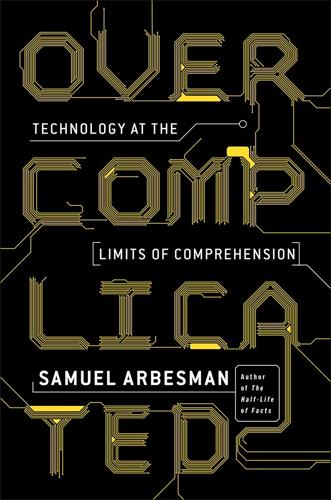
Overcomplicated: Technology at the Limits of Comprehension
by
Samuel Arbesman
Published 18 Jul 2016
Superintelligence by Nick Bostrom explores the many issues and implications related to the development of superintelligent machines. The Works, The Heights, and The Way to Go by Kate Ascher examine how cities, skyscrapers, and our transportation networks, respectively, actually work. Beautifully rendered and fascinating books. The Second Machine Age by Erik Brynjolfsson and Andrew McAfee examines the rapid technological change we are experiencing and can come to expect, and how it will affect our economy, as well as how to handle this change. The Glass Cage by Nicholas Carr is about the perils of automation and the related technological complexity around us.
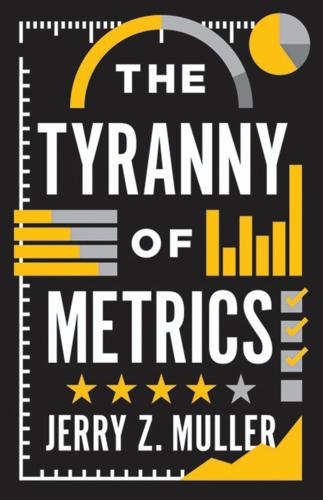
The Tyranny of Metrics
by
Jerry Z. Muller
Published 23 Jan 2018
BUSINESS AND FINANCE 1. http://www.simon.rochester.edu/fac/misra/mkt_salesforce.pdf. 2. Barry Gruenberg, “The Happy Worker: An Analysis of Educational and Occupational Differences in Determinants of Job Satisfaction,” American Journal of Sociology 86 (1980), pp. 247–71, esp. pp. 267–68, quoted in Kohn, Punishment by Rewards, p. 131. 3. Erik Brynjolfsson and Andrew McAfee, The Second Machine Age: Work, Progress, and Prosperity in a Time of Brilliant Technologies (New York, 2014). 4. Dan Cable and Freck Vermeulen, “Why CEO Pay Should Be 100% Fixed,” Harvard Business Review (February 23, 2016). 5. Madison Marriage and Aliya Ram, “Two Top Asset Managers Drop Staff Bonuses,” Financial Times, August 22, 2016. 6.

Angrynomics
by
Eric Lonergan
and
Mark Blyth
Published 15 Jun 2020
For a global picture, Branko Milanovic’s Global Inequality: A New Approach for the Age of Globalization (Cambridge, MA: Harvard University Press, 2016) is unrivallled. The effects of technology on our economies – beyond the obvious effects on our lives – are very unclear. Among the most insightful work is Erik Brynjolfsson’s at MIT. Brynjolfsson and McAfee’s Race Against the Machine (Digital Frontier Press, 2012) can be read in an afternoon, and is profoundly insightful, if rather overstated. A more measured account is given by the OECD’s policy brief, “Putting faces to the jobs at risk of automation” (https://www.oecd.org/employment/Automation-policy-brief-2018.pdf).

The Shifts and the Shocks: What We've Learned--And Have Still to Learn--From the Financial Crisis
by
Martin Wolf
Published 24 Nov 2015
Among these are Robert Gordon of Northwestern University and Tyler Cowen of George Mason University.34 An important reason why the pace of innovation might be slowing is that many opportunities have already been exploited: the population of the high-income countries is already highly educated and highly urbanized; the economy has already exploited the most readily available natural resources; people have already enjoyed the fruit of many life- and economy-transforming innovations, such as running water and sanitation, inoculation, electricity, chemicals, pharmaceuticals, the internal combustion engine, civil aviation, telephony, the computer and the internet. While nobody knows what is still to come, it would have to be impressive indeed to match this record of past achievements. Yet, it should be stressed, this relatively pessimistic view is far from universally shared. Erik Brynjolfsson and Andrew McAfee of the Massachusetts Institute of Technology argue, instead, not only that the measured decline in productivity growth in recent years is a product of a failure to measure output correctly, but that an age of accelerating technological progress is ahead of us, as intelligent machines and ‘big data’ transform our economy and our lives.35 At this stage, the only sensible thing to say is that we do not know what promise of a more productive future new technologies hold, though it seems likely that if it is as dynamic as some expect, it will also tend to generate even bigger increases in inequality of earnings and incomes between digital haves and have-nots.
…
Faltering Innovation Confronts the Six Headwinds’, National Bureau of Economic Research Working Paper No. 18315, August 2012, www.nber.org; TylerCowen, The Great Stagnation: How America Ate All the Low-Hanging Fruit of Modern History, Got Sick, and Will (Eventually) Feel Better (London: Dutton/Penguin, 2011). 35. Erik Brynjolfsson and Andrew McAfee, The Second Machine Age: Work, Progress and Prosperity in a Time of Brilliant Technologies (New York and London: W. W. Norton, 2014), and Race Against the Machine: How the Digital Revolution is Accelerating Innovation, Driving Employment and the Economy (Lexington, MA: Digital Frontier Press, 2011). 36.

More: The 10,000-Year Rise of the World Economy
by
Philip Coggan
Published 6 Feb 2020
Cars may have many more gadgets and comforts than they did in the 1970s, but congestion means that people do not travel any faster; the average speed of traffic in central London in 2015 was 7.4mph, on a par with a horse-drawn carriage in the 18th century.20 Aeroplane travel is cheaper than it used to be, but less comfortable (legroom is restricted), and the experiment with supersonic flight was abandoned. And there have been no new household gadgets in the last 40 years to rival the fridge, the vacuum or the microwave for convenience, not to mention the boost to human comfort and hygiene brought by indoor plumbing. A more optimistic view, taken by Andrew McAfee and Erik Brynjolfsson of MIT, is that the full benefits of the internet and other technologies such as machine learning, have yet to come through.21 Such is the speed of modern communication that 90% of all digital data was created in the last 24 months. Technology is reducing coordination costs through search engines, cheap communication networks and free information.
…
Gordon, “The demise of US economic growth: restatement, rebuttal, and reflections”, NBER working paper 19895 19. Gordon, The Rise and Fall of American Growth, op. cit. 20. Amie Gordon and Tom Rawstorne, “Traffic is slower than a horse drawn carriage”, Daily Mail, October 16th 2016 21. Andrew McAfee and Erik Brynjolfsson, Machine, Platform, Crowd: Harnessing Our Digital Future 22. “DeepMind AI reduces Google data centre cooling bill by 40%”, https://deepmind.com/blog/deepmind-ai-reduces-google-data-centre-cooling-bill-40/ 23. Nathan Rosenberg, Exploring the Black Box: Technology, Economics, and History 24.

Good Economics for Hard Times: Better Answers to Our Biggest Problems
by
Abhijit V. Banerjee
and
Esther Duflo
Published 12 Nov 2019
ONE FOR THE LUDDITES An increasing number of economists (and of those who comment on economics) worry that new technologies, such as AI, robots, and automation more generally, will destroy more jobs than they create, making many workers obsolete and causing the share of GDP that goes to pay wages to dwindle. In fact, these days growth optimists and labor pessimists are often the same people; they both imagine future growth will be primarily driven by the replacement of human workers by robots. In their book The Second Machine Age, our MIT colleagues Erik Brynjolfsson and Andrew McAfee offer a bleak view of the impact of digitization on the future of employment in the United States.3 Digitization, they suspect, will make workers with “ordinary” skills increasingly redundant. As tasks from car painting to spreadsheet manipulation are done by computers or robots, highly educated workers who are adaptable and can program and install the robots will become more and more valuable, but other workers who can be replaced will find themselves without jobs unless they accept extremely low salaries.
…
Banerjee, Selvan Kumar, Rohini Pande, and Felix Su, “Do Voters Make Informed Choices? Experimental Evidence from Urban India,” working paper, 2010. CHAPTER 7. PLAYER PIANO 1 Kurt Vonnegut, Player Piano (New York: Charles Scribner’s Sons, 1952). 2 Kurt Vonnegut, God Bless You, Mr. Rosewater (New York: Holt, Rinehart and Winston, 1965). 3 Erik Brynjolfsson and Andrew McAfee, The Second Machine Age (New York: W. W. Norton & Company, 2014). 4 David H. Autor, “Why Are There Still So Many Jobs? The History and Future of Workplace Automation,” Journal of Economic Perspectives 29, no. 3 (2015): 3–30. 5 Ellen Fort, “Robots Are Making $6 Burgers in San Francisco,” Eater San Francisco, June, 21, 2018. 6 Michael Chui, James Manyika, and Mehdi Miremadi, “How Many of Your Daily Tasks Could Be Automated?

Blood in the Machine: The Origins of the Rebellion Against Big Tech
by
Brian Merchant
Published 25 Sep 2023
London and New York: Verso, 2022. Mathias, Peter. The First Industrial Nation: An Economic History of Britain, 1700–1914. Second ed. London: Methuen, 1983. Mayor, Adrienne. Gods and Robots: Myths, Machines, and Ancient Dreams of Technology. Princeton, NJ: Princeton University Press, 2018. McAfee, Andrew, and Erik Brynjolfsson. The Second Machine Age: Work, Progress, and Prosperity in a Time of Brilliant Technologies. New York: W. W. Norton, 2016. Mellor, Anne K. Mary Shelley, Her Life, Her Fiction, Her Monsters. New York and London: Routledge, 1989. Mills, Stephanie, ed. Turning Away from Technology: A New Vision for the Twenty-First Century.
…
He would use the proceeds “How a New Hampshire Family Spent Andrew Yang’s ‘Freedom Dividend,’” Reuters, February 10, 2020. 6. With money pouring into AI There’s no better example of this kind of prediction than the book The Second Machine Age: Work, Progress, and Prosperity in a Time of Brilliant Technologies (New York: Norton, 2014), by MIT economists Erik Brynjolfsson and Andrew McAfee. 7. “fourth industrial revolution” Njuguna Ndung’u and Landry Signé, “The Fourth Industrial Revolution and Digitization Will Transform Africa into a Global Powerhouse,” Brookings Institution, January 8, 2020. 8. “I’m hanging out with the tech wizards” Joe Rogan Experience, YouTube video, 46:37. 9.
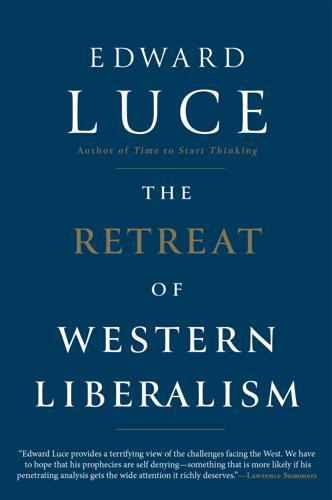
The Retreat of Western Liberalism
by
Edward Luce
Published 20 Apr 2017
The median US household income in 2014 was $50,600. If we had maintained pre-1970 productivity growth, it would have been $97,300.63 We are already well into a slowdown that, in Gordon’s view, is likely to slow further. This is where his thesis becomes controversial. According to the optimists, such as Erik Brynjolfsson and Andrew McAfee, the future is accelerating and will generally bring happy results. Their book, The Second Machine Age, argues that intensifying automation will free up labour for more interesting pursuits – and leisure. Theirs is a vision of abundance. I recently heard a well-known Silicon Valley investor dismiss the doubters as ignoramuses.
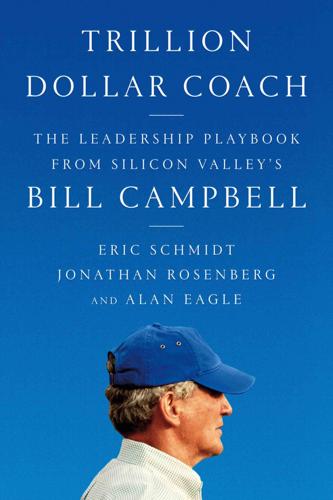
Trillion Dollar Coach: The Leadership Playbook of Silicon Valley's Bill Campbell
by
Eric Schmidt
,
Jonathan Rosenberg
and
Alan Eagle
Published 15 Apr 2019
Your People Make You a Leader. 1.Fariborz Damanpour, “Organizational Innovation: A Meta-Analysis of Effects of Determinants and Moderators,” Academy of Management Journal 34, no. 3 (September 1991): 555–90; Brian Uzzi and Jarrett Spiro, “Collaboration and Creativity: The Small World Problem,” American Journal of Sociology 111, no. 2 (September 2005): 447–504. 2.Nicholas Bloom, Erik Brynjolfsson, Lucia Foster, Ron S. Jarmin, Megha Patnaik, Itay Saporta-Eksten, and John Van Reenen, “What Drives Differences in Management,” Centre for Economic Performance Research discussion paper, No. DP11995 (April 2017). 3.Ethan Mollick, “People and Process, Suits and Innovators: The Role of Individuals in Firm Performance,” Strategic Management Journal 33, no. 9 (January 2012): 1001–15. 4.Linda A.

Human + Machine: Reimagining Work in the Age of AI
by
Paul R. Daugherty
and
H. James Wilson
Published 15 Jan 2018
” — GRADY BOOCH, Chief Scientist for Software Engineering, IBM Research; IBM Fellow “Human + Machine shines new light on our burning need to reinvent nearly everything about the way we work. Daugherty and Wilson have hands-on experience leading these changes, giving this book an exceptional level of credibility and insight. Have your whole team read it before your competitors do!” — ERIK BRYNJOLFSSON, Director, MIT Initiative on the Digital Economy; coauthor, The Second Machine Age and Machine, Platform, Crowd “A must-read for business managers who know AI should be a big part of their job but find the topic intimidating and confusing.” — MISSY CUMMINGS, professor, Pratt School of Engineering; Director, Humans and Autonomy Laboratory, Duke University “We are in an era of digital Darwinism, where technologies are evolving faster than businesses can adapt.

WTF?: What's the Future and Why It's Up to Us
by
Tim O'Reilly
Published 9 Oct 2017
“If there’s going to be a competitive workforce,” he continued, “we need to be at the leading edge of who is going to create that.” The question is not whether there will be enough work to go around, but the best means by which to fairly distribute the proceeds of the productivity made possible by the WTF? technologies of what Erik Brynjolfsson and Andy McAfee call “the second machine age.” Reducing working hours for the same amount of pay is one of the most fundamental ways that the benefits of rising productivity have traditionally been distributed more widely. In 1870, the average American (male) worked 62 hours per week; by 1960, that number was down to just over 40 hours, where it has roughly hovered since.
…
Jay Schaefer, Mike Loukides, and Laurent Haug, your close reading and comments strengthened both my ideas and my writing. Sunil Paul, Logan Green, Kim Rachmeler, Matt Cutts, Danny Sullivan, and Dave Guarino, you filled in critical details and context for key moments in this history. Satya Nadella, Reid Hoffman, Jeff Immelt, Peter Schwartz, Peter Bloom, Andy McAfee, Erik Brynjolfsson, David Autor, Larry Katz, Anne-Marie Slaughter, Sebastian Thrun, Yann LeCun, Joaquin Quiñonero Candela, Mike George, Rana Foroohar, Robin Chase, David Rolf, Andy Stern, Natalie Foster, Betsy Masiello, Jonathan Hall, Lior Ron, Paul Buchheit, Sam Altman, Esther Kaplan, Carrie Gleason, Zeynep Ton, Mikey Dickerson, Wael Ghonim, Tim Hwang, Henry Farrell, Amy Sellars, Mike McCloskey, Hank Green, Brandon Stanton, Jack Conte, Limor Fried, Phil Torrone, Seth Sternberg, Palak Shah, Keller Rinaudo, Stephane Kasriel, Bryan Johnson, Patrick Collison, Roy Bahat, Paddy Cosgrave, Steven Levy, Lauren Smiley, Bess Hochstein, Nat Torkington, Clay Shirky, Lawrence Wilkinson, Jessi Hempel, Mark Burgess, Carl Page, Maggie Shiels, Adam Davidson, and Winnie King, you also gave me the gift of your time and insight during the research and writing that led up to this book.
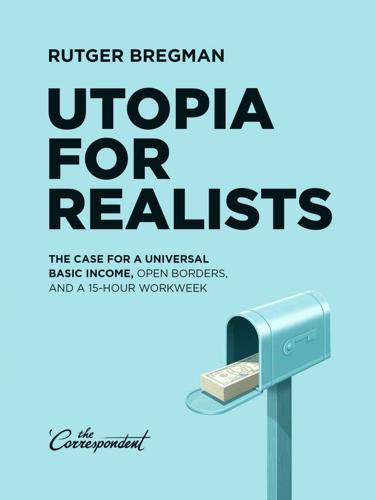
Utopia for Realists: The Case for a Universal Basic Income, Open Borders, and a 15-Hour Workweek
by
Rutger Bregman
Published 13 Sep 2014
She said this on Canadian TV. Watch the clip here: https://youtu.be/EPRTUZsiDYw?t=45m30s 4 Race Against the Machine 1. Categories of horse as reported by the Agricultural Census, A Vision of Britain through Time. http://www.visionofbritain.org.uk/unit/10001043/cube/AGCEN_HORSES_1900 2. Quoted in: Erik Brynjolfsson and Andrew McAfee, The Second Machine Age (2014), p. 175. 3. Quoted in: Leeds Mercury (March 13, 1830). 4. Michael Greenstone and Adam Looney, “Trends,” The Milken Institute Review (Fall 2011). http://www.milkeninstitute.org/publications/review/2011_7/08-16MR51.pdf 5. Gordon Moore, “Cramming more components onto integrated circuits,” Electronics Magazine (April 19, 1965). http://web.eng.fiu.edu/npala/eee6397ex/Gordon_Moore_1965_Article.pdf 6.
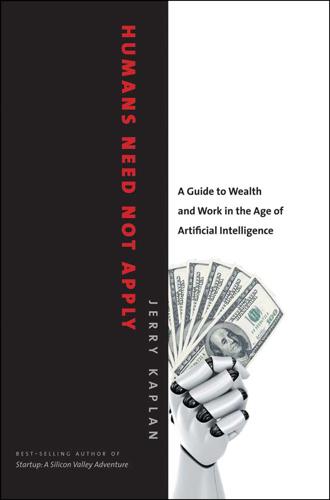
Humans Need Not Apply: A Guide to Wealth and Work in the Age of Artificial Intelligence
by
Jerry Kaplan
Published 3 Aug 2015
Jaron Lanier, Who Owns the Future? (New York: Simon and Schuster, 2013). 2. For instance, they may execute a “short squeeze” by bidding up a stock that investors have sold short, forcing them to close out their positions at ever-higher prices to contain their losses. 3. Marshall Brain, Manna (BYG, 2012). 4. Erik Brynjolfsson and Andrew McAfee, The Second Machine Age: Work, Progress, and Prosperity in a Time of Brilliant Technologies (New York: Norton, 2014). 1. TEACHING COMPUTERS TO FISH 1. J. McCarthy, M. L. Minsky, N. Rochester, and C. E. Shannon, A Proposal for the Dartmouth Summer Research Project on Artificial Intelligence, 1955, http://www-formal.stanford.edu/jmc/history/dartmouth/dartmouth.html. 2. http://en.wikipedia.org/wiki/Nathaniel_Rochester_(computer_scientist), last modified March 15, 2014. 3.

Move Fast and Break Things: How Facebook, Google, and Amazon Cornered Culture and Undermined Democracy
by
Jonathan Taplin
Published 17 Apr 2017
Google’s AlphaGo artificial intelligence system may have bested the world’s greatest Go player, but I’m not worried that it’s going to replace our greatest musicians, filmmakers, and authors, even though an NYU artificial intelligence laboratory has programmed a robot named Benjamin to be a screenwriter. And even if you believe that robots will be able to fill most jobs, MIT’s Andrew McAfee and Erik Brynjolfsson have pointed out that “understanding and addressing the societal challenges brought on by rapid technological progress remain tasks that no machine can do for us.” When I ask myself what it means to be human, I think that having empathy and the ability to tell stories rank high, and I am not worried that those skills will be replaced by AI.
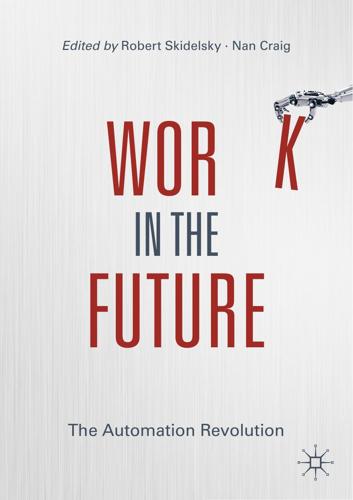
Work in the Future The Automation Revolution-Palgrave MacMillan (2019)
by
Robert Skidelsky Nan Craig
Published 15 Mar 2020
What is to happen to them? Already, the ‘left behind’ symptoms, and reactions to them, can be seen in increasingly precarious employment, stagnant or even falling wages, and populist protests against both automation and one of its chief agents, globalisation. Even if these distempers are only temporary effects Erik Brynjolfsson and Andrew McAfee, The Second Machine Age: Work Progress and Prosperity in a Time of Brilliant Technologies. 15 2 The Future of Work 21 of the displacement of labour, optimists themselves concede that the transition period may last decades. Thus, the idea that a supply shock like automation will automatically set in motion acceptable compensatory demand or complementary supply responses seems to me to be pure delusion.

Don't Trust Your Gut: Using Data to Get What You Really Want in LIfe
by
Seth Stephens-Davidowitz
Published 9 May 2022
Redelmeier and Daniel Kahneman, “Patients’ memories of painful medical treatments: Real-time and retrospective evaluations of two minimally invasive procedures,” Pain 66(1) (1996): 3–8. Chapter 9: The Misery-Inducing Traps of Modern Life search engines are worth $17,530 every year to the average American: Erik Brynjolfsson, Avinash Collis, and Felix Eggers, “Using massive online choice experiments to measure changes in well-being,” PNAS 116(15) (2019): 7250–55. 30 percent of Americans said they were “very happy”: GSS data is available here: https://gssdataexplorer.norc.org/trends/Gender%20&%20Marriage?measure=happy.
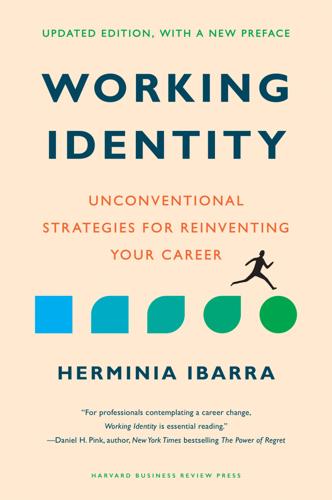
Working Identity, Updated Edition, With a New Preface: Unconventional Strategies for Reinventing Your Career
by
Herminia Ibarra
Published 17 Oct 2023
His insights have been validated with data from multiple large-scale randomized experiments on LinkedIn’s People You May Know algorithm, which recommends new connections to LinkedIn members, to test the extent to which weak ties increased job mobility in the world’s largest professional social network. Analyses of over 20 million users showed that indeed weak ties are how we get jobs and change careers. See Rajkumar Kartik, Guillaume Saint-Jacques, Iavor Bojinov, Erik Brynjolfsson, and Sinan Aral, “A Causal Test of the Strength of Weak Ties,” Science 377, no. 6612 (2022): 1304–1310. 3. See Daniel Z. Levin, Jorge Walter, and J. Keith Murnighan, “The Power of Reconnection—How Dormant Ties Can Surprise You,” MIT Sloan Management Review, March 2011, 45. 4. Roy F. Baumeister, Identity: Cultural Change and the Struggle for Self (New York: Oxford University Press, 1986). 5.
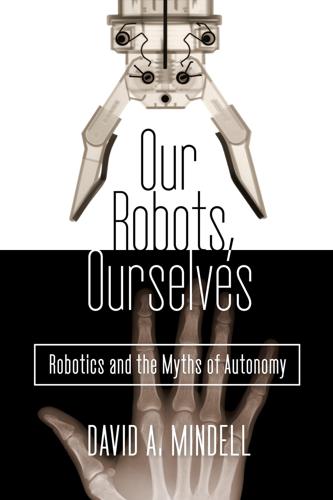
Our Robots, Ourselves: Robotics and the Myths of Autonomy
by
David A. Mindell
Published 12 Oct 2015
“only one software upgrade away”: “Terminate the Terminators,” Scientific American 303, no. 1 (July 2010): 30. In the domain of work: Frank Levy, The New Division of Labor: How Computers Are Creating the Next Job Market (New York: Russell Sage Foundation; Princeton, NJ: Princeton University Press, 2004). Erik Brynjolfsson and Andrew McAfee, Race Against the Machine: How the Digital Revolution Is Accelerating Innovation, Driving Productivity, and Irreversibly Transforming Employment and the Economy (Lexington, MA: Digital Frontier Press, 2012). Illah Reza Nourbakhsh, Robot Futures (Cambridge, MA: MIT Press, 2013).
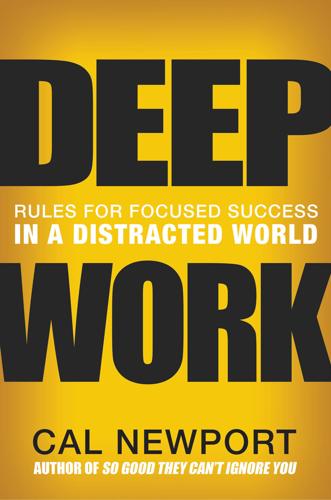
Deep Work: Rules for Focused Success in a Distracted World
by
Cal Newport
Published 5 Jan 2016
The second type of answers are more macro in that they focus less on the individuals and more on the type of work they represent. Though both approaches to this core question are important, the macro answers will prove most relevant to our discussion, as they better illuminate what our current economy rewards. To explore this macro perspective we turn to a pair of MIT economists, Erik Brynjolfsson and Andrew McAfee, who in their influential 2011 book, Race Against the Machine, provide a compelling case that among various forces at play, it’s the rise of digital technology in particular that’s transforming our labor markets in unexpected ways. “We are in the early throes of a Great Restructuring,” Brynjolfsson and McAfee explain early in their book.
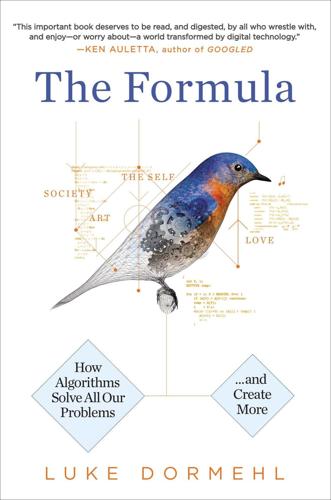
The Formula: How Algorithms Solve All Our Problems-And Create More
by
Luke Dormehl
Published 4 Nov 2014
Indeed, it is quite conceivable to imagine a future in which law firms stop hiring junior and trainee lawyers altogether, and pass much of this work over to artificial intelligence systems instead. In keeping with this, a number of experts predict that there will be between 10 and 40 percent fewer lawyers a decade from now as there are today.10 As Erik Brynjolfsson and Andrew McAfee suggest in their pamphlet “Race Against the Machine,” this is not so much the result of a Great Recession or a Great Stagnation, so much as it is a Great Restructuring.11 The new barometer for which jobs are safe from The Formula has less to do with the social class of those traditionally holding them than it does to do with a trade-off between cost and efficiency.
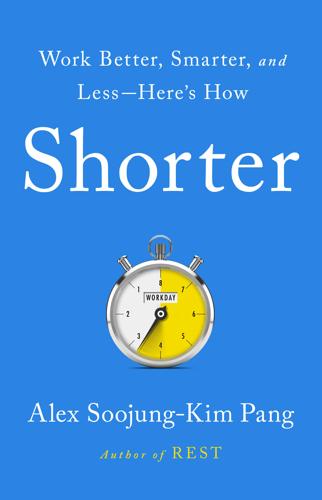
Shorter: Work Better, Smarter, and Less Here's How
by
Alex Soojung-Kim Pang
Published 10 Mar 2020
Automation in radiology and surgery are the subjects of enormous literatures; for recent reviews, see Ahmed Hosny et al., “Artificial Intelligence in Radiology,” Nature Reviews Cancer 18 (August 2018): 500–510, www.ncbi.nlm.nih.gov/pmc/articles/PMC6268174; Brian S. Peters et al., “Review of Emerging Surgical Robotic Technology,” Surgical Endoscopy 32, no. 4 (2018): 1636–1655, https://doi.org/10.1007/s00464-018-6079-2. Likewise, the literature on automation, robotics, and the future of work is vast; Erik Brynjolfsson and Andrew McAfee, The Second Machine Age: Work, Progress, and Prosperity in a Time of Brilliant Technologies (New York: Norton, 2014) and Martin Ford, Rise of the Robots: Technology and the Threat of a Jobless Future (New York: Basic Books, 2015) provide accessible introductions to the subject.
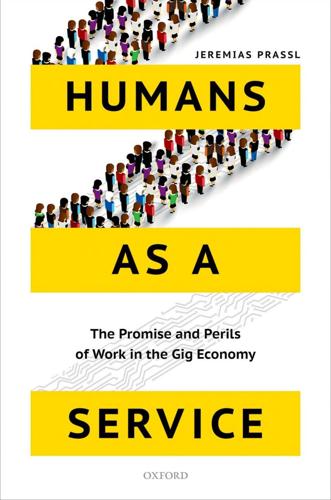
Humans as a Service: The Promise and Perils of Work in the Gig Economy
by
Jeremias Prassl
Published 7 May 2018
Job losses would be concentrated at the bottom end of the labour market: ‘[C]omputerisation will mainly substitute for low-skill and low- wage jobs . . . most workers in transportation and logistics occupations, together with the bulk of administrative and support workers, and labour in production occupations, are at risk.’6 We have seen how the spread of the gig economy has affected a wide range of industries—but it’s clear that most platform-based work, from Uber drivers and Deliveroo cyclists to Turkers entering data and Taskers coming to clean your flat, is concentrated right in Frey and Osborne’s risk * * * The End of Work? 137 zone. Erik Brynjolfsson and Andrew McAfee of Massachusetts Institute of Technology (MIT) agree that technological progress will have a starkly polarizing impact on the labour market: There’s never been a better time to be a worker with special skills or the right education, because these people can use technology to create and capture value.
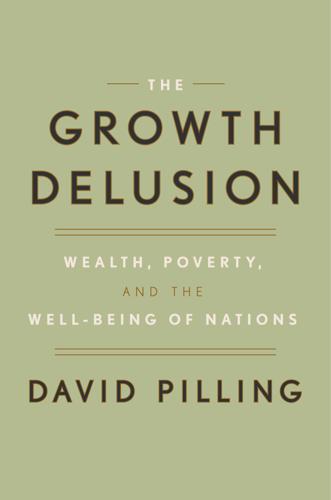
The Growth Delusion: Wealth, Poverty, and the Well-Being of Nations
by
David Pilling
Published 30 Jan 2018
“I think the real value is many thousands of dollars per person,” says Gavyn Davies. “That’s a humongous mismeasurement of the value that the iPhone has brought to most human beings.” Most experts agree that, because of these technological upheavals, national accounts underestimate economic growth. But estimates differ widely—not to say wildly—as to how much. Erik Brynjolfsson of the Massachusetts Institute of Technology noted in 2012 that the information sector accounted for the same official share of GDP in the US—about 4 percent—as it had done a quarter of a century earlier. This is implausible, to put it politely. Many people have taken a stab at calculating what we are missing in the official figures.

Fully Automated Luxury Communism
by
Aaron Bastani
Published 10 Jun 2019
Even with these growth areas in mind, however, the overall picture of job losses due to automation makes standing still seem wildly optimistic. The Future of Work Not everyone agrees that progress will lead to peak human in the Third Disruption as the steam engine and fossil fuels led to peak horse in the Second. Indeed, two of the leading voices in the field of work and technological change, Erik Brynjolfsson and Andrew McAfee, believe value will instead increasingly derive from the generation of new ideas. So while anything repetitive may well be automated or significantly augmented by machines, the uniquely human skills of creativity and emotional connection will underpin the jobs of tomorrow. This may well prove the case in some areas but surely not for a world of nearly 10 billion people.
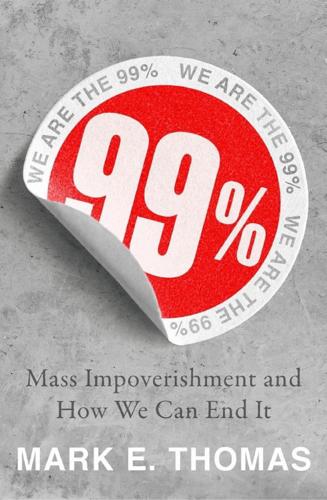
99%: Mass Impoverishment and How We Can End It
by
Mark Thomas
Published 7 Aug 2019
Some recent reports suggest that, nevertheless, there will be no shortage of jobs, at least not by 2030 – the extra wealth created by the robots will generate enough demand to employ everyone.28 This might be true if a) the extra wealth were to be spread amongst the entire population so that they could all contribute to increased demand, and b) the extra demand cannot be met by automated supply. Neither of these assumptions sounds robust, especially when we start looking out as far as 2050. As Erik Brynjolfsson, an economist at the Massachusetts Institute of Technology and co-author of The Second Machine Age, has pointed out: There’s no economic law that says, ‘You will always create enough jobs or the balance will always be even’, it’s possible for a technology to dramatically favour one group and to hurt another group, and the net of that might be that you have fewer jobs.29 It is more plausible that tens or even hundreds of millions of people will be unable to find work – and unless we change the system, they will be workless in a very hostile environment.

The Twittering Machine
by
Richard Seymour
Published 20 Aug 2019
When a peer-reviewed survey of scientists . . . Daniele Fanelli, ‘How Many Scientists Fabricate and Falsify Research? A Systematic Review and Meta-Analysis of Survey Data’, PLOS One, 29 May 2009. 55. Data was hailed as . . . ‘The world’s most valuable resource is no longer oil, but data’, the Economist, 6 May 2017; Andrew McAfee and Erik Brynjolfsson, ‘Big Data: The Management Revolution’, Harvard Business Review, October 2012. 56. In an excitable piece for Wired . . . Chris Anderson, ‘The End of Theory: the Data Deluge Makes the Scientific Method Obsolete’, Wired, 23 June 2008. 57. The bonus of big data is . . . Carlo Ratti and Dirk Helbing, ‘The Hidden Danger of Big Data’, in Dirk Helbing, ed., Towards Digital Enlightenment: Essays on the Dark and Light Sides of the Digital Revolution, Springer: New York, 2019, p. 22. 58.
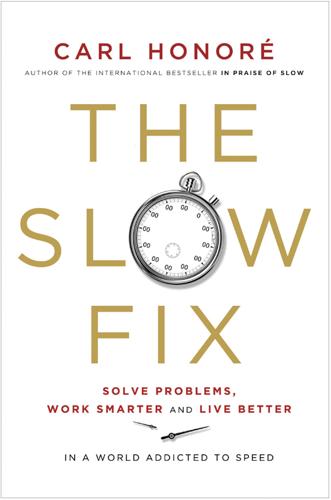
The Slow Fix: Solve Problems, Work Smarter, and Live Better in a World Addicted to Speed
by
Carl Honore
Published 29 Jan 2013
Chapter 4 – Think Holistic: Joining the Dots 10 per cent of US high schools produce nearly half the dropouts: “Turning Around the Dropout Factories: Increasing the High School Graduation Rate,” a 2012 report from the US Department of Education. For every dollar spent on new technology: Based on research by Erik Brynjolfsson, a productivity expert at the Massachusetts Institute of Technology’s Sloan School of Management. Chapter 5 – Think Long: Tackling Tomorrow Today Recidivism rates in Norway, etc: William Lee Adams, “Sentenced to Serving the Good Life in Norway,” Time, 12 July 2010; Bouke Wartna and Laura Nijssen, “National Reconviction Rates: Making International Comparisons,” Criminology in Europe, Volume 5, Number 3 (December 2006), p. 14.
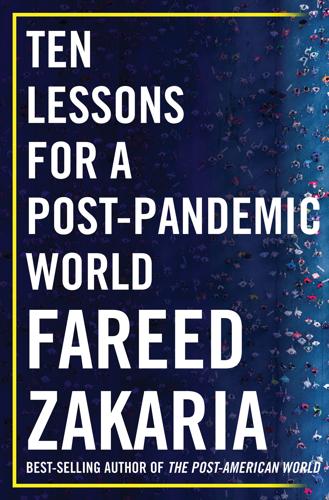
Ten Lessons for a Post-Pandemic World
by
Fareed Zakaria
Published 5 Oct 2020
US music industry revenue = $11.1 billion in 2019, see: Dan Rys, “US Recorded Music Revenue Reaches $11.1 Billion in 2019, 79% from Streaming: RIAA,” Billboard, February 25, 2020, https://www.billboard.com/articles/business/8551881/riaa-music-industry-2019-revenue-streaming-vinyl-digital-physical. 100 100,000 brick-and-mortar stores: Suzanne Kapner and Sarah Nassauer, “Coronavirus Finishes the Retail Reckoning That Amazon Started,” Wall Street Journal, May 14, 2020. 101 data as the new oil: Carl Benedikt Frey, The Technology Trap: Capital, Labor, and Power in the Age of Automation (Princeton, NJ: Princeton University Press, 2020), 304. 101 smartphones now connect the majority: “Percentage of Mobile Device Website Traffic Worldwide from 1st Quarter 2015 to 1st Quarter 2020,” Statista, https://www.statista.com/statistics/277125/share-of-website-traffic-coming-from-mobile-devices. 101 “only 20 million Indians”: Ravi Agrawal, India Connected: How the Smartphone Is Transforming the World’s Largest Democracy (New York: Oxford University Press, 2018), 3. 102 Over 550 million: McKinsey Global Institute, “Digital India,” 2019, https://www.mckinsey.com/~/media/McKinsey/Business%20Functions/McKinsey%20Digital/Our%20Insights/Digital%20India%20Technology%20to%20transform%20a%20connected%20nation/MGI-Digital-India-Report-April-2019.ashx. 102 155th in the world: Mukesh Ambani, in conversation with India Today, “India is now world’s top mobile data consuming nation: Mukesh Ambani,” October 25, 2018, https://www.indiatoday.in/technology/news/story/india-top-mobile-data-consuming-nation-mukesh-ambani-1375253–2018–10–25. 102 more mobile data: Ibid. 102 hundreds of millions more Indians: McKinsey Global Institute, “Digital India,” 6. 102 staggering $37 billion: Mobis Philipose, “Why Reliance Jio’s Big and Bold 2021 Vision Doesn’t Make Sense,” LiveMint, March 7, 2017. 102 triggered mob killings: Geeta Anand and Suhasini Raj, “Rumors on WhatsApp Ignite 2 Mob Attacks in India, Killing 7,” New York Times, May 25, 2017. 103 about a third of Americans: “Of those employed four weeks earlier, 34.1% report they were commuting and are now working from home”: Erik Brynjolfsson et al., “COVID-19 and Remote Work: An Early Look at US Data,” MIT Sloan School of Management, https://mitsloan.mit.edu/shared/ods/documents/?PublicationDocumentID=6322. 104 “25% of our workforce”: Sonal Khetarpal, “Post-COVID, 75% of 4.5 Lakh TCS Employees to Permanently Work from Home by ’25; from 20%,” Business Today India, April 30, 2020. 104 issued a correction: Saunak Chowdhury, “TCS Refutes Claims of 75% Employees Working from Home Post Lock-Down,” Indian Wire, April 28, 2020. 104 450,000 employees: Tata Consultancy Services, “About Us,” https://www.tcs.com/about-us. 106 up one billion: Jeff Becker and Arielle Trzcinski, “US Virtual Care Visits to Soar to More Than 1 Billion,” Forrester Analytics, April 10, 2020, https://go.forrester.com/press-newsroom/us-virtual-care-visits-to-soar-to-more-than-1-billion/. 106 “greatest contribution to mankind”: Lizzy Gurdus, “Tim Cook: Apple’s Greatest Contribution Will Be ‘About Health,’ ” CNBC Mad Money, January 8, 2019. 107 97% accuracy: “Using Artificial Intelligence to Classify Lung Cancer Types, Predict Mutations,” National Cancer Institute, October 10, 2018, https://www.cancer.gov/news-events/cancer-currents-blog/2018/artificial-intelligence-lung-cancer-classification. 107 up to 11% fewer false positives: D.
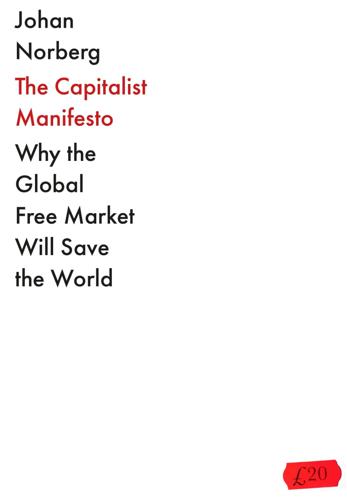
The Capitalist Manifesto
by
Johan Norberg
Published 14 Jun 2023
For more information about this and its expressions, see Virginia Postrel, The Substance of Style: How the Rise of Aesthetic Value is Remaking Commerce, Culture and Consciousness, HarperCollins, 2003. 20. No, actually, the most common question is probably: ‘Have you read all these?’ Now I’ll answer once and for all, so you never have to ask again: no. 21. Erik Brynjolfsson, Felix Eggers & Avinash Gannamaneni, ‘Using massive online choice experiments to measure changes in well-being’, NBER Working Paper no.24514, 2018. 22. Soave 2021, p.30. 23. Matthew Gentzkov & Jesse M. Shapiro, ‘Ideological segregation online and offline’, Chicago Booth & National Bureau of Economic Research, 28 March 2011. 24.

No Ordinary Disruption: The Four Global Forces Breaking All the Trends
by
Richard Dobbs
and
James Manyika
Published 12 May 2015
By 2025, we estimate that the GDP of Tianjin will have risen to around $625 billion—approximately that of all of Sweden.12 The second disruptive force is the acceleration in the scope, scale, and economic impact of technology. Technology—from the printing press to the steam engine and the Internet—has always been a great force in overturning the status quo. The difference today is the sheer ubiquity of technology in our lives and the speed of change. In their bestseller The Second Machine Age, Erik Brynjolfsson and Andrew McAfee of the Massachusetts Institute of Technology dubbed the current era the “second half of the chessboard.” Brynjolfsson and McAfee give a modern twist to an old story about the power of exponential growth. Pleased with the invention of chess, a Chinese emperor offered the inventor his choice of prizes.
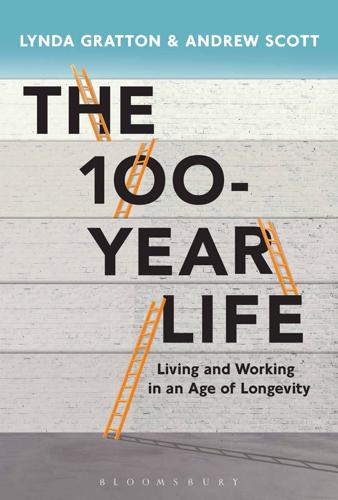
The 100-Year Life: Living and Working in an Age of Longevity
by
Lynda Gratton
and
Andrew Scott
Published 1 Jun 2016
In his thought-provoking analysis, Silicon Valley entrepreneur Martin Ford remarks: ‘The threat to overall employment is that as creative destruction unfolds the destruction will fall primarily on labor-intensive businesses in traditional areas like retail and goods preparation while the creation will generate new businesses and industries that simply don’t hire many people.’10 In the words of MIT professors Erik Brynjolfsson and Andrew McAfee, ‘Computers and other digital advances are doing for mental power … what the steam engine and its descendants did for muscle power’.11 The second half of the chessboard In 1965, Intel’s Geoffrey E. Moore conjectured that the processing power of semi-conductors would double roughly every two years and, to date, this has been an extraordinarily accurate prediction.

Driverless: Intelligent Cars and the Road Ahead
by
Hod Lipson
and
Melba Kurman
Published 22 Sep 2016
Michael Belfiore, “Three Teams out of the Running at Auto-Bot Race,” Danger Room, November 3, 2007, from Wired.com, archived from the original on November 6, 2007. 5. Daniel K, “What Is Machine Learning?” Stack Overflow, http://stackoverflow.com/questions/2620343/what-is-machine-learning 6. “Kasparov Wins,” TIME Magazine, Monday, February 19, 1996. 7. Erik Brynjolfsson and Andrew McAfee, The Second Machine Age: Work, Progress and Prosperity in a Time of Brilliant Technologies (New York: W.W. Norton & Co., 2014). 8. During the 1980s and 1990s, several pioneering researchers devised self-driving car prototypes that could drive short stretches without a human.

Life After Google: The Fall of Big Data and the Rise of the Blockchain Economy
by
George Gilder
Published 16 Jul 2018
Also there was Facebook’s Yann LeCun, an innovator in deep-learning math and a protégé of Google’s Geoffrey Hinton. A tenured contingent consisted of the technologist Stuart Russell, the philosopher David Chalmers, the catastrophe theorist Nick Bostrom, the nanotech prophet Eric Drexler, the cosmologist Lawrence Krauss, the economist Erik Brynjolfsson, and the “Singularitarian” Vernor Vinge, along with scores of other celebrity scientists.1 They gathered at Asilomar preparing to alert the world to the dire threat posed by . . . well, by themselves—Silicon Valley. Their computer technology, advanced AI, and machine learning—acclaimed in hundreds of press releases as the Valley’s principal activity and hope for the future, with names such as TensorFlow, DeepMind, Machine Learning, Google Brain, and the Singularity—had gained such power and momentum that it was now deemed nothing less than a menace to mankind.
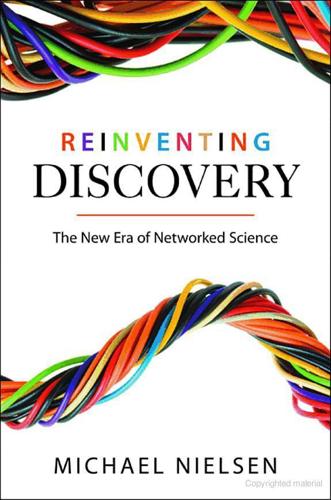
Reinventing Discovery: The New Era of Networked Science
by
Michael Nielsen
Published 2 Oct 2011
Malone. Evidence for a collective intelligence factor in the performance of human groups. Science, 330(6004):686–688, October 29, 2010. [244] World Health Organization. Influenza fact sheet number 211, March 2003. http://www.who.int/mediacentre/factsheets/2003/fs211/en/. [245] Lynn Wu and Erik Brynjolfsson. The future of prediction: How Google searches foreshadow housing prices and sales. Presented at the 2009 Workshop on Information Systems and Economics (WISE 2009), 2009. http://pages.stern.nyu.edu/~bakos/wise/papers/wise2009-3b3_paper.pdf. [246] Shirley Wu. Envisioning the scientific community as One Big Lab.

Everything Is Obvious: *Once You Know the Answer
by
Duncan J. Watts
Published 28 Mar 2011
Advertising experiments, therefore, should not be viewed as a one-off exercise that either yields “the answer” or doesn’t, but rather as part of an ongoing learning process that is built into all advertising.21 A small but growing community of researchers is now arguing that the same mentality should be applied not just to advertising but to all manner of business and policy planning, both online and off. In a recent article in MIT Sloan Management Review, for example, MIT professors Erik Brynjolfsson and Michael Schrage argue that new technologies for tracking inventory, sales, and other business parameters—whether the layout of links on a search page, the arrangement of products on a store shelf, or the details of a special direct mail offer—are bringing about a new era of controlled experiments in business.
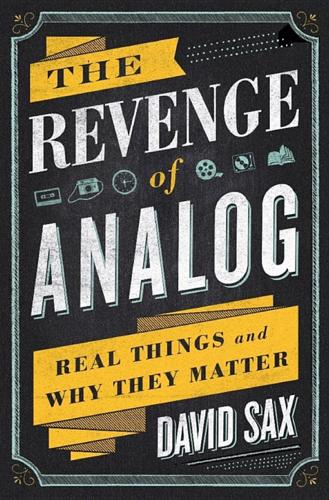
The Revenge of Analog: Real Things and Why They Matter
by
David Sax
Published 8 Nov 2016
The only US technology company to even crack the country’s top twenty employers is Hewlett Packard (HP), and its workforce has shrunk drastically in the past few years. HP has laid off more than fifty thousand employees since 2013, the equivalent of everyone who works for Google. “There is no economic law that says that everyone, or even most people, automatically benefit from technological progress,” wrote economists Erik Brynjolfsson and Andrew McAfee in their groundbreaking 2012 book Race Against the Machine, which highlighted the growing gap between technological progress and job creation. “The threat of technological unemployment is real.” Brynjolfsson and McAfee are not technophobes gripped by a fear of progress. They point to previous disruptions in labor during the technological leaps of the industrial and mechanized ages, and show how these eventually led to greater middle-class wealth and job creation, as productivity increased.
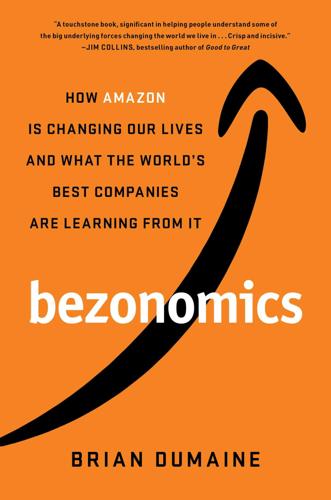
Bezonomics: How Amazon Is Changing Our Lives and What the World's Best Companies Are Learning From It
by
Brian Dumaine
Published 11 May 2020
A warehouse worker who previously lifted and stacked objects could become a robot operator, monitoring the flow of work, maintaining and operating drones, and fixing things when the machines make a mistake. And new creative vocations will arise. “There are a ton of things humans can do better than machines,” says MIT professor Erik Brynjolfsson. “The new jobs will be more on the creative side. Humans can do more connecting with people, and more thinking. I don’t think there is any shortage of work in our economy that can only be done by humans, and I think that will hold true for decades. There will be massive disruption, but there’s no shortage of work for humans.”
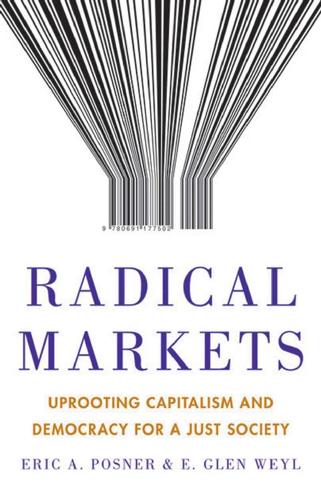
Radical Markets: Uprooting Capitalism and Democracy for a Just Society
by
Eric Posner
and
E. Weyl
Published 14 May 2018
Krueger, An Analysis of the Labor Market for Uber’s Driver-Partners in the United States (National Bureau of Economic Research, Working Paper No. 22843, 2016); Gray & Suri, untitled book project. 50. Mark Aguiar, Mark Bils, Kerwin Kofi Charles, & Erik Hurst, Leisure Luxuries and the Labor Supply of Young Men (NBER Working Paper, 2017). Conclusion. Going to the Root 1. The most prominent recent exponents of the techno-optimist within economics have been Erik Brynjolfsson and Andrew McAfee in their 2014 book, The Second Machine Age: Work, Progress and Prosperity in a Time of Brilliant Technologies (W. W. Norton & Company). More broadly, the most prominent techno-optimist is Ray Kurzweil, in a series of books. 2. The most prominent techno-pessimistic perspective is offered by Robert J.
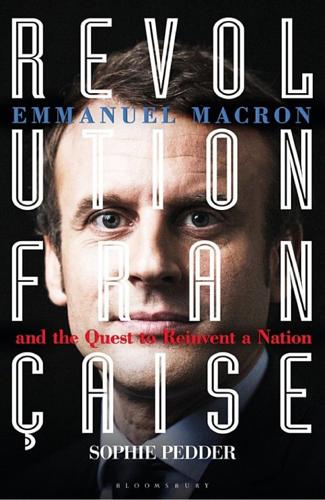
Revolution Française: Emmanuel Macron and the Quest to Reinvent a Nation
by
Sophie Pedder
Published 20 Jun 2018
Macron spent a lot of time hanging out with tech types at the time. When I interviewed him in the autumn of 2015, I asked him what he had read recently on the subject. Most French ministers would have quoted a piece of French research, or more commonly a French government report. Macron cited The Second Machine Age, by Erik Brynjolfsson and Andrew McAfee. He had a good grasp of the pace and nature of technological change, as well as its implications for jobs and society as machines hollowed out the salaried working middle. French policymakers have long tended to favour producers over consumers, and to protect incumbents from newcomers to the market.
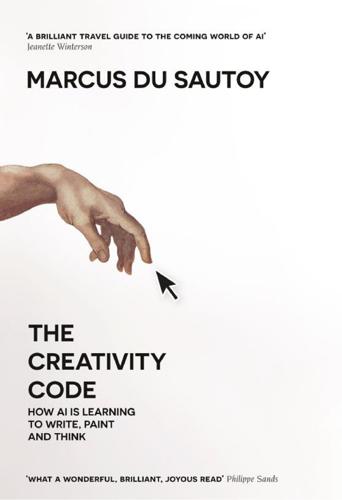
The Creativity Code: How AI Is Learning to Write, Paint and Think
by
Marcus Du Sautoy
Published 7 Mar 2019
Katherine, Unthought: The Power of the Cognitive Nonconscious, University of Chicago Press, 2017 Hofstadter, Douglas, Gödel, Escher, Bach: An Eternal Golden Braid, Penguin Books, 1979 , Fluid Concepts and Creative Analogies: Computer Models of the Fundamental Mechanisms of Thought, Basic Books 1995 , I am a Strange Loop, Basic Books, 2007 Kasparov, Garry, Deep Thinking: Where Artificial Intelligence Ends and Human Creativity Begins, John Murray, 2017 McAfee, Andrew and Erik Brynjolfsson, Machine Platform Crowd: Harnessing Our Digital Future, Norton, 2017 McCormack, Jon and Mark d’Inverno (eds.), Computers and Creativity, Springer, 2012 Monbiot, George, Out of the Wreckage: A New Politics for an Age of Crisis, Verso, 2017 Montfort, Nick, World Clock, Bad Quarto, 2013 Moretti, Franco, Graphs, Maps, Trees: Abstract Models for Literary History, Verso, 2005 Paul, Elliot Samuel and Scott Barry Kaufman (eds.), The Philosophy of Creativity: New Essays, OUP, 2014 Shalev-Shwartz, Shai and Shai Ben-David, Understanding Machine Learning: From Theory to Algorithms, CUP, 2014 Steels, Luc, The Talking Heads Experiment: Origins of Words and Meanings, Language Science Press, 2015 Steiner, Christopher, Automate This: How Algorithms Took Over the Markets, Our Jobs, and the World, Penguin Books, 2012 Tatlow, Ruth, Bach and the Riddle of the Number Alphabet, CUP, 1991 , Bach’s Numbers: Compositional Proportions and Significance, CUP, 2015 Tegmark, Max, Life 3.0: Being Human in the Age of Artificial Intelligence, Allen Lane, 2017 Wilson, Edward O., The Origins of Creativity, Allen Lane, 2017 Yorke, John, Into the Woods: A Five Act Journey into Story, Penguin Books, 2013 Papers For papers with references to arXiv visit the open access archive of papers at https://arxiv.org/.
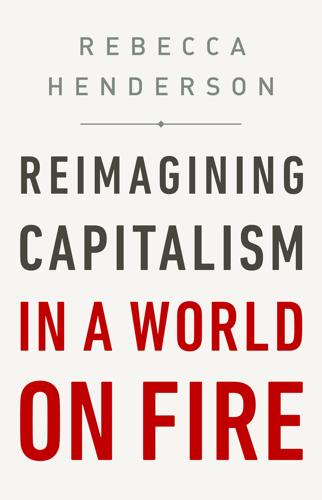
Reimagining Capitalism in a World on Fire
by
Rebecca Henderson
Published 27 Apr 2020
Journal of Economic Perspectives 24, no. 1 (2010): 203–224; Bloom and Van Reenen, “Human Resource Management and Productivity,” in Handbook of Labor Economics, vol. 4, ed., Orley Ashenfelter and David Card (Amsterdam: Elsevier and North-Holland, 2011), 1697–1767; Nicholas Bloom et al., “The Impact of Competition on Management Quality: Evidence from Public Hospitals,” The Review of Economic Studies 82, no. 2 (2015): 457–489; Nicholas Bloom et al. “Does Management Matter? Evidence from India,” Quarterly Journal of Economics 128, no. 1 (2013): 1–51; Nicholas Bloom, with Erik Brynjolfsson, Lucia Foster, Ron Jarmin, Megha Patnaik, Itay Saporta-Eksten, and John Van Reenen, “What Drives Differences in Management Practices,” American Economic Review (May 2019). 37. Jim Harter, “Employee Engagement on the Rise in the U.S.,” Gallup.com, Aug. 19, 2019, https://news.gallup.com/poll/241649/employee-engagement-rise.aspx. 38.
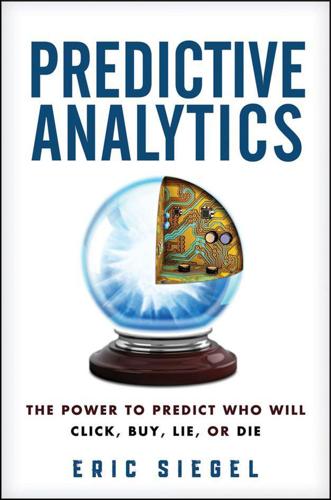
Predictive Analytics: The Power to Predict Who Will Click, Buy, Lie, or Die
by
Eric Siegel
Published 19 Feb 2013
Organizations record the aspects of our actions important to their function, so one extraordinarily elusive, daunting task has already been completed in the production of raw materials for PA: abstracting the infinite complexity of everyday life and thereby defining which of its endless details are salient. A new window on the world has opened. Professor Erik Brynjolfsson, an economist at Massachusetts Institute of Technology (MIT), compares this mass instrumentation of human behavior to another historic breakthrough in scientific observation. “The microscope, invented four centuries ago, allowed people to see and measure things as never before—at the cellular level,” said the New York Times, explaining Brynjolfsson’s perspective.
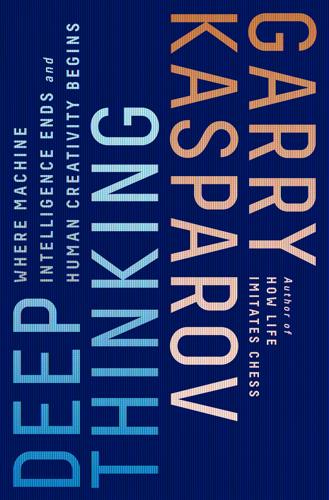
Deep Thinking: Where Machine Intelligence Ends and Human Creativity Begins
by
Garry Kasparov
Published 1 May 2017
I’m still not sure I’ve succeeded. Directly competing against a computer at the highest level of a human discipline is a unique experience. It’s not a video game against a computer AI or a metaphorical competition in the job market, the “race against” or “race with” the machines explained so capably by MIT’s Erik Brynjolfsson and Andrew McAfee in their books. John Henry competed with a steel-driving steam engine before a crowd of witnesses, his muscle and bone versus the implacable iron beast. Jesse Owens’s races against cars and motorcycles also boasted that same tragicomic asymmetry; it was exploitation and entertainment, not serious competition.

Adapt: Why Success Always Starts With Failure
by
Tim Harford
Published 1 Jun 2011
Army, 1993), chapter 1, and Tom Clancy, Armoured Cav (Berkeley Trade, 1994). 75 Examined large US firms from the mid-1980s throughout the 1990s: Raghuram Rajan & Julie Wulf (2003), ‘The flattening of the firm’, NBER Working Paper 9633. 76 To get the most out of that flexibility: Daron Acemoglu, Philippe Aghion, Claire Lelarge, John van Reenen & Fabrizio Zilibotti, ‘Technology, information and the decentralization of the firm’, Quarterly Journal of Economics, November 2007, and Erik Brynjolfsson & Lorin M. Hitt, ‘Beyond computation: information technology, organizational transformation and business performance’, Journal of Economic Perspectives, vol. 14, No. 4 (Fall 2000). 76 Didn’t have the authority to print his own propaganda: John Nagl, lecture at King’s College London, 2 February 2010. 76 He couldn’t tap into the massive USAID budget: Cloud & Jaffe, The Fourth Star, pp. 146–7. 76 Sean MacFarland’s men broadcast news from loudspeakers: Ricks, The Gamble, p. 70. 77 A careful statistical analysis later found: Eli Berman, Jacob N.

Remix: Making Art and Commerce Thrive in the Hybrid Economy
by
Lawrence Lessig
Published 2 Jan 2009
Alan Cohen, “The Great Race; No Startup Has Cashed In on the DVD’s Rapid Growth More Than Netflix. Now Blockbuster and Wal-Mart Want In. Can It Outrun Its Big Rivals?,” Fortune Small Business, December 2002–January 2003. “Media Center,” Netflix, available at link #61 (last visited April 1, 2008). 17. See Erik Brynjolfsson, Yu Jeffrey Hu, and Duncan Simester, “Goodbye Pareto Principle, Hello Long Tail: The Effect of Search Costs on the Concentration of Product Sales,” MIT Center for Digital Business Working Paper (2007); Paul L. Caron, “The Long Tail of Legal Scholarship,” Yale Law Journal 116 Pocket Part 38 (2006); Anita Elberse and Felix Oberholzer-Gee, “Superstars and Underdogs: An Examination of the Long Tail Phenomenon in Video Sales,” Harvard Business School No. 07-015 Working Paper Series; Indiana Resource Sharing Task Force, “Wagging the Long Tail: Sharing More of Less; Recommendations for Enhancing Resource Sharing in Indiana,” White Paper (2007); Anindya Ghose and Bin Gu, “Search Costs, Demand Structure and Long Tail in Electronic Markets: Theory and Evidence,” NET Institute Working Paper No. 06-19 (2006); Teruyasu Murakami, “The Long Tail and the Lofty Head of Video Content: The Possibilities of ‘Convergent Broadcasting,’ ” Nomura Research Institute, NRI Papers No. 113 (2007). 18.
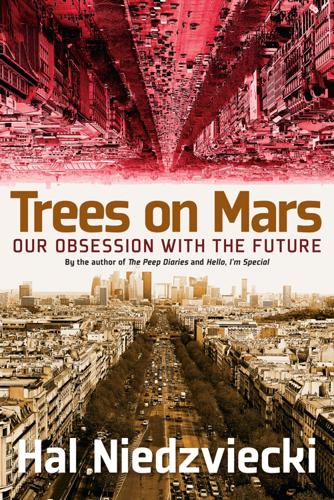
Trees on Mars: Our Obsession With the Future
by
Hal Niedzviecki
Published 15 Mar 2015
Opinion / Sunday Review, http://www.nytimes.com/2013/02/24/opinion/sunday/douthat-a-world-without-work.html. 20. Edgerton, The Shock of the Old, 56. 21. Ibid. 22. Ibid., 58. 23. Ibid., 66. 24. Ibid., 69. 25. Ibid., 58. 26. Autor and Dorn, “How Technology Wrecks the Middle Class.” 27. Erik Brynjolfsson and Andrew McAfee, Race Against the Machine (Lexington, Massachusetts: Digital Frontier Press, 2011). 28. Ibid. 29. Ibid. 30. Autor and Dorn, “How Technology Wrecks the Middle Class.” 31. Brynjolfsson and McAfee, Race Against the Machine. 32. Moisés Naím, “America’s Coming Manufacturing Revolution,” The Atlantic, April 21, 2014, http://www.theatlantic.com/business/archive/2014/04/americas-coming-manufacturing-revolution/360931/. 33.

Don't Be Evil: How Big Tech Betrayed Its Founding Principles--And All of US
by
Rana Foroohar
Published 5 Nov 2019
I also benefited tremendously from reading the work of former colleagues Steven Levy and Brad Stone, as well as other experts, including Jaron Lanier, Frank Foer, Cathy O’Neil, Eric Posner, Hal Varian, Carl Shapiro, Jonathan Haskel, Stian Westlake, Tim Wu, Saule Omarova, Robert C. Hockett, Andrew McAfee, Erik Brynjolfsson, Arun Sundararajan, Viktor Mayer-Schönberger, Kenneth Cukier, Thomas Ramge, Niall Ferguson, and Ken Auletta. At Google, I’d like to particularly thank Corey duBrowa, who endeavored to make it easier for me to ask tough questions, Kent Walker for taking his time to share thoughts on the record, and Karan Bhatia for his insights.

The AI Economy: Work, Wealth and Welfare in the Robot Age
by
Roger Bootle
Published 4 Sep 2019
She would surely not be interested in paying under the odds to secure the services of number two or three, let alone those far down the legal pecking order. This is nothing new. The great economist Alfred Marshall (who taught Keynes) wrote: “A rich client whose reputation or fortune or both are at stake will scarcely count any price too high to secure the services of the best man he can get.” Erik Brynjolfsson and Andrew McAfee cite the example of the athlete O. J. Simpson who paid the lawyer Alan Dershowitz millions to defend him in court. Admittedly, Dershowitz’s services were not digitized and sold to millions of people the way that Simpson’s were. Yet, they say, “Dershowitz is a superstar by proxy: he benefits from the ability of his superstar clients whose labor has been more directly leveraged by digitization and networks.”8 This talk about superstar athletes and authors may make it seem as though the winner-takes-all structure applies only in a very few isolated markets.

Markets, State, and People: Economics for Public Policy
by
Diane Coyle
Published 14 Jan 2020
While these specific figures may turn out to be too high, the contingent valuation approach is one of the few options available for measuring the value of such zero-price goods. * Thomas J. Lareau and Douglas A. Rae (1989), “Valuing WTP for Diesel Odor Reductions: An Application of Contingent Ranking Technique,” Southern Economic Journal 55, no. 3: 728–742. ** Erik Brynjolfsson, Felix Eggers, and Avinash Gannamaneni (2018), “Using Massive Online Choice Experiments to Estimate Changes in Well Being,” NBER Working Paper No. 24514, https://www.nber.org/papers/w24514. Table 8.1. Summary of Alternative Valuation Methods for CBA Method Basis Comments Estimate supply, demand functions Observed changes in prices/quantities Requires good data and econometrics; ignores externalities Revealed preference methods Hedonic prices Market prices (e.g., house prices, wages) Requires market data and data on relevant characteristics.

The Master Algorithm: How the Quest for the Ultimate Learning Machine Will Remake Our World
by
Pedro Domingos
Published 21 Sep 2015
Total Recall, by Gordon Moore and Jim Gemmell (Dutton, 2009), explores the implications of digitally recording everything we do. The Naked Future, by Patrick Tucker (Current, 2014), surveys the use and abuse of data for prediction in our world. Craig Mundie argues for a balanced approach to data collection and use in “Privacy pragmatism” (Foreign Affairs, 2014). The Second Machine Age, by Erik Brynjolfsson and Andrew McAfee (Norton, 2014), discusses how progress in AI will shape the future of work and the economy. “World War R,” by Chris Baraniuk (New Scientist, 2014) reports on the debate surrounding the use of robots in battle. “Transcending complacency on superintelligent machines,” by Stephen Hawking et al.

The Age of Entitlement: America Since the Sixties
by
Christopher Caldwell
Published 21 Jan 2020
“post-materialist” economy: Ronald Inglehart, Culture Shift in Advanced Industrial Society (Princeton: Princeton University Press, 1990), passim. “language really spoken by men”: William Wordsworth, preface to Lyrical Ballads, 1802 edition. “Data,” said Lawrence Summers: Andrew McAfee and Erik Brynjolfsson, “Human Work in the Robotic Future,” Foreign Affairs, July–August 2016, 139–50. “The personal computer”: Eric Zemmour, Le suicide français (Paris: Albin Michel, 2014), 218–19. (Author’s translation.) “evil . . . computerization enables”: Kevin Kelly, “Interview with the Luddite” (interview with Kirkpatrick Sale), Wired, June 1, 1995.

Deep Medicine: How Artificial Intelligence Can Make Healthcare Human Again
by
Eric Topol
Published 1 Jan 2019
It’s abundantly clear that there’s much more work to be done. JOBS I’ve lost count of the number of articles I’ve seen entitled “Will AI [or Robots] Take Your Job?” For all these negative prognostications, there seems to be an equal number going in the opposite direction. A go-to source for me is Erik Brynjolfsson, who directs MIT’s Initiative on the Digital Economy, and who has said, “Millions of jobs will be eliminated, millions of new jobs will be created and needed, and far more jobs will be transformed.”65 In terms of numbers, Cognizant Technology Solutions projects twenty-one new job categories, 19 million jobs lost, and 21 million new ones created in the next fifteen years.66 In the same vein, Jerry Kaplan, a Stanford adjunct faculty member who teaches AI, argues that “artificial intelligence will change the way that we live and work, improving our standard of living while shuffling jobs from one category to another in the familiar capitalist cycle of creation and destruction.”67 A 160-page report by the McKinsey Global Institute, agreeing with the overall trade-off, provided an in-depth global perspective, highlighting that the specific jobs gained and lost will vary markedly throughout different regions of the world.68 It’s clear that there will be a shift in and disruption of jobs, and the response to these changes is not as simple as training coal miners to become data miners.
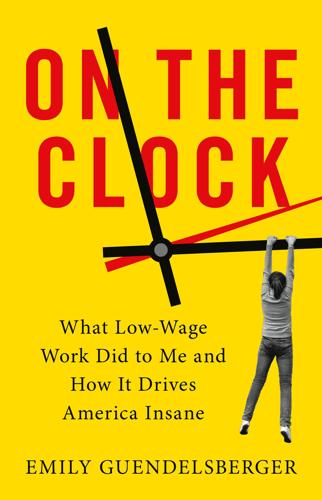
On the Clock: What Low-Wage Work Did to Me and How It Drives America Insane
by
Emily Guendelsberger
Published 15 Jul 2019
Ciulla The Betrayal of Work: How Low-Wage Jobs Fail 30 Million Americans, Beth Shulman Nomadland: Surviving America in the Twenty-First Century, Jessica Bruder Where Bad Jobs Are Better: Retail Jobs Across Countries and Companies, Francoise Carre and Chris Tilly “We Are All Fast-Food Workers Now”: The Global Uprising Against Poverty Wages, Annelise Orleck On Wanda Stone Age Economics, Marshall Sahlins Behave: The Biology of Humans at Our Best and Worst, Robert Sapolsky Scarcity: Why Having Too Little Means So Much, Sendhil Mullainathan and Eldar Shafir The Panopticon Writings, Jeremy Bentham Discipline and Punish: The Birth of the Prison, Michel Foucault Snakes in Suits: When Psychopaths Go to Work, Paul Babiak and Robert D. Hare Karoshi, National Defense Counsel for Victims of Karoshi On tech, automation, and the future of work The Second Machine Age: Work, Progress, and Prosperity in a Time of Brilliant Technologies, Erik Brynjolfsson and Andrew McAfee The Glass Cage: Automation and Us, Nicholas Carr Automate This: How Algorithms Came to Rule Our World, Christopher Steiner Algorithms to Live By: The Computer Science of Human Decisions, Brian Christian and Tom Griffiths Mindless: Why Smarter Machines Are Making Dumber Humans, Simon Head Rise of the Robots: Technology and the Threat of a Jobless Future, Martin Ford The Robots Are Coming!
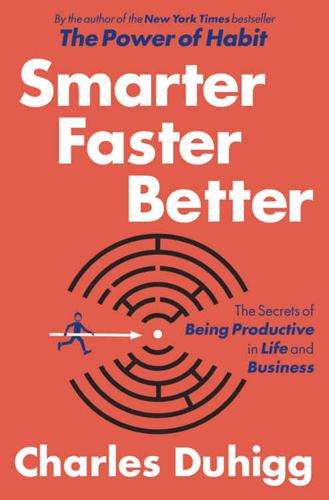
Smarter Faster Better: The Secrets of Being Productive in Life and Business
by
Charles Duhigg
Published 8 Mar 2016
In our study of mind wandering among pilots [Thoughts in Flight: Automation Use and Pilots’ Task-Related and Task-Unrelated Thought], we found that the pilot flying was thinking ‘task-unrelated thoughts’ about 30% of the time. The other pilot, the monitoring pilot, was mind wandering about 50% of the time. Why wouldn’t they? If you don’t give me something important or pressing to think about, I’ll come up with something myself.” people build mental models Sinan Aral, Erik Brynjolfsson, and Marshall Van Alstyne, “Information, Technology, and Information Worker Productivity,” Information Systems Research 23, no. 3 (2012): 849–67; Sinan Aral and Marshall Van Alstyne, “The Diversity-Bandwidth Trade-Off,” American Journal of Sociology 117, no. 1 (2011): 90–171; Nathaniel Bulkley and Marshall W.
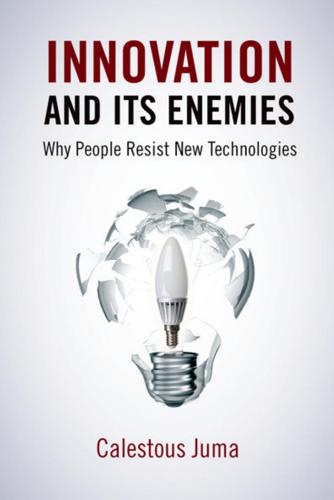
Innovation and Its Enemies
by
Calestous Juma
Published 20 Mar 2017
Van Eenennaam, Muir, and Hallermann, Unaccountable Regulatory Delay, 3. 48. Sabrina Tavernise, “F.D.A. Nominee Clears One Hurdle, but Others Remain,” New York Times, January 12, 2016. Chapter 11 1. Frank W. Geels, Technological Transitions and System Innovations: A Co-evolutionary and Socio-technical Analysis (Cheltenham, UK: Edward Elgar, 2005). 2. Erik Brynjolfsson and Andrew McAfee, The Second Machine Age: Work, Progress, and Prosperity in a Time of Brilliant Technologies (New York: Norton, 2014), 257. 3. Hasan Bakhshi, Carl Benedikt Frey, and Michael Osborne, Creativity vs. Robots: The Creative Economy and the Future of Employment (London: Nesta, 2015), 6. 4.
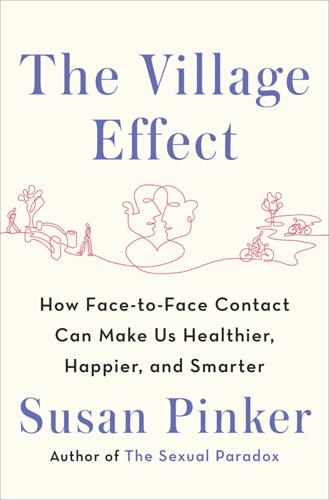
The Village Effect: How Face-To-Face Contact Can Make Us Healthier, Happier, and Smarter
by
Susan Pinker
Published 30 Sep 2013
Charles Duhigg, “What Does Your Credit-Card Company Know about You?” New York Times Magazine, May 17, 2009. 51. Alex Pentland, “To Signal Is Human: Real-Time Data Mining Unmasks the Power of Imitation, Kith and Charisma in Our Face-to-Face Social Networks,” American Scientist 98 (2010). 52. Sinan Aral, Erik Brynjolfsson, and M. Van Alstyne, “Productivity Effects of Information Diffusion in Networks,” Proceedings of the 28th Annual International Conference on Information Systems, Montreal, 2007; Sinan Aral and M. Van Alstyne, “Networks, Information and Social Capital,” paper presented at the International Conference on Network Science, New York, 2007. 53.

The Job: The Future of Work in the Modern Era
by
Ellen Ruppel Shell
Published 22 Oct 2018
not one of these tech dynamos Jerry Davis, “Re-imagining the Corporation,” paper presented at the annual meeting of the American Sociological Association, Denver, CO, August 2012. what one observer called the “yawning disparity” Thanks for this insight to sociologist Paul Starr, as expressed in his review of The Second Machine Age, by Andrew McAfee and Erik Brynjolfsson. See Paul Starr, “New Technology Doesn’t Make Us All Richer,” New Republic, July 6, 2014, https://newrepublic.com/article/118327/second-machine-age-reviewed-paul-starr. At the Global Entrepreneurial Summit at Stanford University See “Remarks by the President at Global Entrepreneurship Summit,” White House press release, June 25, 2016, https://obamawhitehouse.archives.gov/the-press-office/2016/06/25/remarks-president-global-entrepreneurship-summit-and-conversation-mark.

Blockchain Revolution: How the Technology Behind Bitcoin Is Changing Money, Business, and the World
by
Don Tapscott
and
Alex Tapscott
Published 9 May 2016
—Yochai Benkler, Berkman Professor of Entrepreneurial Legal Studies, Harvard Law School “If you work in business or government, you need to understand the blockchain revolution. No one has written a more thoroughly researched or engaging book on this topic than Tapscott and Tapscott.” —Erik Brynjolfsson, Professor at MIT; coauthor of The Second Machine Age “An indispensable and up-to-the-minute account of how the technology underlying bitcoin could—and should—unleash the true potential of a digital economy for distributed prosperity.” —Douglas Rushkoff, author of Present Shock and Throwing Rocks at the Google Bus “Technological change that used to develop over a generation now hits us in a relative blink of the eye, and no one tells this story better than the Tapscotts.”
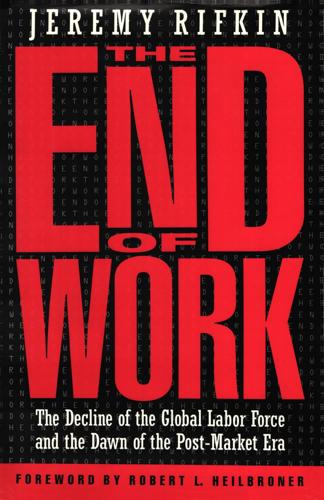
The End of Work
by
Jeremy Rifkin
Published 28 Dec 1994
In 1992 productivity soared to nearly 3 percent, the best performance of any year in more than two decades. 6 MIT's Sloan School of Management published productivity data collected over a five-year period from 1987 to 1991 for more than 380 giant firms that together generated nearly $2 trillion in output per 92 THE THIRD INDUSTRIAL REVOLUTION year. The gains in productivity were impressive, suggesting that the vast amount of money invested in information technology for more than a decade had begun to payoff. The authors of the study, Erik Brynjolfsson and Lorin Hitt, found that between 1987 and 1991, return on investment (ROI) for computer capital averaged 54 percent in manufacturing and 68 percent for manufacturing and service combined. Brynjolfsson said that computers not only "added a great deal to productivity," but also contributed markedly to downsizing and the decline in the size of firms. 7 Morgan Stanley's Stephen Roach who, along with others on Wall Street, had raised the issue of a productivity paradox, dropped his earlier reservations, proclaiming that "The U.S. economy is now entering its first productivity-driven recovery since the 1960s, courtesy of efficiency gains being realized through the use of information technology."
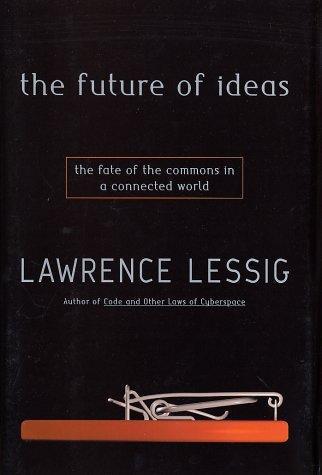
The Future of Ideas: The Fate of the Commons in a Connected World
by
Lawrence Lessig
Published 14 Jul 2001
The claim is not that there is equal access to equally valuable data. Amazon.com is in a better position to market than tinybookseller.com. Likewise, it may well be that scale here makes all the difference. There have been suggestions that these architectures may reduce competition. See Yannis Bakos and Erik Brynjolfsson, “Bundling and Competition on the Internet,” Marketing Science, January 2000, available at http://ecommerce.mit.edu/erik/bci-final.pdf (finding that “economies of aggregation” for information goods could adversely affect competition). At this stage, however, I don't think we know enough to say.
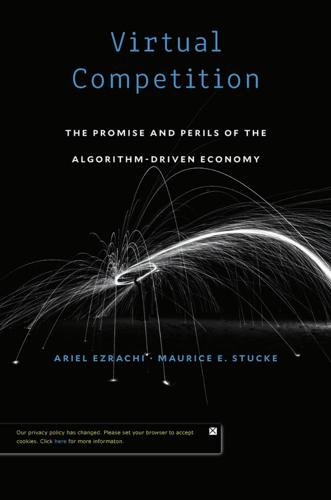
Virtual Competition
by
Ariel Ezrachi
and
Maurice E. Stucke
Published 30 Nov 2016
Suzanne Kapner, “Black Friday Shopping—with Thinner Crowds,” Wall Street Journal, November 28, 2015, http://www.wsj.com/articles/black-friday-shoppingwith -thinner-crowds-1448639398. Ibid. Ibid. As the newspaper also noted, 36 percent of consumers planned to shop online during the 2015 holiday season, up from 19 percent who said so in 2014; only 18 percent planned to shop in physical stores, down from 35 percent a year ago. Ibid. Andrew McAfee and Erik Brynjolfsson, “Big Data: The Management Revolution,” Harvard Business Review, October 2012, https://hbr.org/2012/10 /big-data-the-management-revolution/ar/. Behavioral advertising is the “collection of data from a par ticu lar computer or device regarding Web viewing behaviors over time and across non-affi liated Web sites for the purpose of using such data to predict user preferences or interests to deliver advertising to that computer or device based on the preferences or interests inferred from such Web viewing behav iors”; Digital Advertising Alliance, Self-Regulatory Principles for Online Behavioral Advertising Implementation Guide: Frequently Asked Questions (October 2010), http://www.aboutads.info/resource/download/OBA%20Self-Reg%20 Implementation%20Guide%20-%20Frequently%20Asked%20Questions.pdf.

The Lonely Century: How Isolation Imperils Our Future
by
Noreena Hertz
Published 13 May 2020
Daniel Susskind, fellow at the University of Oxford and author of A World Without Work ‘We’re surrounded by communication technologies and social media, yet loneliness is taking a huge toll on our economy, our health and our democracy. With a rare combination of rigorous research and powerful insights, Noreena Hertz masterfully explains the many facets of our Lonely Century and how we can do better, as individuals and as a society. Highly Recommended!’ Erik Brynjolfsson, Professor at Stanford University and co-author of The Second Machine Age THE LONELY CENTURY Coming Together in a World that’s Pulling Apart Noreena Hertz www.sceptrebooks.co.uk First published in Great Britain in 2020 by Sceptre An Imprint of Hodder & Stoughton An Hachette UK company Copyright © Noreena Hertz 2020 The right of Noreena Hertz to be identified as the Author of the Work has been asserted by her in accordance with the Copyright, Designs and Patents Act 1988.
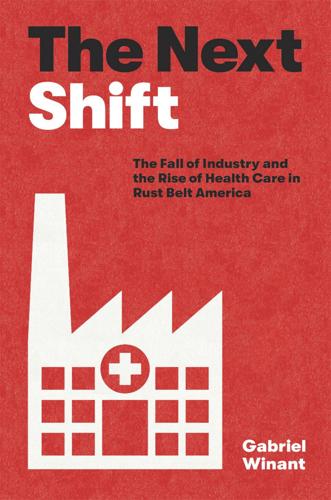
The Next Shift: The Fall of Industry and the Rise of Health Care in Rust Belt America
by
Gabriel Winant
Published 23 Mar 2021
For the first view, see Moishe Postone, Time, Labor, and Social Domination: A Reinterpretation of Marx’s Critical Theory (Cambridge: Cambridge University Press, 1993); Michael Denning, “Wageless Life,” New Left Review 66 (November–December 2010), 79–97; Kathi Weeks, The Problem with Work: Feminism, Marxism, Antiwork Politics, and Post-Work Imaginaries (Durham, NC: Duke University Press, 2011); Aaron Benanav, “Automation and the Future of Work—1,” New Left Review 119 (September–October 2019), 5–38; Aaron Benanav, “Automation and the Future of Work—2,” New Left Review 120 (November–December 2019), 117–146. For more mainstream approaches, see Erik Brynjolfsson and Andrew McAfee, The Second Machine Age: Work, Progress, and Prosperity in a Time of Brilliant Technologies (New York: Norton, 2014); Richard Baldwin, The Globotics Upheaval: Globalization, Robotics, and the Future of Work (New York: Oxford University Press, 2019). For the second view, see Arne L.
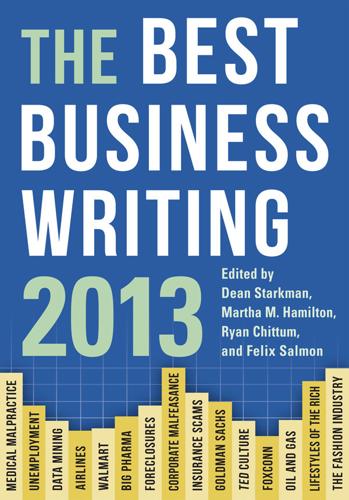
The Best Business Writing 2013
by
Dean Starkman
Published 1 Jan 2013
Speaking of his more than one million employees worldwide, he said in January, according to the official Xinhua news agency: “As human beings are also animals, to manage one million animals gives me a headache.” The falling costs and growing sophistication of robots have touched off a renewed debate among economists and technologists over how quickly jobs will be lost. This year, Erik Brynjolfsson and Andrew McAfee, economists at the Massachusetts Institute of Technology, made the case for a rapid transformation. “The pace and scale of this encroachment into human skills is relatively recent and has profound economic implications,” they wrote in their book, Race Against the Machine. In their minds, the advent of low-cost automation foretells changes on the scale of the revolution in agricultural technology over the last century, when farming employment in the United States fell from 40 percent of the work force to about 2 percent today.
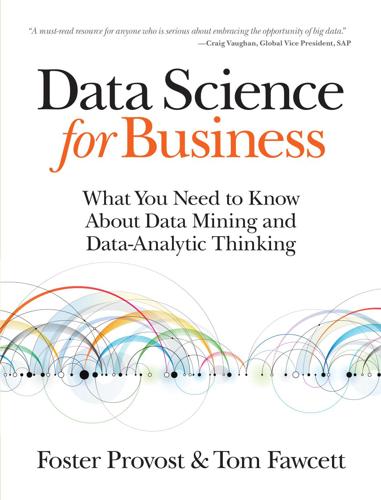
Data Science for Business: What You Need to Know About Data Mining and Data-Analytic Thinking
by
Foster Provost
and
Tom Fawcett
Published 30 Jun 2013
Or, she could base her selection on the analysis of data regarding how consumers react to different ads. She could also use a combination of these approaches. DDD is not an all-or-nothing practice, and different firms engage in DDD to greater or lesser degrees. The benefits of data-driven decision-making have been demonstrated conclusively. Economist Erik Brynjolfsson and his colleagues from MIT and Penn’s Wharton School conducted a study of how DDD affects firm performance (Brynjolfsson, Hitt, & Kim, 2011). They developed a measure of DDD that rates firms as to how strongly they use data to make decisions across the company. They show that statistically, the more data-driven a firm is, the more productive it is—even controlling for a wide range of possible confounding factors.

Army of None: Autonomous Weapons and the Future of War
by
Paul Scharre
Published 23 Apr 2018
Technology, https://www.theguardian.com/technology/2017/jan/30/libratus-poker-artificial-intelligence-professional-human-players-competition. 242 “imperfect information” game: Will Knight, “Why Poker Is a Big Deal for Artificial Intelligence,” MIT Technology Review, January 23, 2017, https://www.technologyreview.com/s/603385/why-poker-is-a-big-deal-for-artificial-intelligence/. 242 world’s top poker players had handily beaten: Cameron Tung, “Humans Out-Play an AI at Texas Hold ’Em—For Now,” WIRED, May 21, 2015, https://www.wired.com/2015/05/humans-play-ai-texas-hold-em-now/. 242 upgraded AI “crushed”: Cade Metz, “A Mystery AI Just Crushed the Best Human Players at Poker,” WIRED, January 31, 2017, https://www.wired.com/2017/01/mystery-ai-just-crushed-best-human-players-poker/. 242 “as soon as something works”: Micah Clark, interview, May 4, 2016. 242 “as soon as a computer can do it”: Stuart Armstrong, interview, November 18, 2016. This point was also made by authors of a Stanford study of AI. Peter Stone, Rodney Brooks, Erik Brynjolfsson, Ryan Calo, Oren Etzioni, Greg Hager, Julia Hirschberg, Shivaram Kalyanakrishnan, Ece Kamar, Sarit Kraus, Kevin Leyton-Brown, David Parkes, William Press, AnnaLee Saxenian, Julie Shah, Milind Tambe, and Astro Teller. “Artificial Intelligence and Life in 2030.” One Hundred Year Study on Artificial Intelligence: Report of the 2015–2016 Study Panel, Stanford University, Stanford, CA, September 2016, 13. http://ai100.stanford.edu/2016-report. 243 “responsible use”: AAAI.org, http://www.aaai.org/home.html. 243 “most of the discussion about superintelligence”: Tom Dietterich, interview, April 27, 2016. 243 “runs counter to our current understandings”: Thomas G.

Coders: The Making of a New Tribe and the Remaking of the World
by
Clive Thompson
Published 26 Mar 2019
detect cancer in CT scans: Cade Metz, “Using AI to Detect Cancer, Not Just Cats,” Wired, May 11, 2017, accessed August 19, 2018, https://www.wired.com/2017/05/using-ai-detect-cancer-not-just-cats. 74 minutes a day using it: Anu Hariharan, “The Hidden Forces Behind Toutiao: China’s Content King,” Y Combinator (blog), October 12, 2017, accessed August 19, 2018, https://blog.ycombinator.com/the-hidden-forces-behind-toutiao-chinas-content-king. “That’s my question”: Thompson, “What Is I.B.M.’s Watson?” “it’s going to work”: Erik Brynjolfsson and Andrew McAfee, “The Business of Artificial Intelligence,” Harvard Business Review (July 2017), accessed August 19, 2018, https://hbr.org/cover-story/2017/07/the-business-of-artificial-intelligence. “ocean of math”: Jason Tanz, “Soon We Won’t Program Computers. We’ll Train Them Like Dogs,” Wired, May 17, 2016, accessed August 19, 2018, https://www.wired.com/2016/05/the-end-of-code/.

Evil Geniuses: The Unmaking of America: A Recent History
by
Kurt Andersen
Published 14 Sep 2020
Might the experiences of 2020 transform Americans’ understanding of what government is for, as the Great Depression and New Deal did? Won’t social distancing and fear of the next novel virus accelerate the automation and general digitalization of work? In any event, what we know is that going forward, “the choice isn’t between automation and non-automation,” says Erik Brynjolfsson, one of the MIT economists focused on digital technology and work. “It’s between whether you use the technology in a way that creates shared prosperity, or more concentration of wealth.” We will presumably have an economy that keeps growing overall—that could start growing faster, maybe much faster—with people doing less and less of the necessary work.
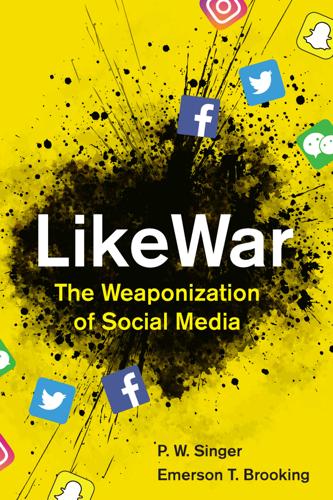
Likewar: The Weaponization of Social Media
by
Peter Warren Singer
and
Emerson T. Brooking
Published 15 Mar 2018
Le et al., “Building High-Level Features Using Large Scale Unsupervised Learning,” in Proceedings of the 29th International Conference on Machine Learning (Edinburgh, 2012). 249 pictures of cats: John Markoff, “How Many Computers to Identity a Cat? 16,000,” New York Times, June 25, 2012, http://www.nytimes.com/2012/06/26/technology/in-a-big-network-of-computers-evidence-of-machine-learning.html. 249 “We never told it”: Ibid. 250 where to put the traffic lights: Erik Brynjolfsson and Andrew McAfee, “The Business of Artificial Intelligence,” Harvard Business Review, July 2017, https://hbr.org/2017/07/the-business-of-artificial-intelligence. 250 more than a million: Joaquin Quiñonero Candela, “Building Scalable Systems to Understand Content,” Facebook Code, February 2, 2017, https://code.facebook.com/posts/1259786714075766/building-scalable-systems-to-understand-content/. 250 wearing a black shirt: Ibid. 250 80 percent: “An Update on Our Commitment to Fight Violent Extremist Content Online,” Official Blog, YouTube, October 17, 2017, https://youtube.googleblog.com/2017/10/an-update-on-our-commitment-to-fight.html. 250 “attack scale”: Andy Greenberg, “Inside Google’s Internet Justice League and Its AI-Powered War on Trolls,” Wired, September 19, 2016, https://www.wired.com/2016/09/inside-googles-internet-justice-league-ai-powered-war-trolls/. 251 about 90 percent: Ibid. 251 thoughts of suicide: Vanessa Callison-Burch, Jennifer Guadagno, and Antigone Davis, “Building a Safer Community with New Suicide Prevention Tools,” Facebook Newsroom, March 1, 2017, https://newsroom.fb.com/news/2017/03/building-a-safer-community-with-new-suicide-prevention-tools/%20https://newsroom.fb.com/news/2017/03/building-a-safer-community-with-new-suicide-prevention-tools/. 251 database of facts: Jonathan Stray, “The Age of the Cyborg,” Columbia Journalism Review, Fall/Winter 2016, https://www.cjr.org/analysis/cyborg_virtual_reality_reuters_tracer.php. 251 managing the “trade-offs”: Kurt Wagner, “Facebook’s AI Boss: Facebook Could Fix Its Filter Bubble If It Wanted To,” Recode, December 1, 2016, https://www.recode.net/2016/12/1/13800270/facebook-filter-bubble-fix-technology-yann-lecun. 251 Their more advanced version: For a good overview, see “Cleverbot Data for Machine Learning,” Existor, accessed March 20, 2018, https://www.existor.com/products/cleverbot-data-for-machine-learning/. 252 machine-driven communications tools: Matt Chessen, “Understanding the Psychology Behind Computational Propaganda,” in Can Public Diplomacy Survive the Internet?

Architects of Intelligence
by
Martin Ford
Published 16 Nov 2018
This income inequality is something that is particularly apparent in the US, but also to a smaller scale in Western Europe. The Gini index—a measure of income inequality—of France or Scandinavia is around 25 or 30. In the US, it’s 45, and that’s the same level as third-world countries. In the US, Erik Brynjolfsson, an economist at MIT, wrote a couple of books with his colleague from MIT, Andrew McAfee, studying the impact of technology on the economy. They say that the median income of a household in America has been flat since the 1980s where we had Reaganomics and the lowering of taxes for higher incomes, whereas productivity has gone up more or less continuously.

Empire of AI: Dreams and Nightmares in Sam Altman's OpenAI
by
Karen Hao
Published 19 May 2025
GO TO NOTE REFERENCE IN TEXT Not long after, in 2021: Karen Hao and Heidi Swart, “South Africa’s Private Surveillance Machine Is Fueling a Digital Apartheid,” MIT Technology Review, April 19, 2022, technologyreview.com/2022/04/19/1049996/south-africa-ai-surveillance-digital-apartheid. GO TO NOTE REFERENCE IN TEXT From 2013 to 2022, corporate: Nestor Maslej, Loredana Fattorini, Raymond Perrault, Vanessa Parli, Anka Reuel, Erik Brynjolfsson et al., AI Index Report 2024, Institute for Human-Centered AI, Stanford University, April 2024, 242, aiindex.stanford.edu/report. GO TO NOTE REFERENCE IN TEXT In 2021, Alphabet and Meta: Steven Rosenbush, “Big Tech Is Spending Billions on AI Research. Investors Should Keep an Eye Out,” Wall Street Journal, March 8, 2022, wsj.com/articles/big-tech-is-spending-billions-on-ai-research-investors-should-keep-an-eye-out-11646740800.

Future Crimes: Everything Is Connected, Everyone Is Vulnerable and What We Can Do About It
by
Marc Goodman
Published 24 Feb 2015
Osborne, “The Future of Employment,” Oxford Martin, Sept. 17, 2013, http://www.oxfordmartin.ox.ac.uk/. 35 Those working in the transportation field: For an excellent discussion on the future of robots, automation, and work, see Kevin Kelly, “Better Than Human: Why Robots Will—and Must—Take Our Jobs,” Wired, Dec. 24, 2012; Erik Brynjolfsson and Andrew McAfee, The Second Machine Age: Work, Progress, and Prosperity in a Time of Brilliant Technologies (New York: W. W. Norton, 2014). 36 News outlets such as: Francie Diep, “Associated Press Will Use Robots to Write Articles,” Popular Science, July 1, 2014. 37 Many believe that it is the growth: Paul Krugman, “Robots and Robber Barons,” New York Times, Dec. 9, 2012. 38 In mid-2014, a young woman: Lindsey Bever, “Seattle Woman Spots Drone Outside Her 26th-Floor Apartment Window, Feels ‘Violated,’ ” Washington Post, June 25, 2014. 39 “Air is a public”: Rebecca J.

The Code: Silicon Valley and the Remaking of America
by
Margaret O'Mara
Published 8 Jul 2019
Norbert Wiener’s Cybernetics (1948) and its popularizing contemporary, Edmund Callis Berkeley’s Giant Brains, or, Machines That Think (1949), remain fascinating and revealing reads. Secondary works that helped inform this part of the story include Daniel Crevier, AI (1993); John Markoff, Machines of Loving Grace (2015); and Thomas Rid, Rise of the Machines (2016). The impact of automation and robotics on work is a deservedly hot topic. For an optimistic take, see Erik Brynjolfsson and Andrew McAfee, The Second Machine Age (2016); for a more sobering one, see Martin Ford, Rise of the Robots (2015). Properly placing gig-economy phenomena in the context of a longer history of corporate restructuring and contingent work (in Silicon Valley and elsewhere) is Louis Hyman, Temp (2018).

Political Order and Political Decay: From the Industrial Revolution to the Globalization of Democracy
by
Francis Fukuyama
Published 29 Sep 2014
Hacker and Paul Pierson, “Winner-Take-All Politics: Public Policy, Political Organization, and the Precipitous Rise of Top Incomes in the United States,” Politics and Society 38, no. 2 (2010): 152–204; Hacker and Pierson, Winner-Take-All Politics: How Washington Made the Rich Richer—and Turned Its Back on the Middle Class (New York: Simon & Schuster, 2010). 11. See Raghuram G. Rajan, Fault Lines: How Hidden Fractures Still Threaten the World Economy (Princeton: Princeton University Press, 2010). 12. See Erik Brynjolfsson and Andrew McAfee, The Second Machine Age: Work, Progress, and Prosperity in a Time of Brilliant Technologies (New York: Norton, 2014). 13. Robert H. Frank and Philip J. Cook, The Winner-Take-All Society (New York: Free Press, 1995). 14. See Fukuyama, Origins of Political Order, pp. 460–68. 15.

The Age of Surveillance Capitalism
by
Shoshana Zuboff
Published 15 Jan 2019
Frey and Osborne, “The Future of Employment”; Martin Krzywdzinski, “Automation, Skill Requirements and Labour-Use Strategies: High-Wage and Low-Wage Approaches to High-Tech Manufacturing in the Automotive Industry,” New Technology, Work and Employment 32, no. 3 (2017): 247–67, https://doi.org/10.1111/ntwe.12100; Frey, “Doing Capitalism”; William Lazonick, “Labor in the Twenty-First Century: The Top 0.1% and the Disappearing Middle-Class” (working paper, Institute for New Economic Thinking, February 2015), https://www.ineteconomics.org/research/research-papers/labor-in-the-twenty-first-century-the-top-0-1-and-the-disappearing-middle-class; Dirk Antonczyk, Thomas DeLeire, and Bernd Fitzenberger, “Polarization and Rising Wage Inequality: Comparing the U.S. and Germany” (IZA Discussion Paper, Institute for the Study of Labor, March 2010), https://ideas.repec.org/p/iza/izadps/dp4842.html; Erik Brynjolfsson and Andrew McAfee, The Second Machine Age: Work, Progress, and Prosperity in a Time of Brilliant Technologies (New York: W. W. Norton, 2016); Daron Acemoglu and David Autor, “What Does Human Capital Do? A Review of Goldin and Katz’s ‘The Race Between Education and Technology,’” Journal of Economic Literature 50, no. 2 (2012): 426–63; Sang Yoon Lee and Yongseok Shin, “Horizontal and Vertical Polarization: Task-Specific Technological Change in a Multi-Sector Economy” (SSRN Scholarly Paper, Rochester, NY: Social Science Research Network, March 1, 2017), https://papers.ssrn.com/abstract=2941261. 15.

Bourgeois Dignity: Why Economics Can't Explain the Modern World
by
Deirdre N. McCloskey
Published 15 Nov 2011
[Yet] it achieves what usually only love can do: the divination of the innermost wishes of the other, even before he himself becomes aware of them. . . . Modern competition is described as the fight of all against all, but at the same time it is the fight of all for all.13 8 Or from the Right and Middle And there are doubts from the right, too. Some students of the economy, such as Robert Gordon, Lawrence Summers, Erik Brynjolfsson, Andrew McFee, Edmund Phelps, Edward E. Gordon, Jeffrey Sachs, Laurence Kotlikoff, and Tyler Cowen, have argued recently that countries in the position of the United States, on the frontier of betterment, are facing a slowdown, with a skill shortage, and that technological unemployment will be the result.1 Maybe.

The Rise and Fall of American Growth: The U.S. Standard of Living Since the Civil War (The Princeton Economic History of the Western World)
by
Robert J. Gordon
Published 12 Jan 2016
THE INVENTIONS THAT ARE NOW FORECASTABLE Despite the slow growth of TFP recorded by the data of the decade since 2004, commentators view the future of technology with great excitement. Nouriel Roubini writes, “[T]here is a new perception of the role of technology. Innovators and tech CEOs both seem positively giddy with optimism.”44 The well-known pair of techno-optimists Erik Brynjolfsson and Andrew McAfee assert that “we’re at an inflection point” between a past of slow technological change and a future of rapid change.45 They appear to believe that Big Blue’s chess victory and Watson’s victory on the TV game show Jeopardy presage an age in which computers outsmart humans in every aspect of human work effort.

Artificial Intelligence: A Modern Approach
by
Stuart Russell
and
Peter Norvig
Published 14 Jul 2019
Norbert Wiener’s prescient book The Human Use of Human Beings (1950) argues for the benefits of automation in freeing people from drudgery while offering more creative work, but also discusses several dangers that we recognize as problems today, particularly the problem of value alignment. The book Disrupting Unemployment (Nordfors et al., 2018) discuss some of the ways that work is changing, opening opportunities for new careers. Erik Brynjolfsson and Andrew McAfee address these themes and more in their books Race Against the Machine (2011) and The Second Machine Age (2014). Ford (2015) describes the challenges of increasing automation, and West (2018) provides recommendations to mitigate the problems, while MIT’s Thomas Malone (2004) shows that many of the same issues were apparent a decade earlier, but at that time were attributed to worldwide communication networks, not to automation. 1For example, the opera Coppélia (1870), the novel Do Androids Dream of Electric Sheep?